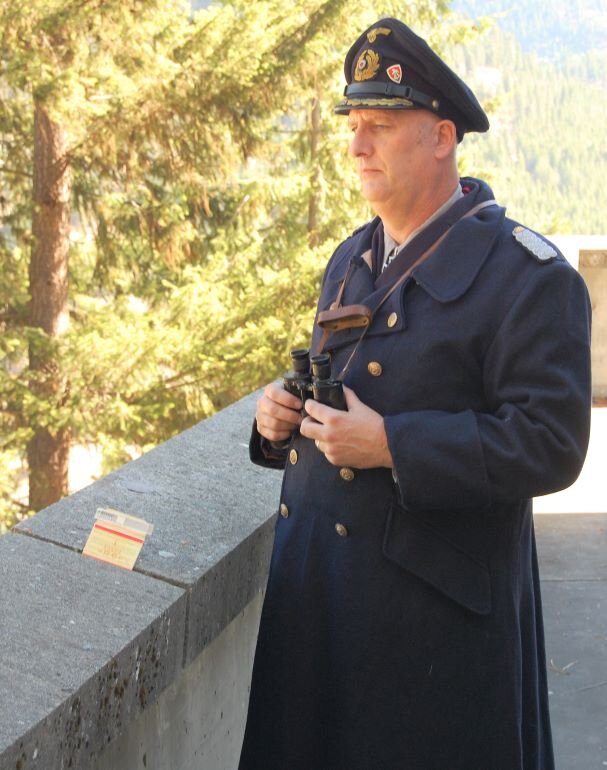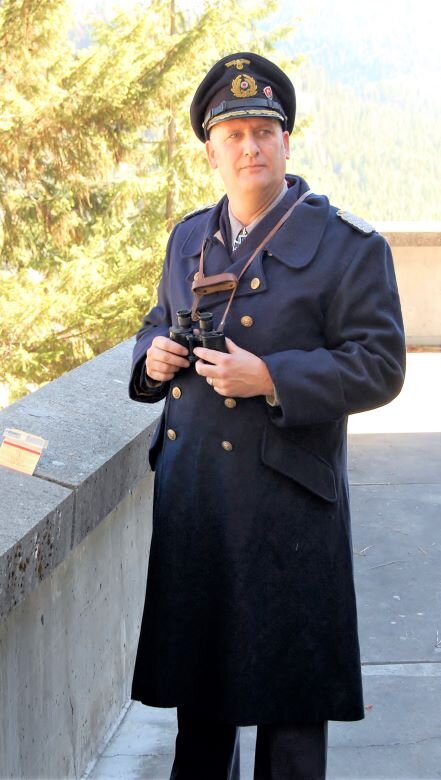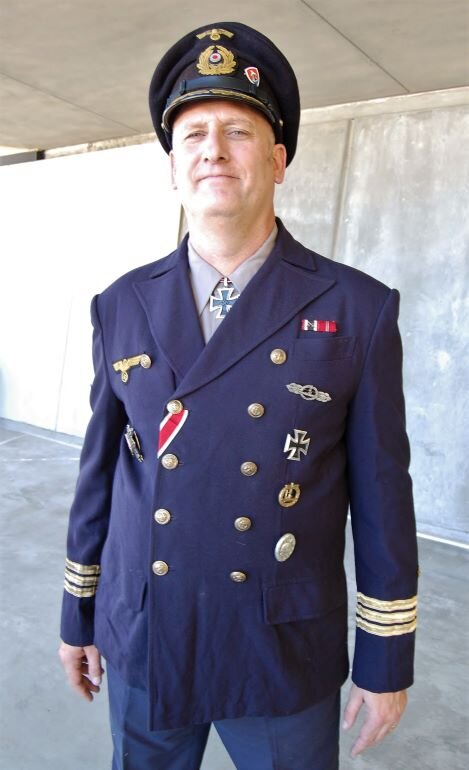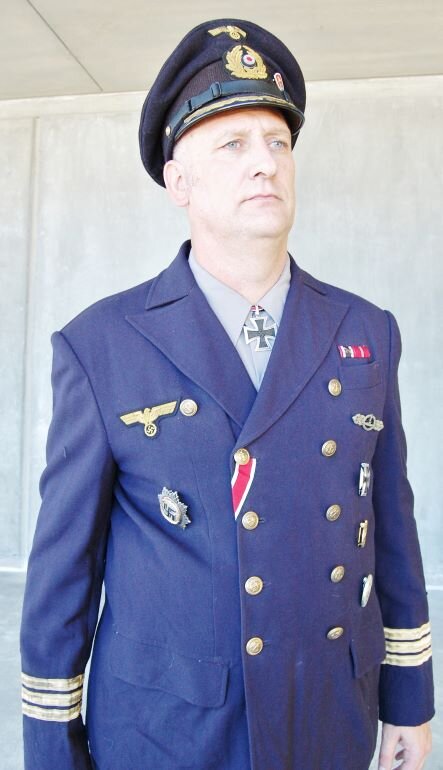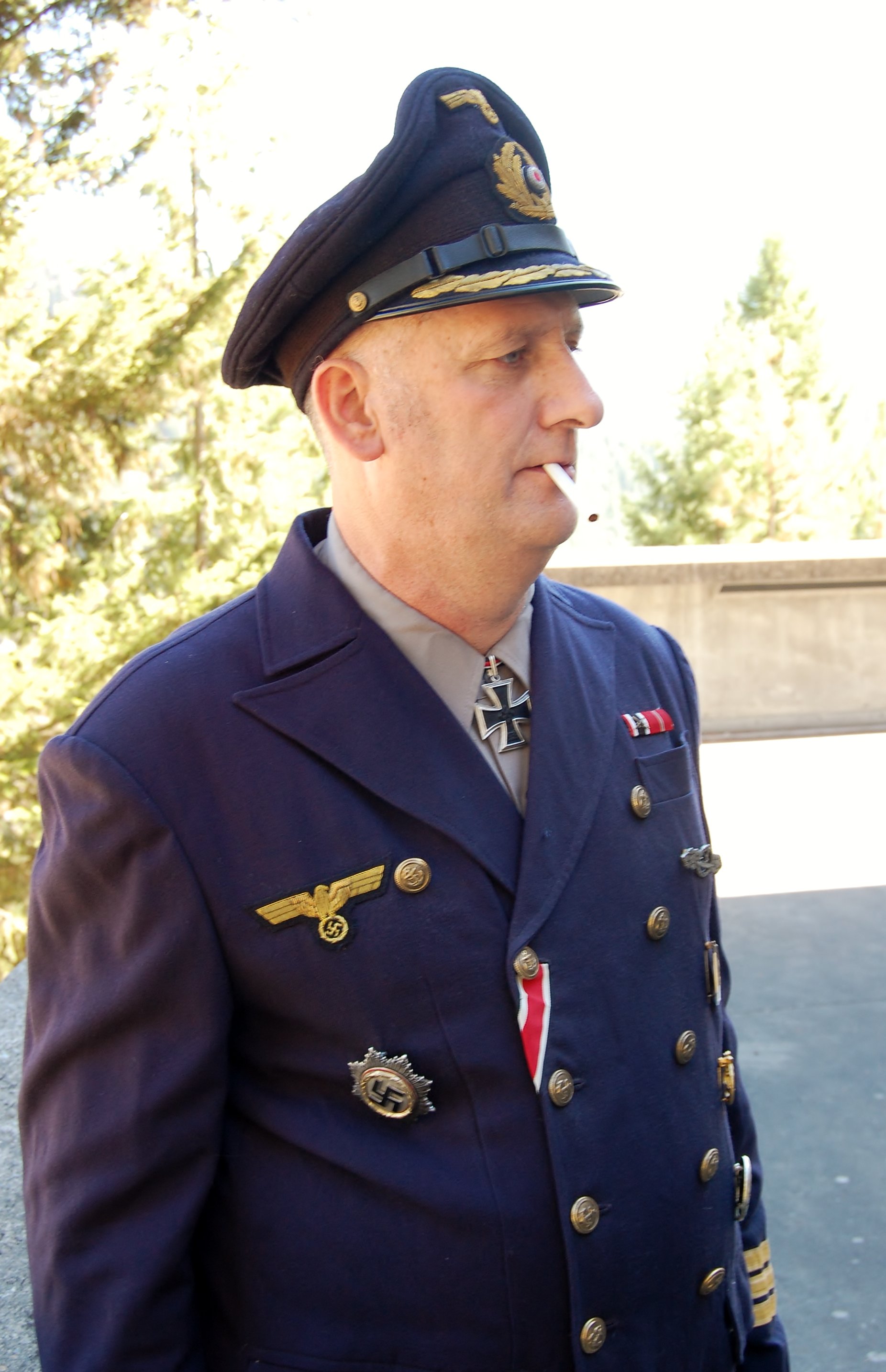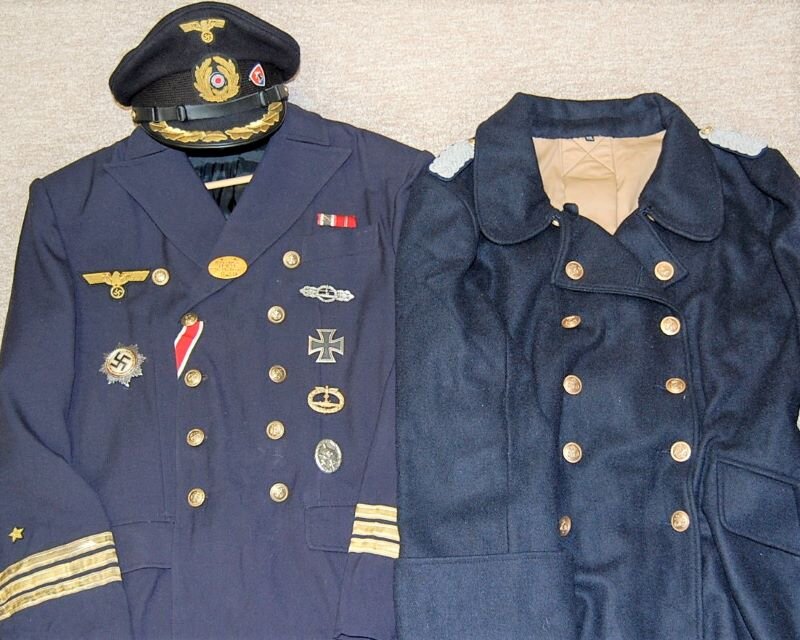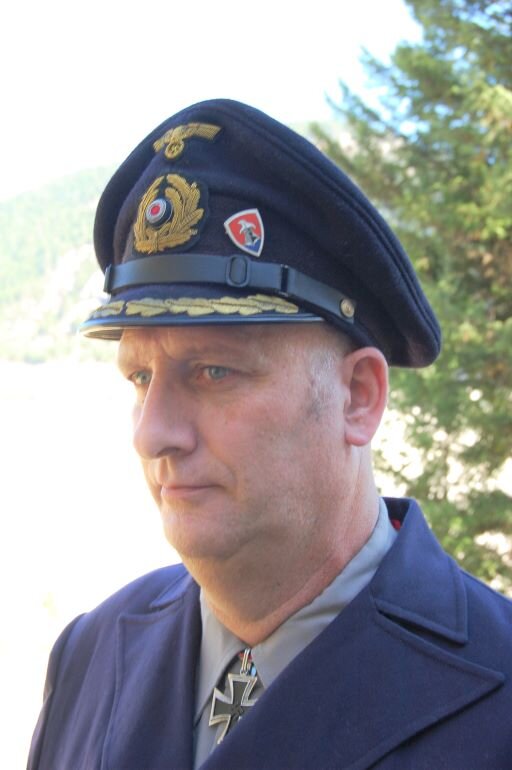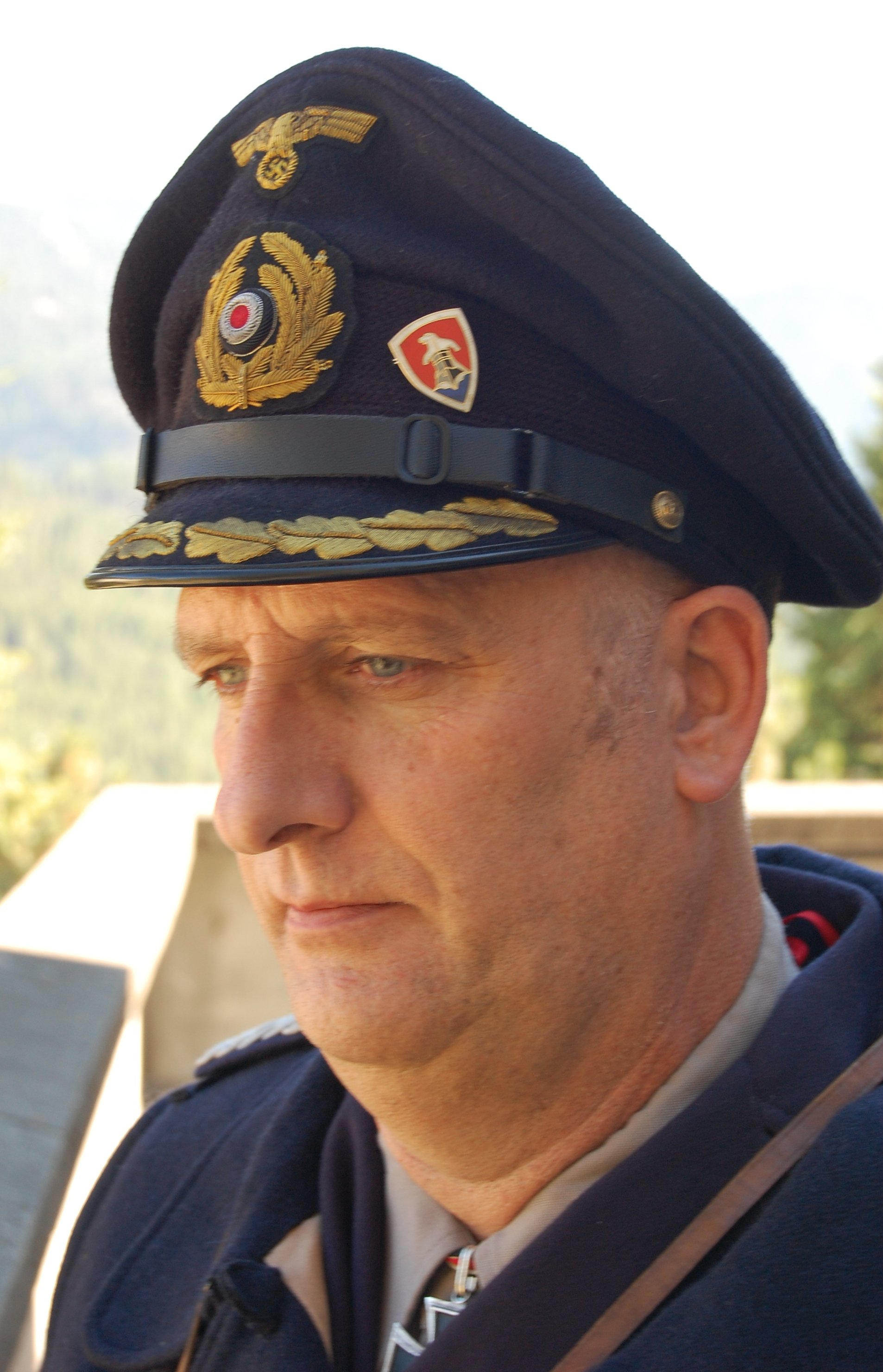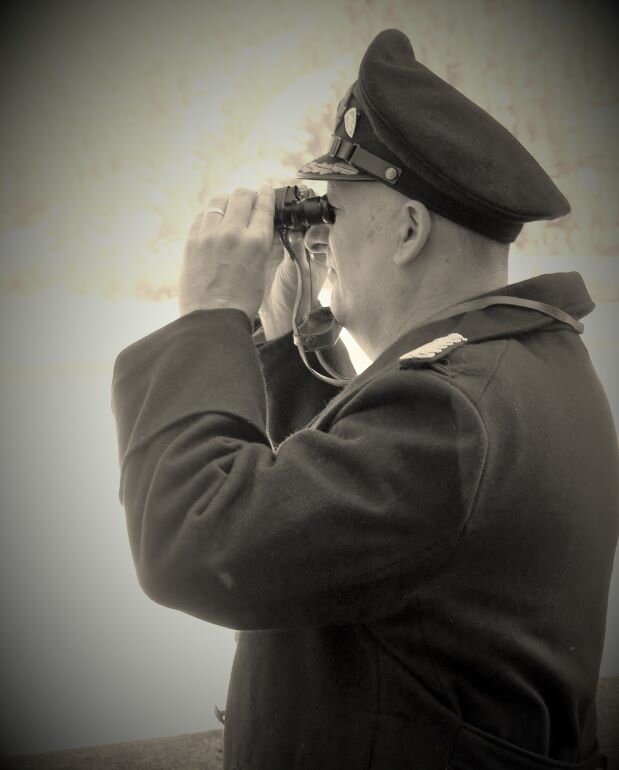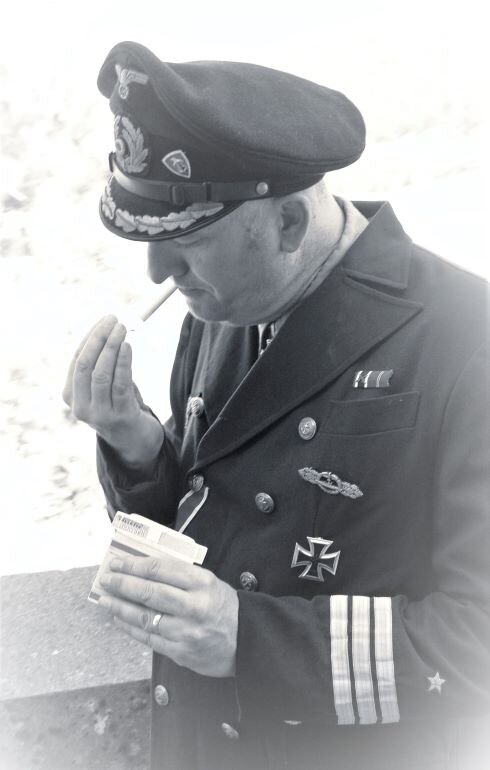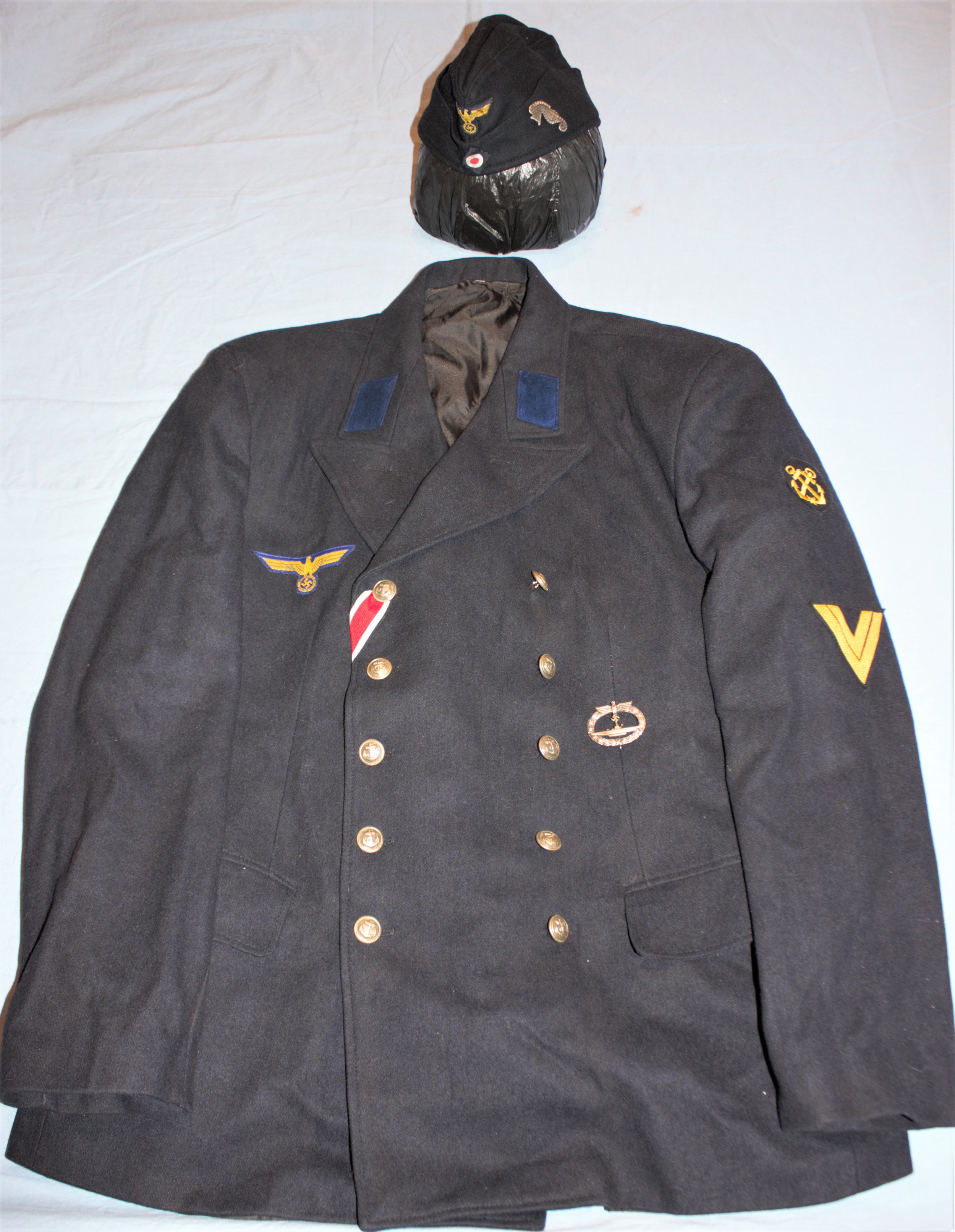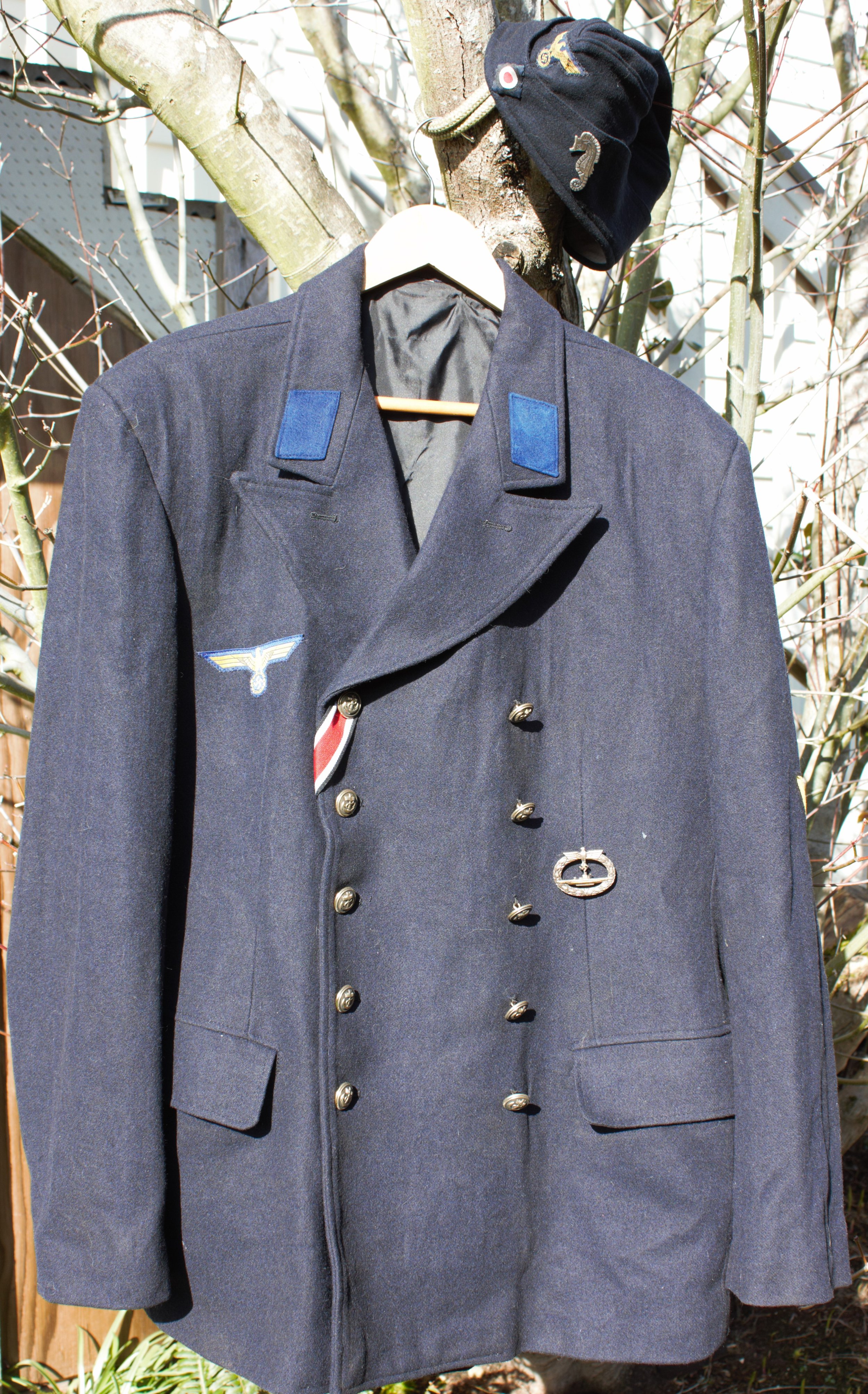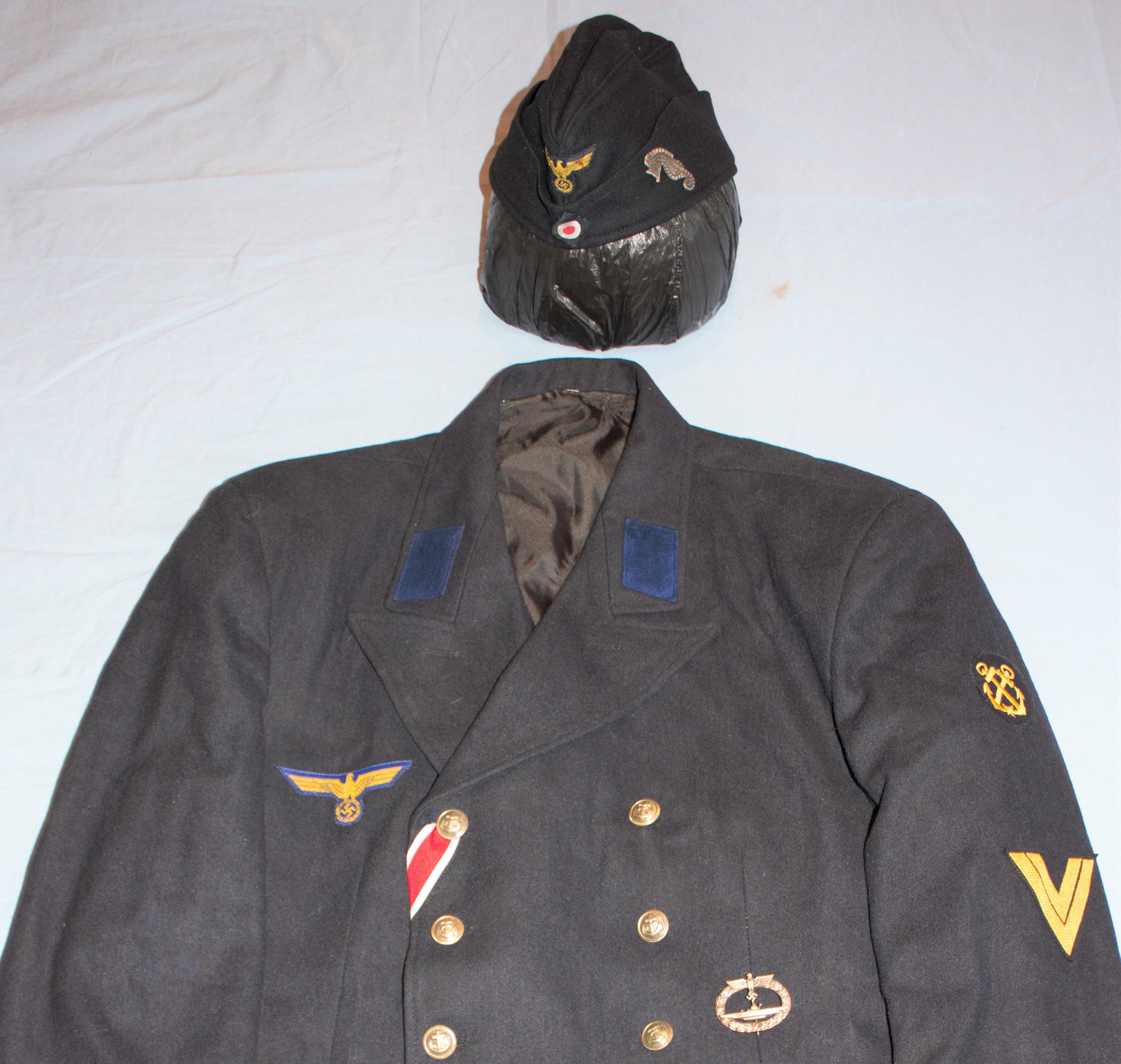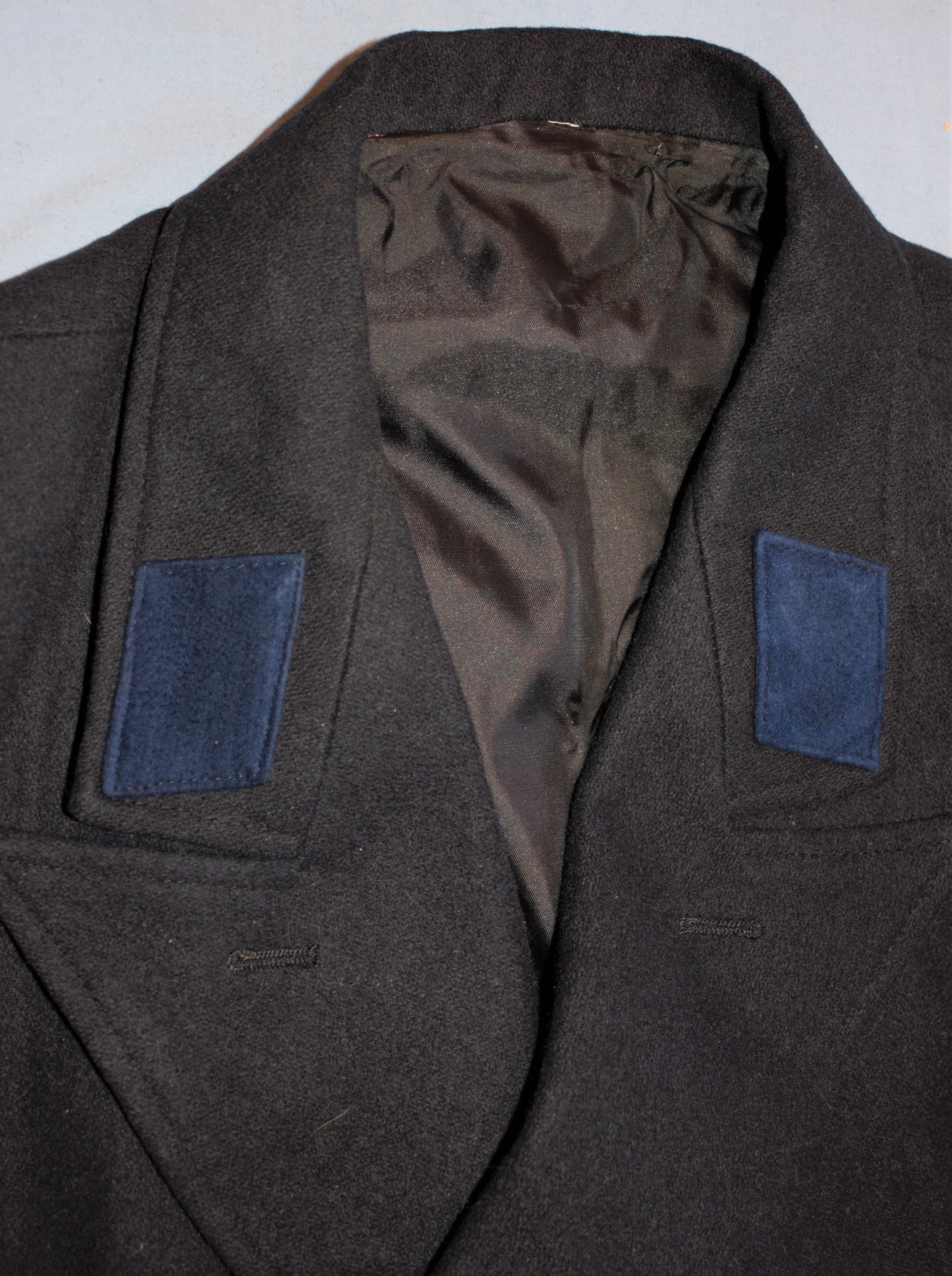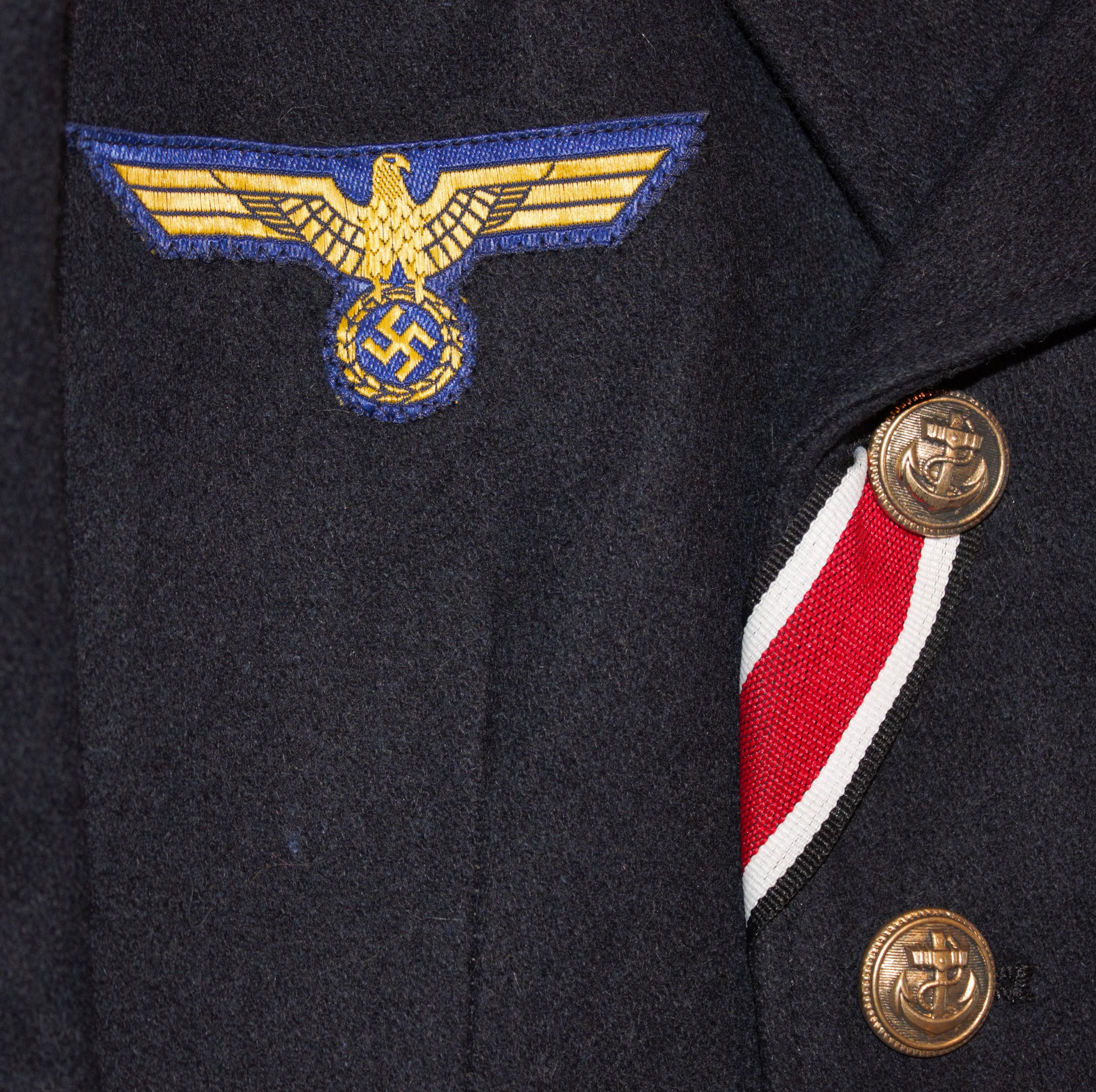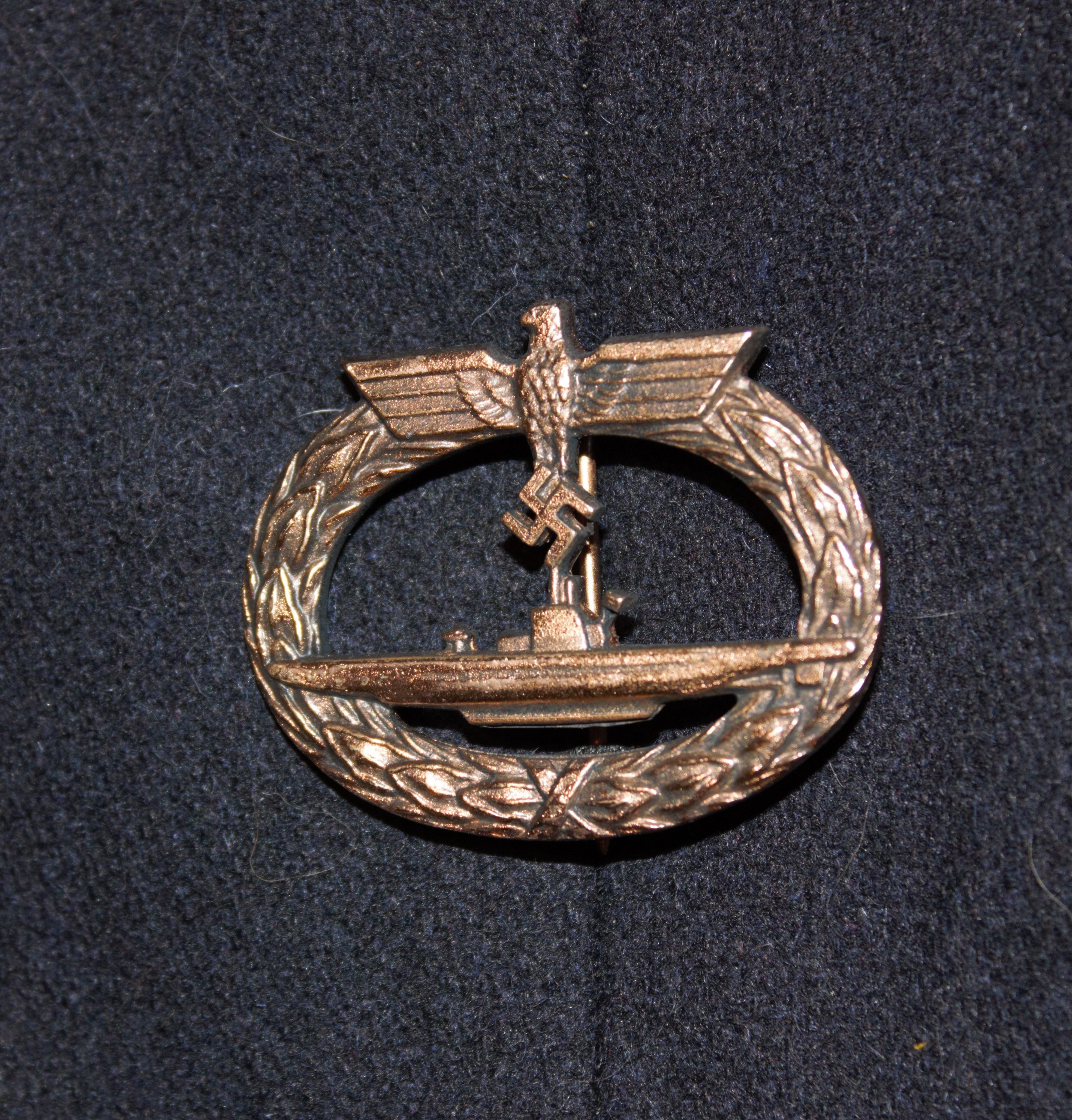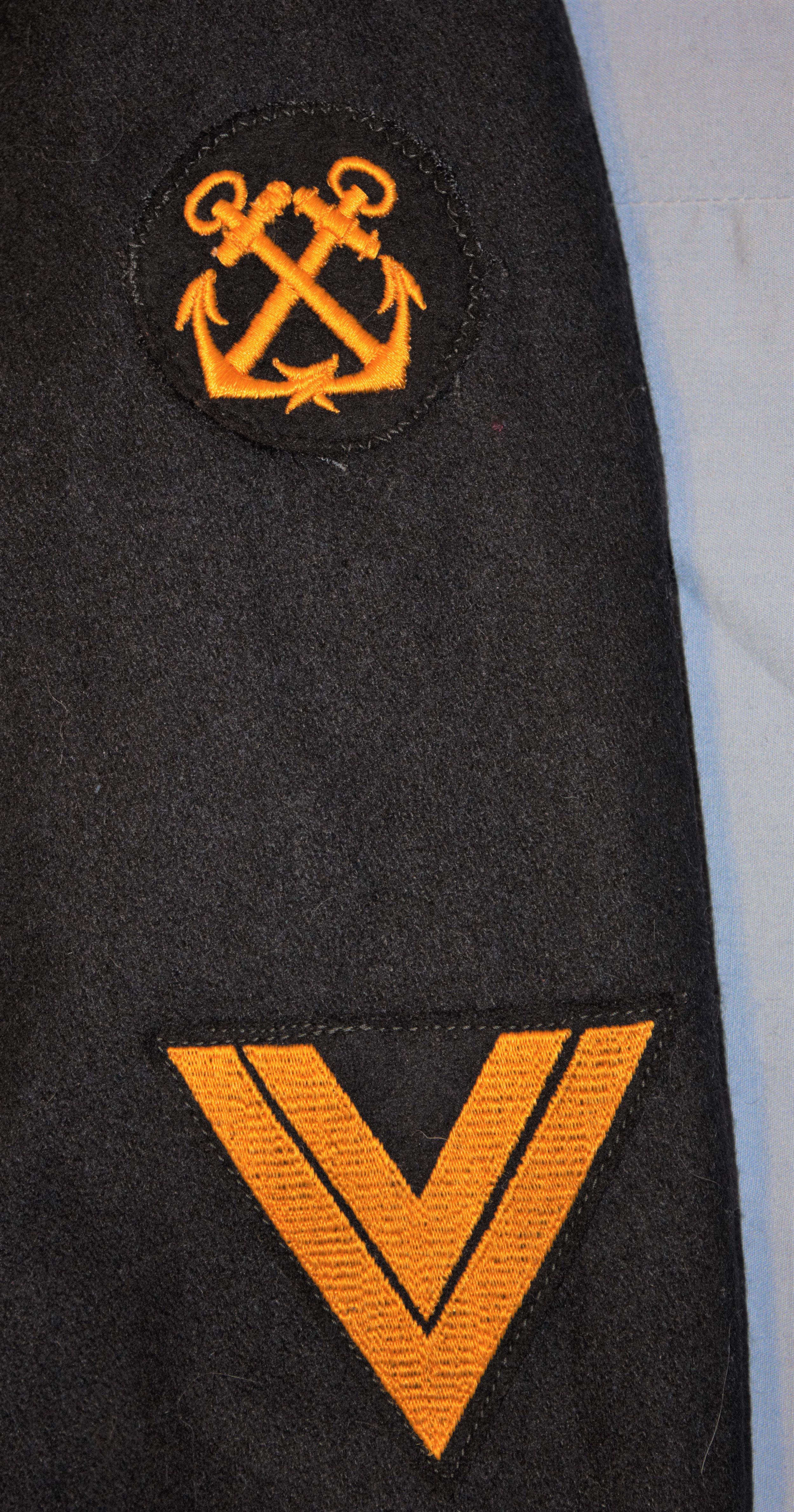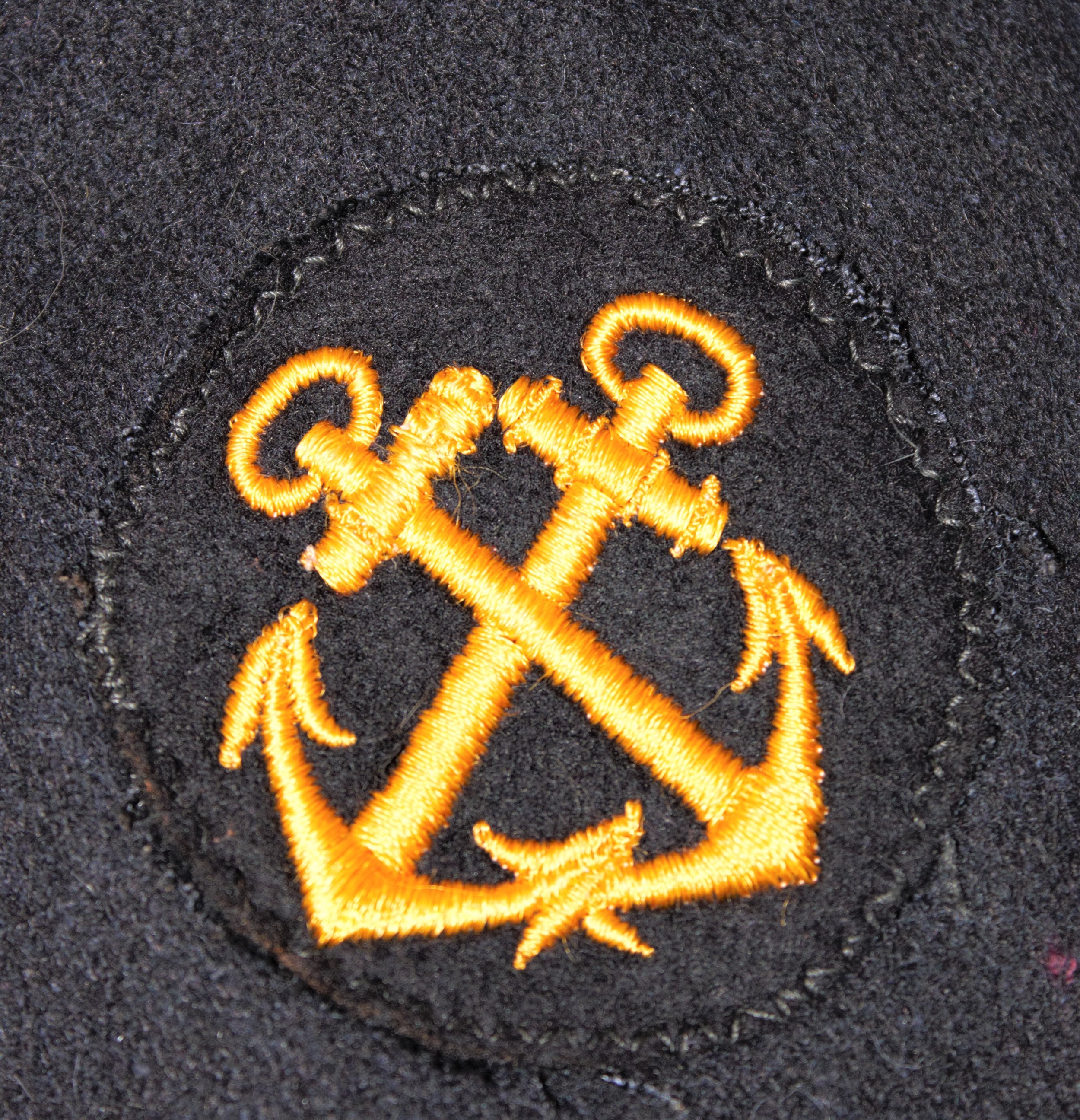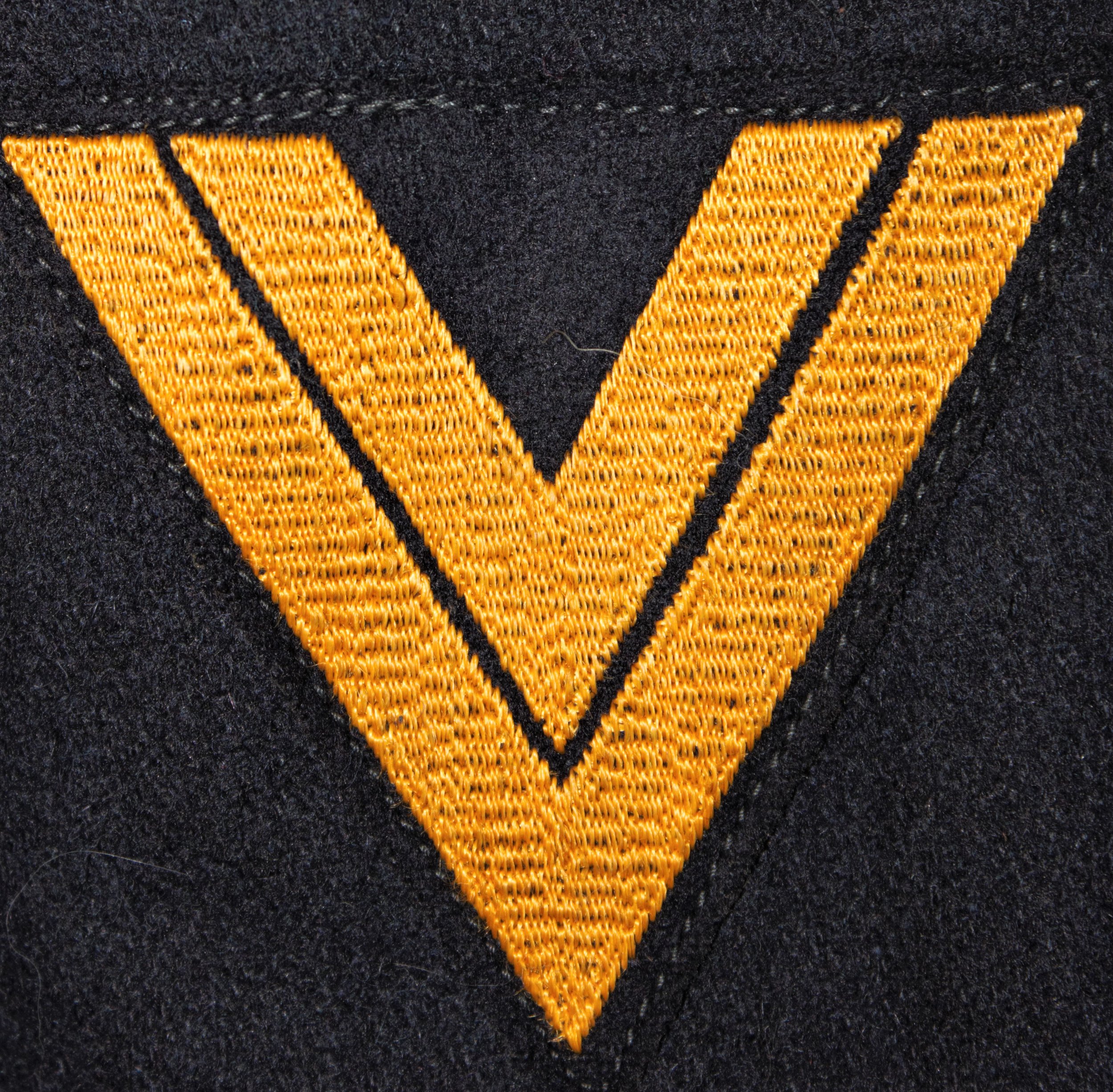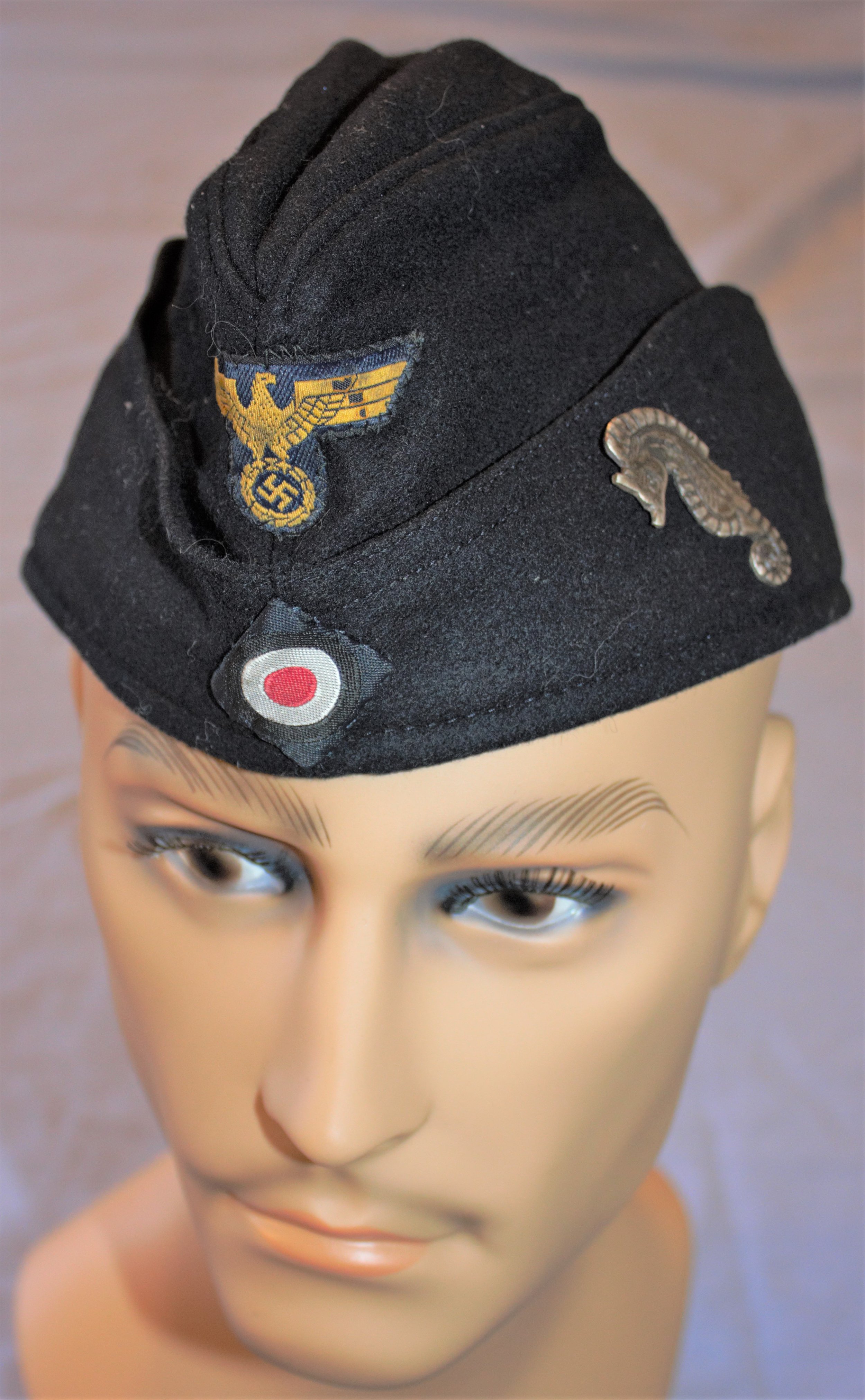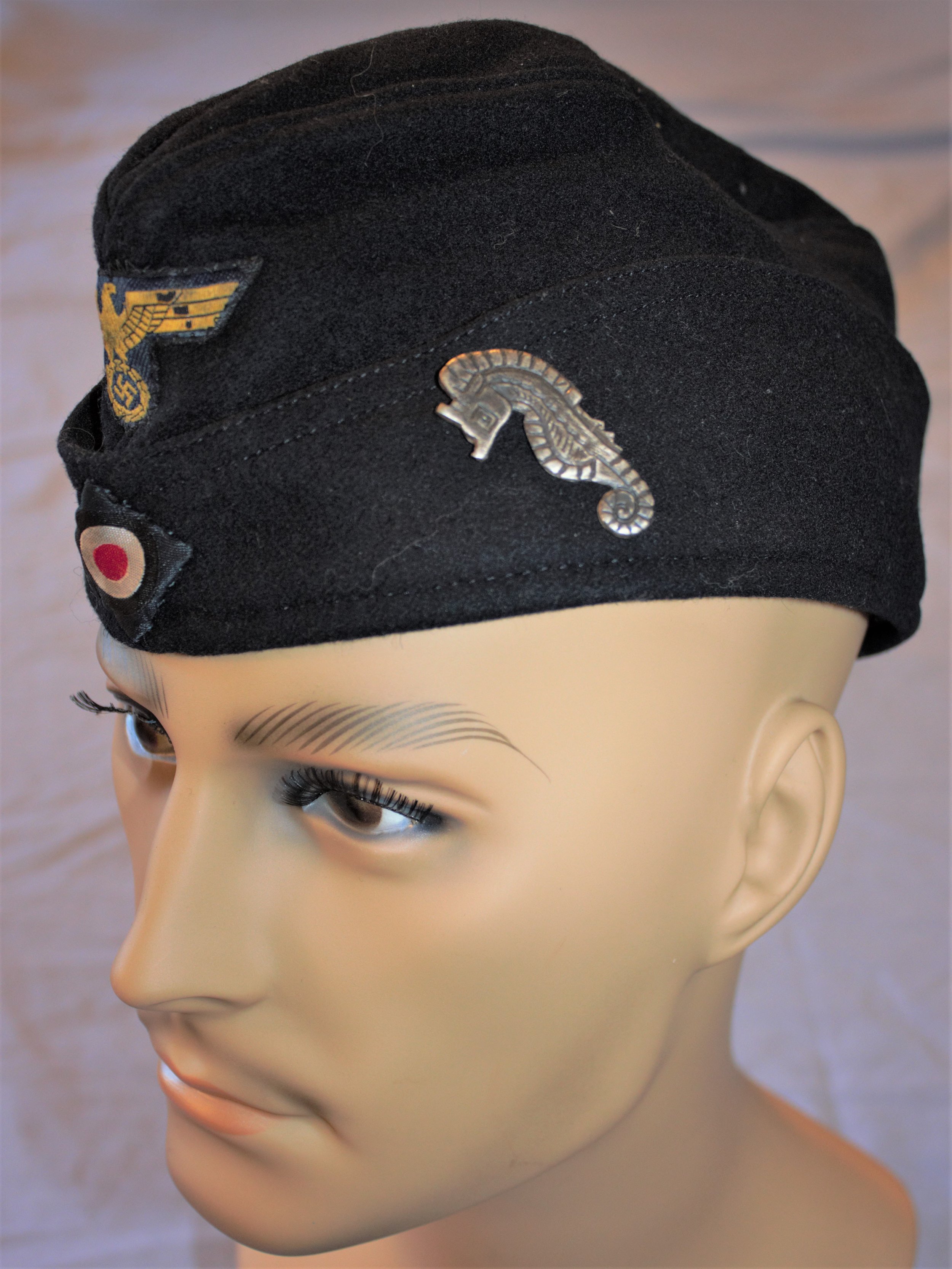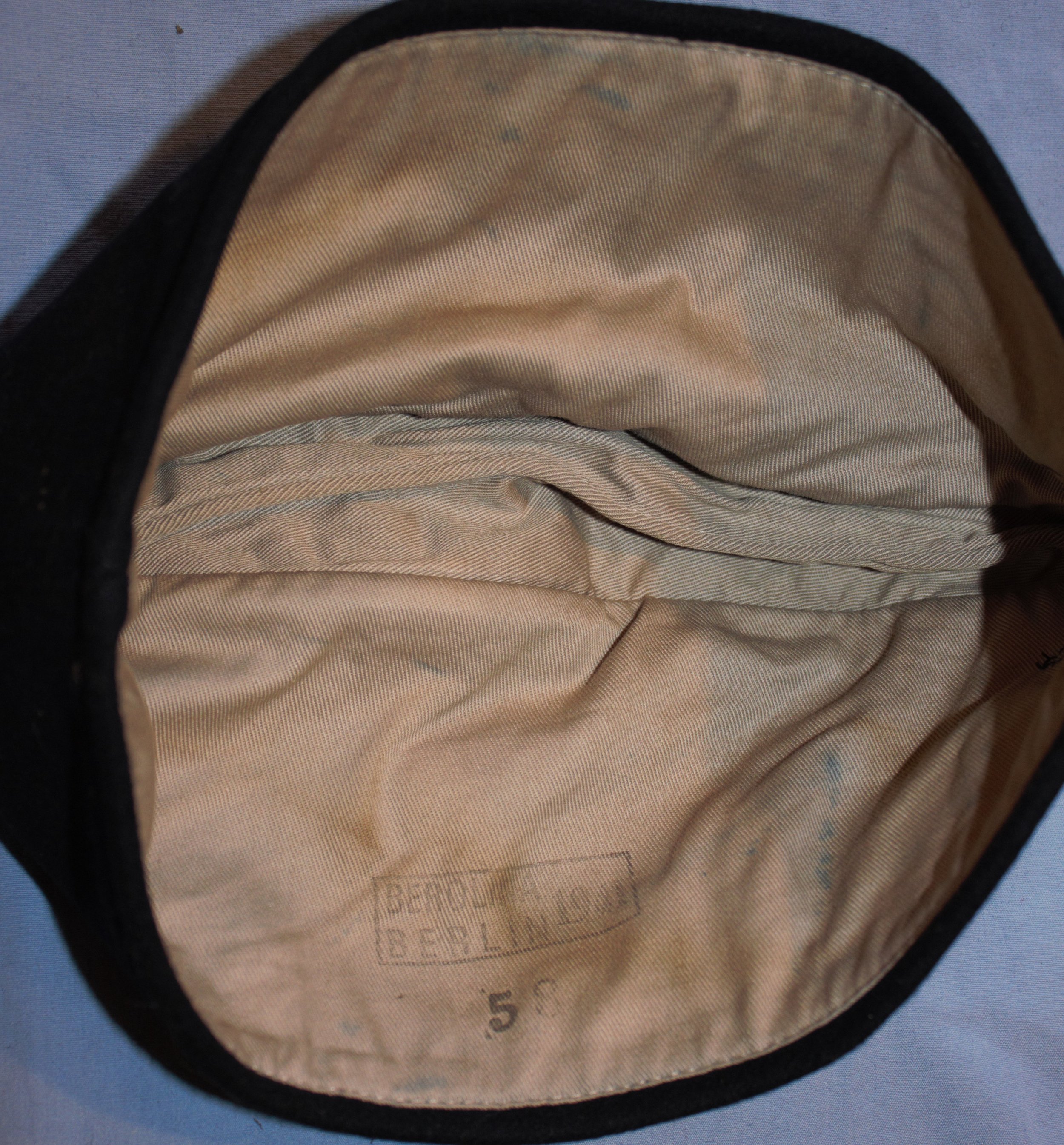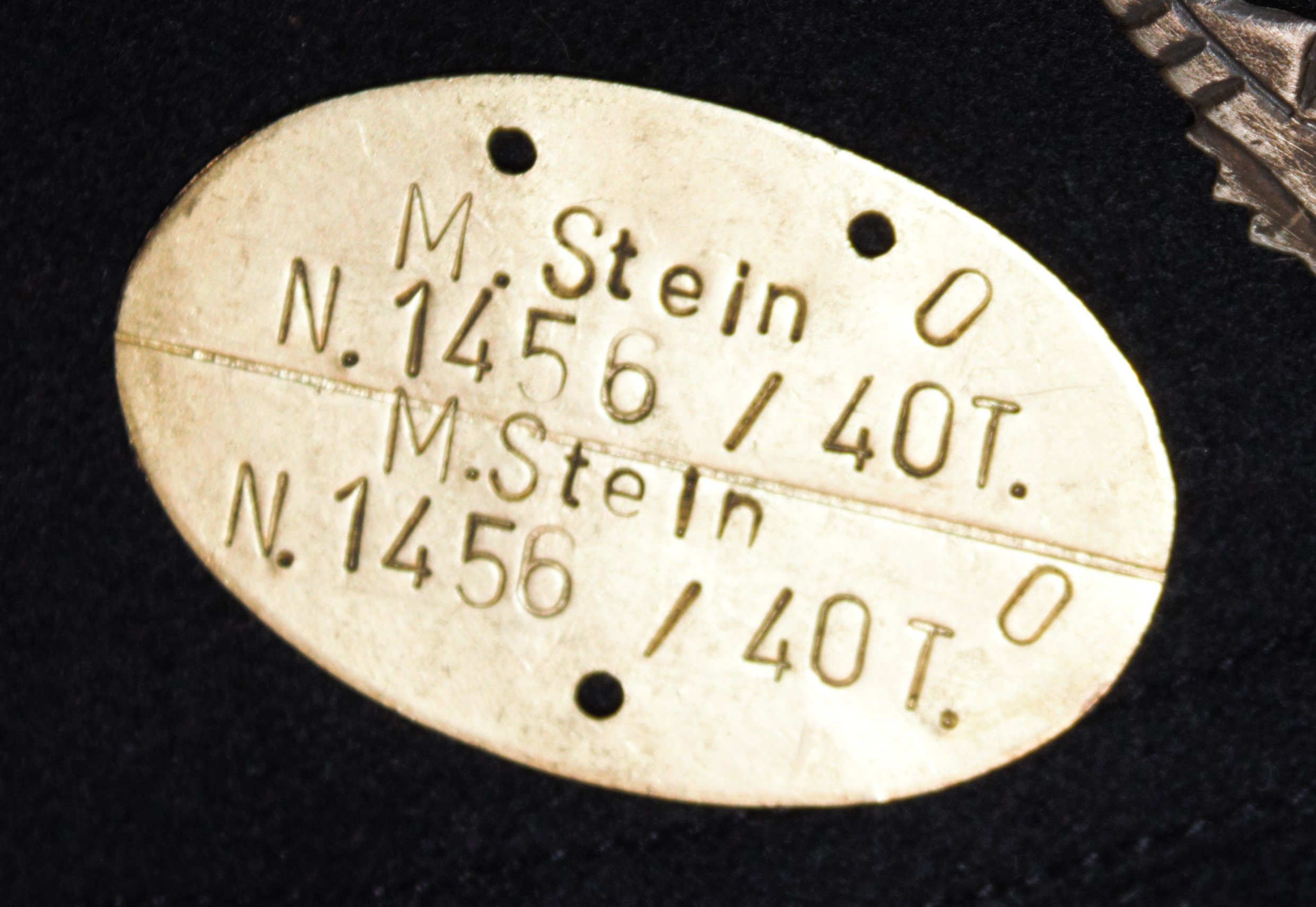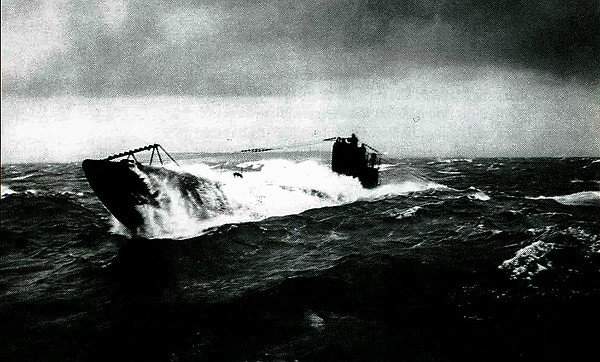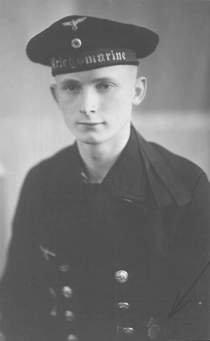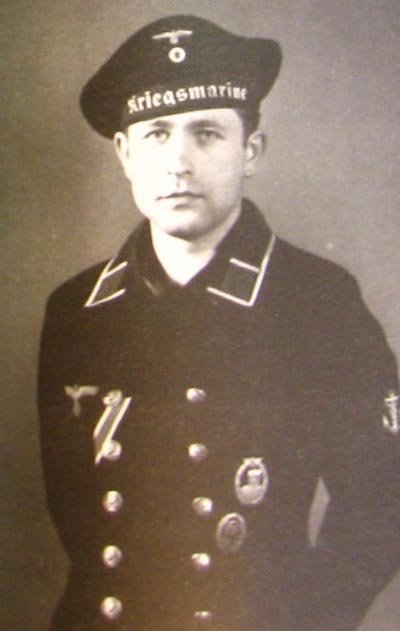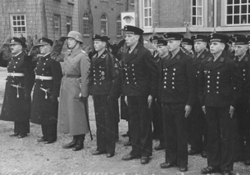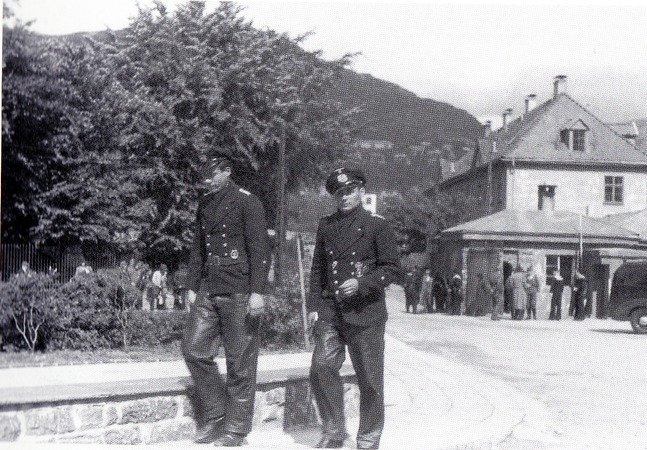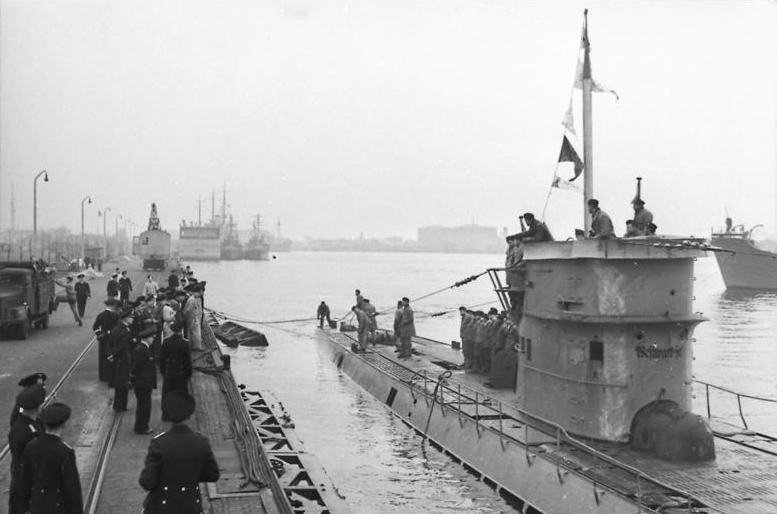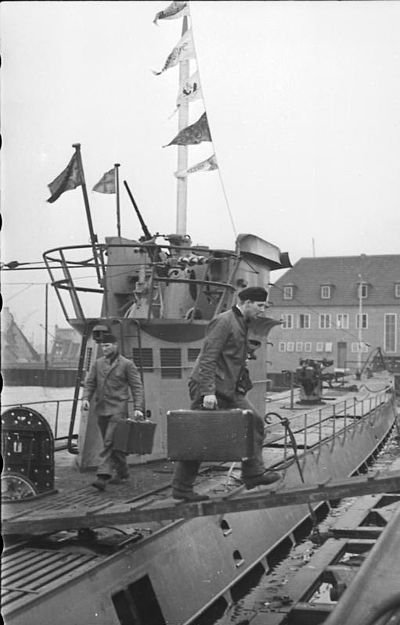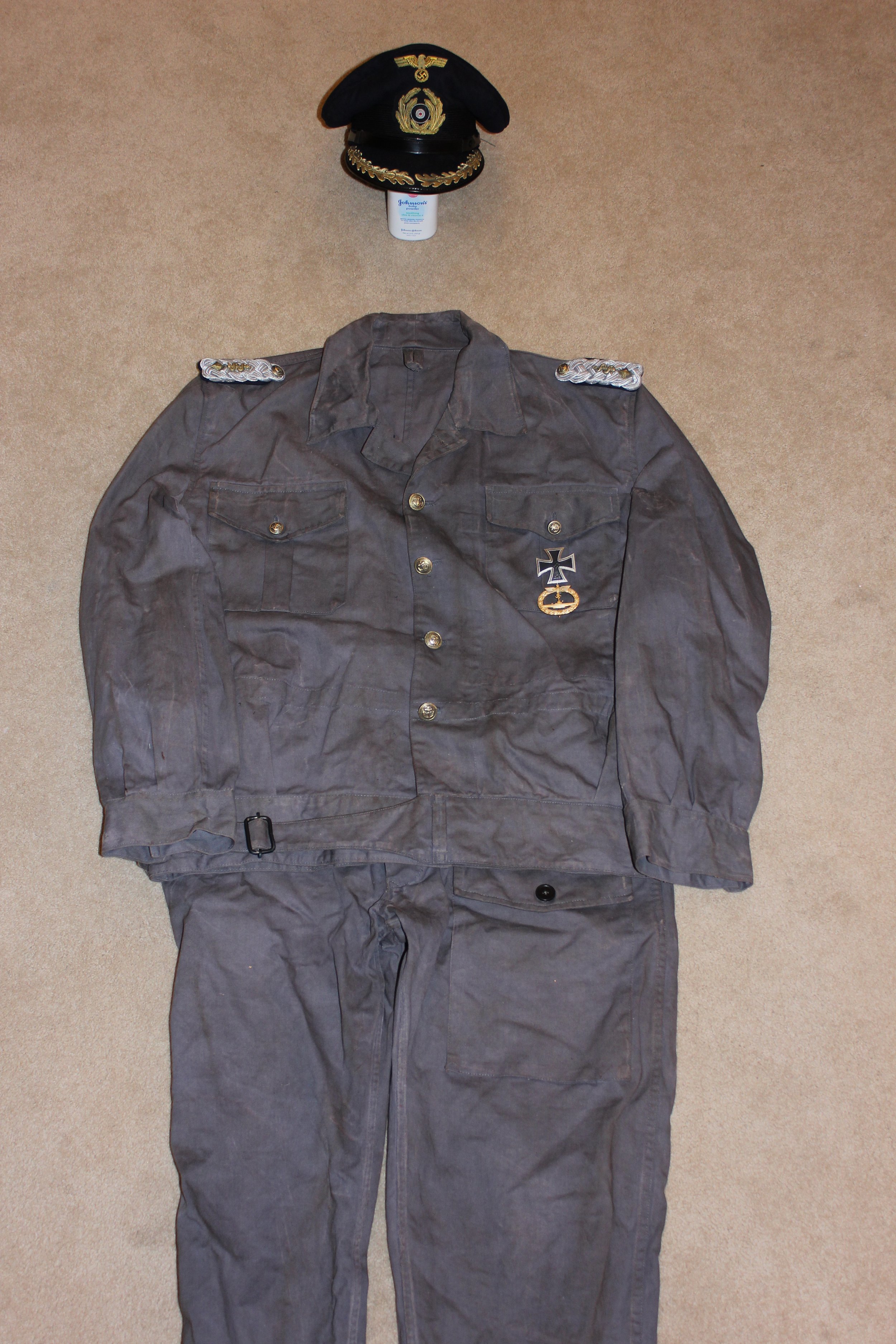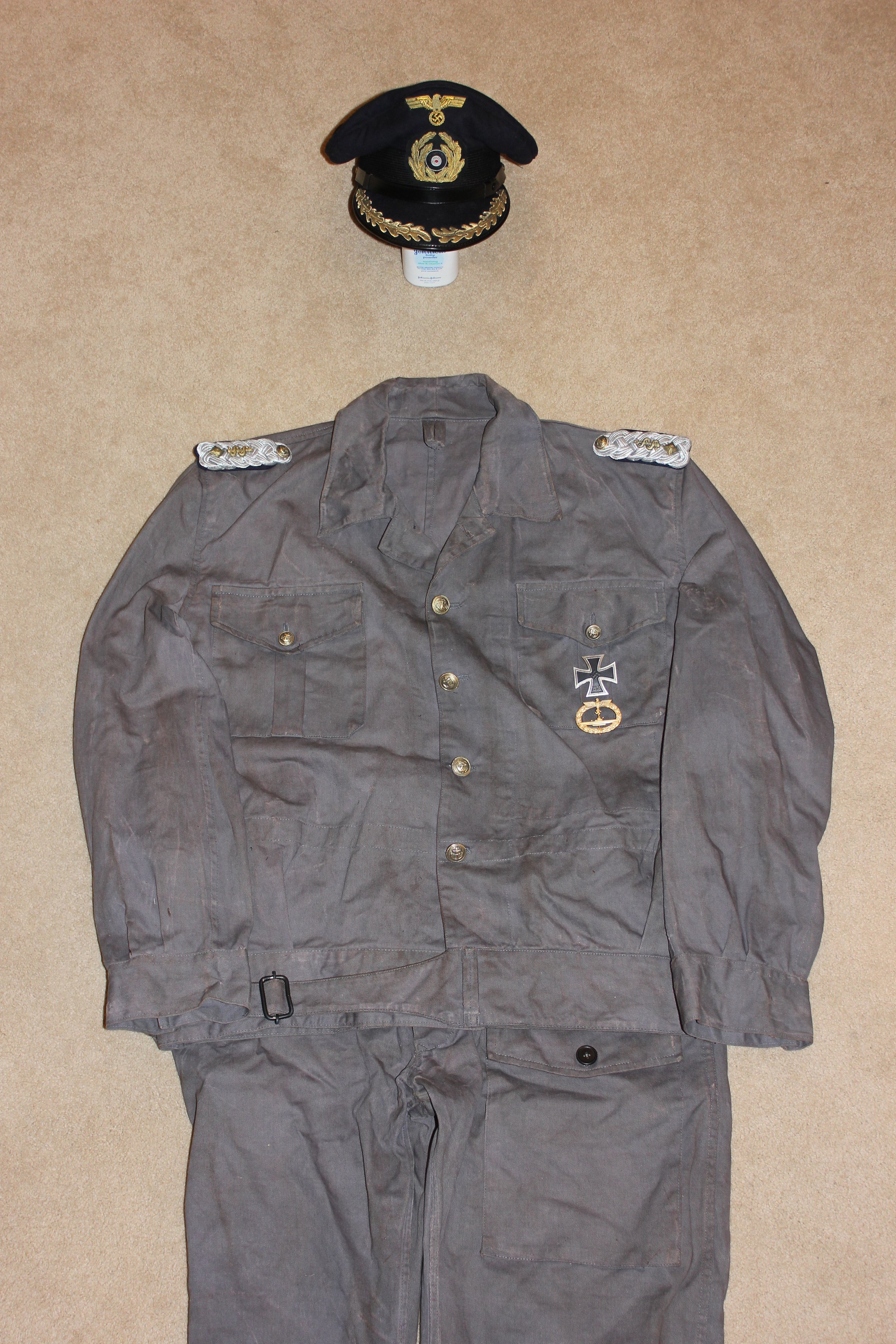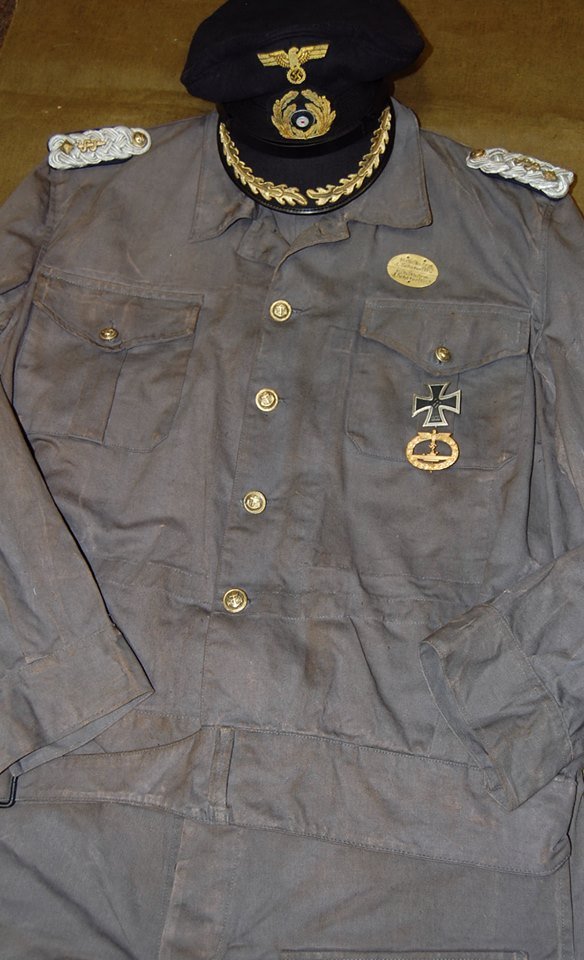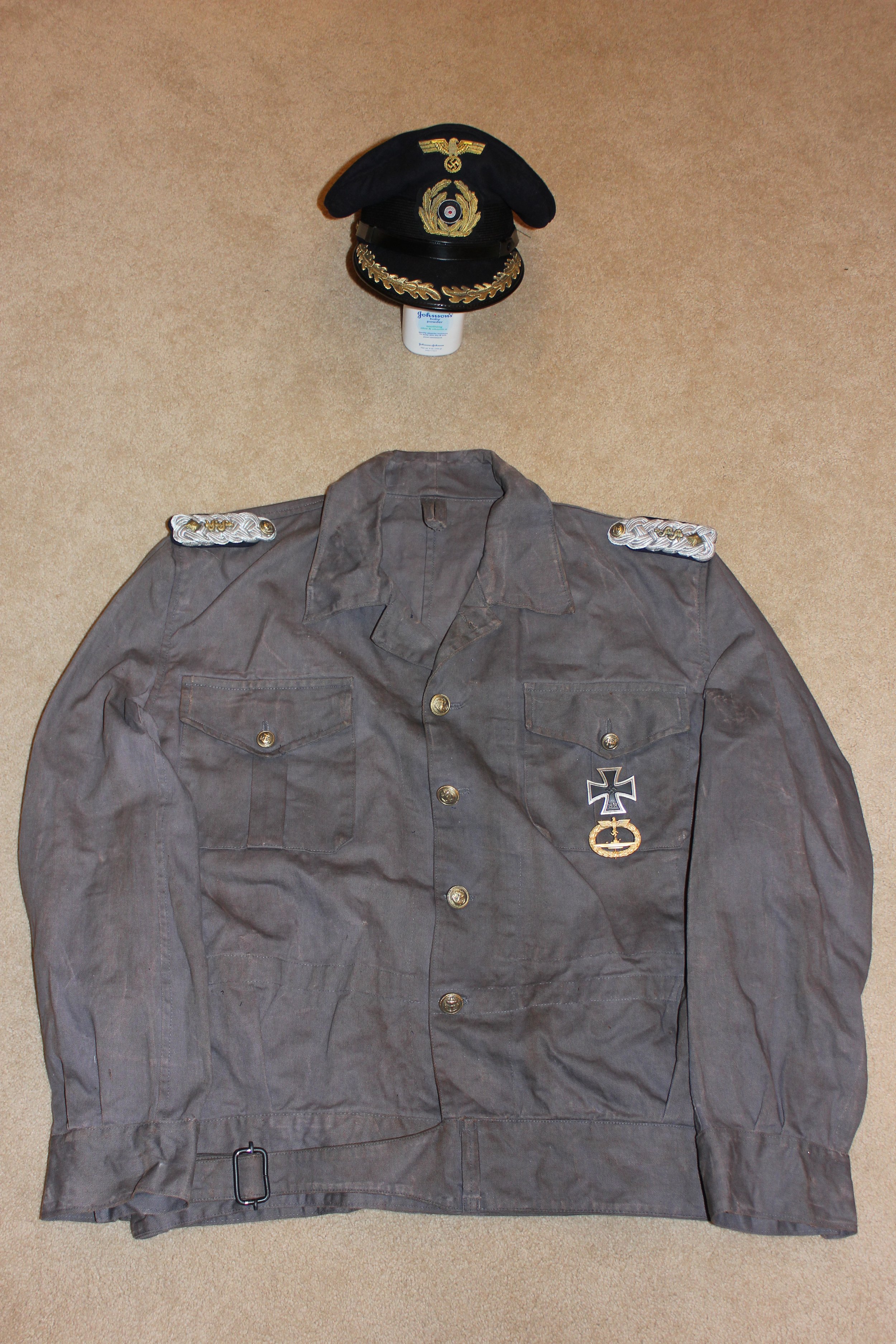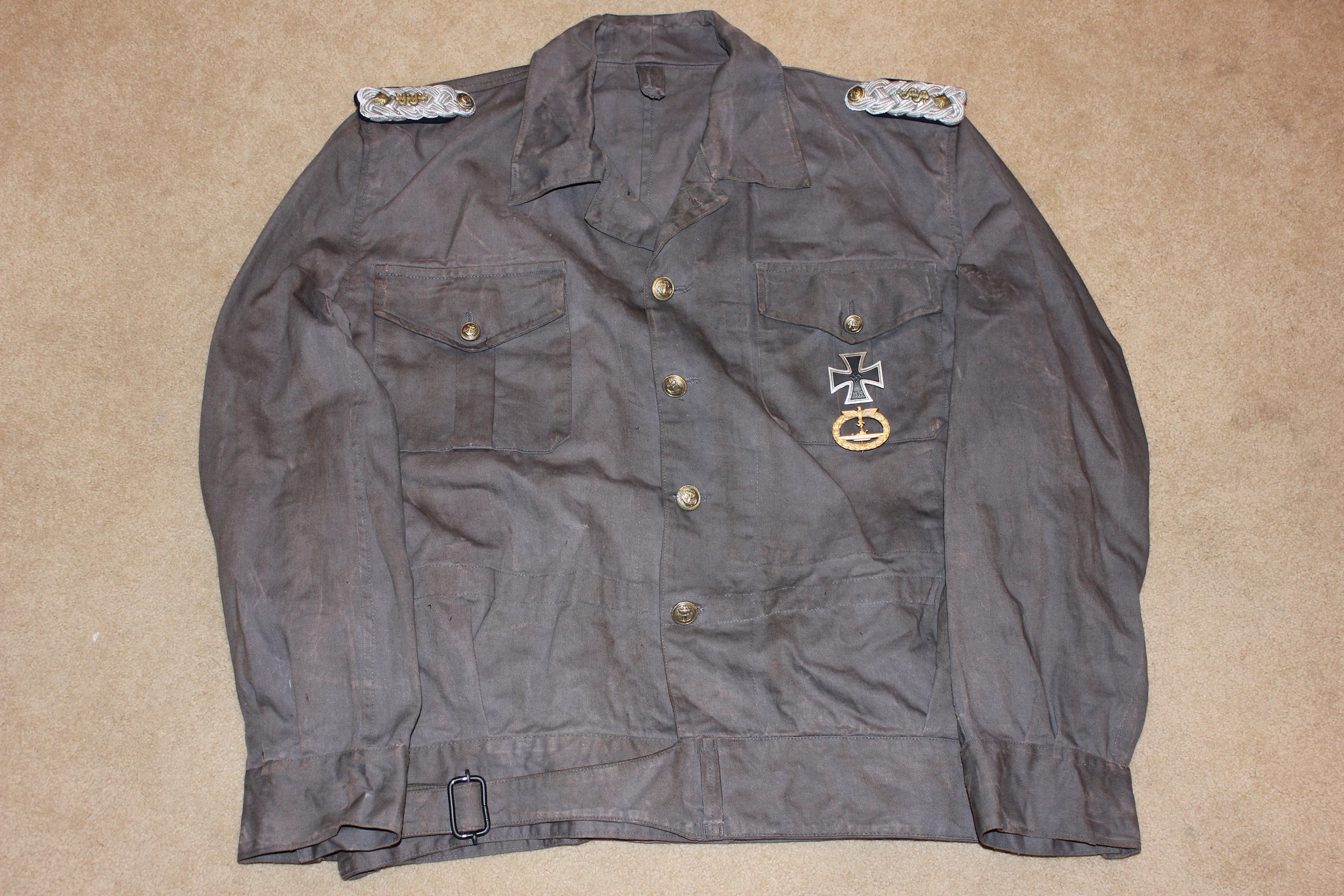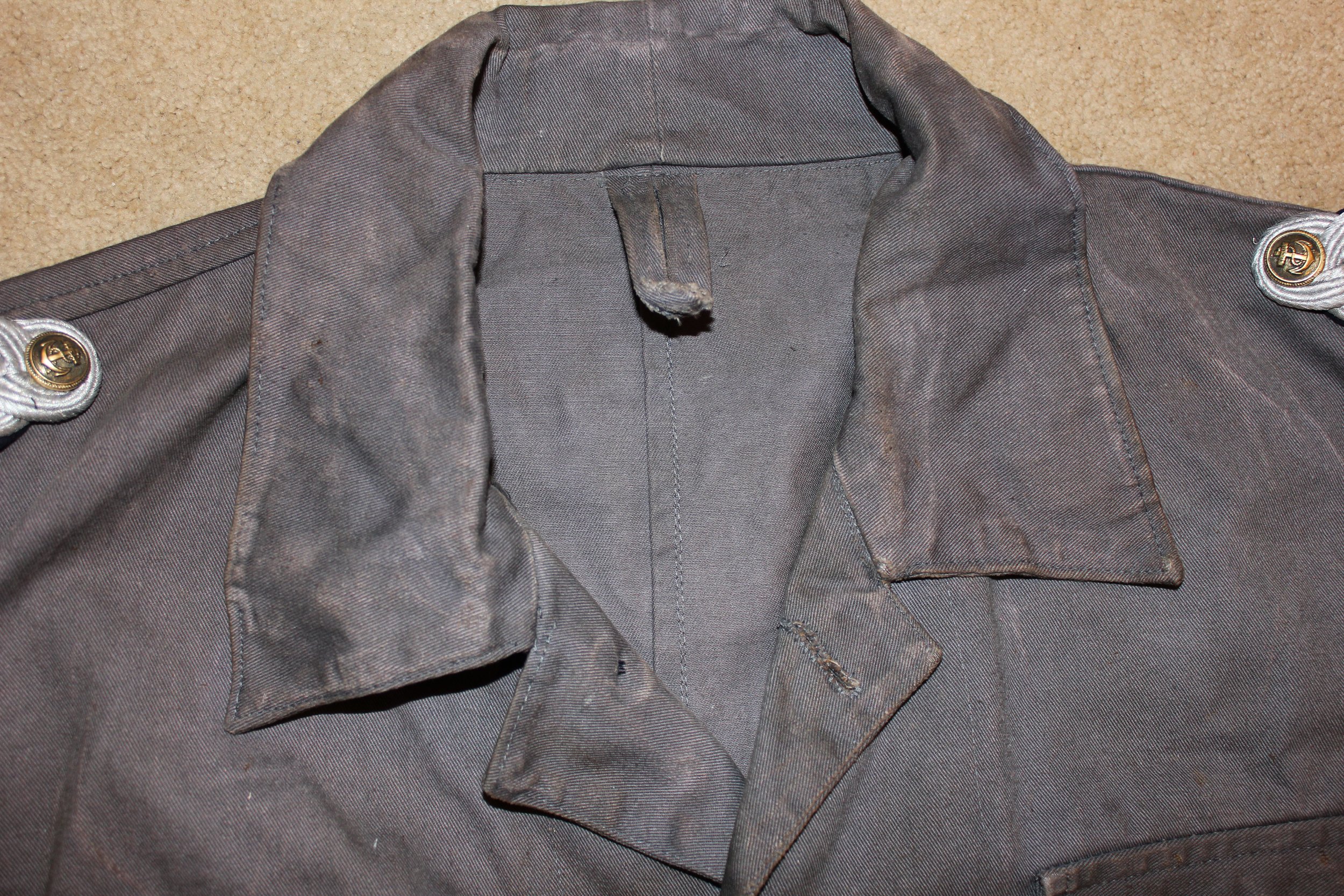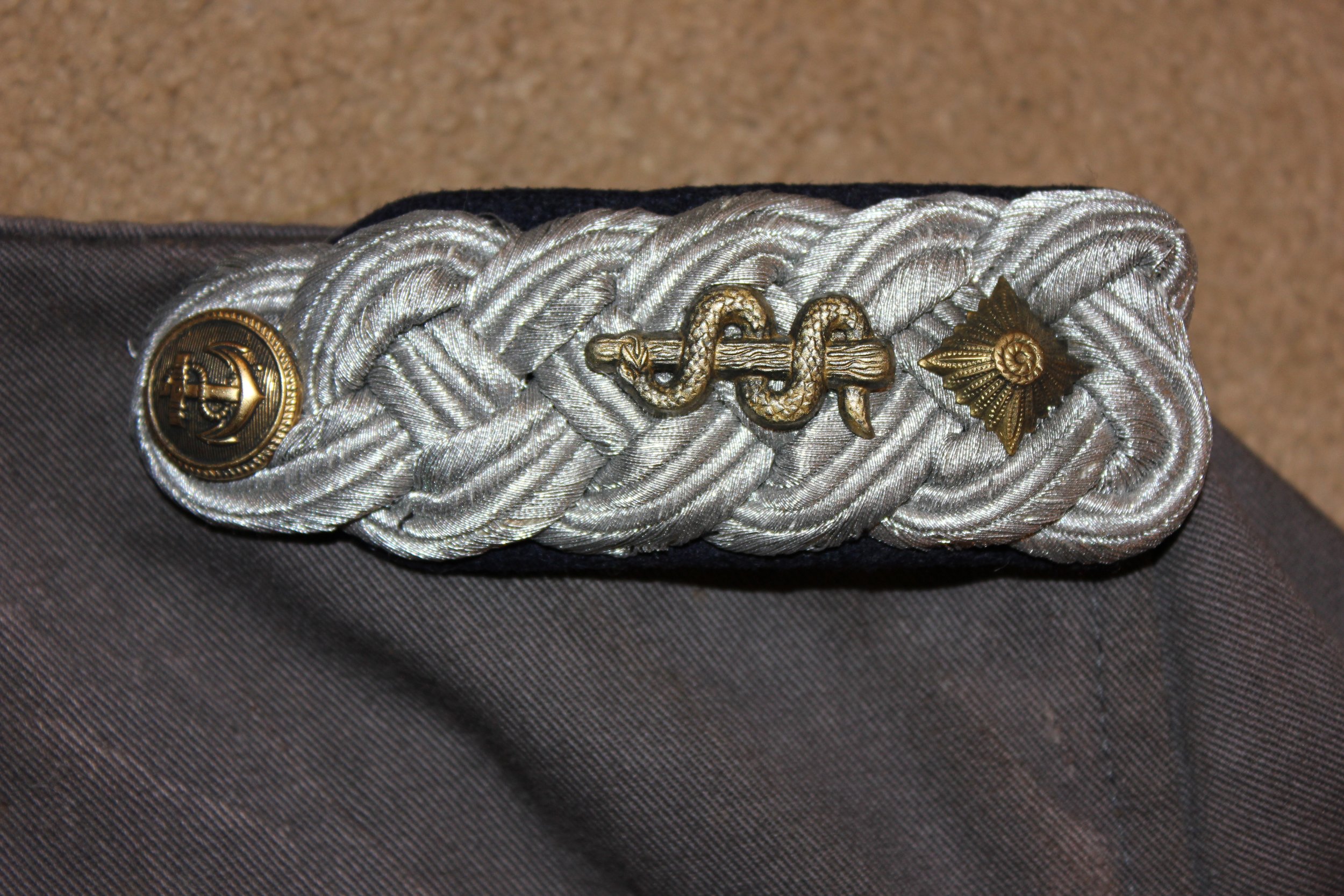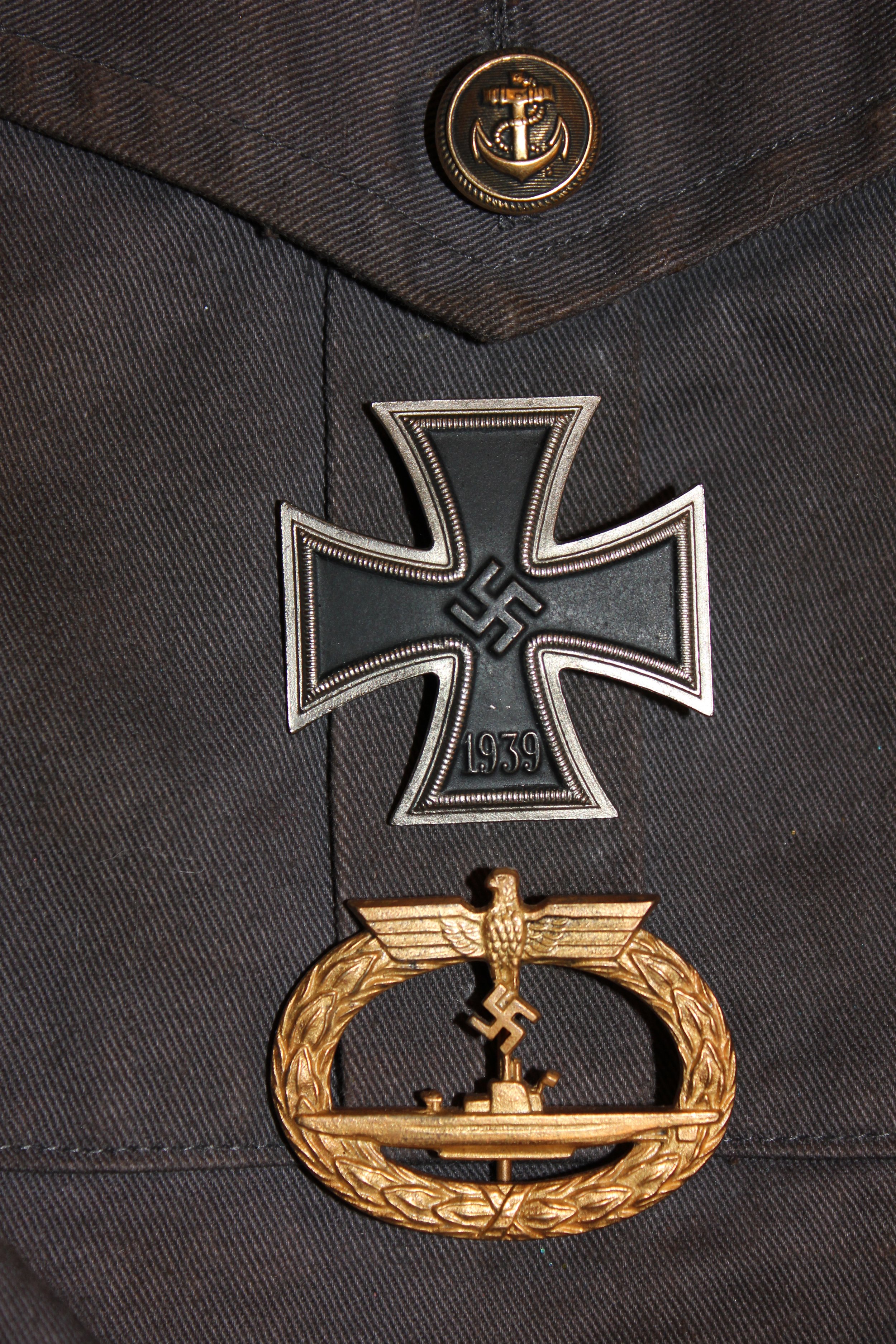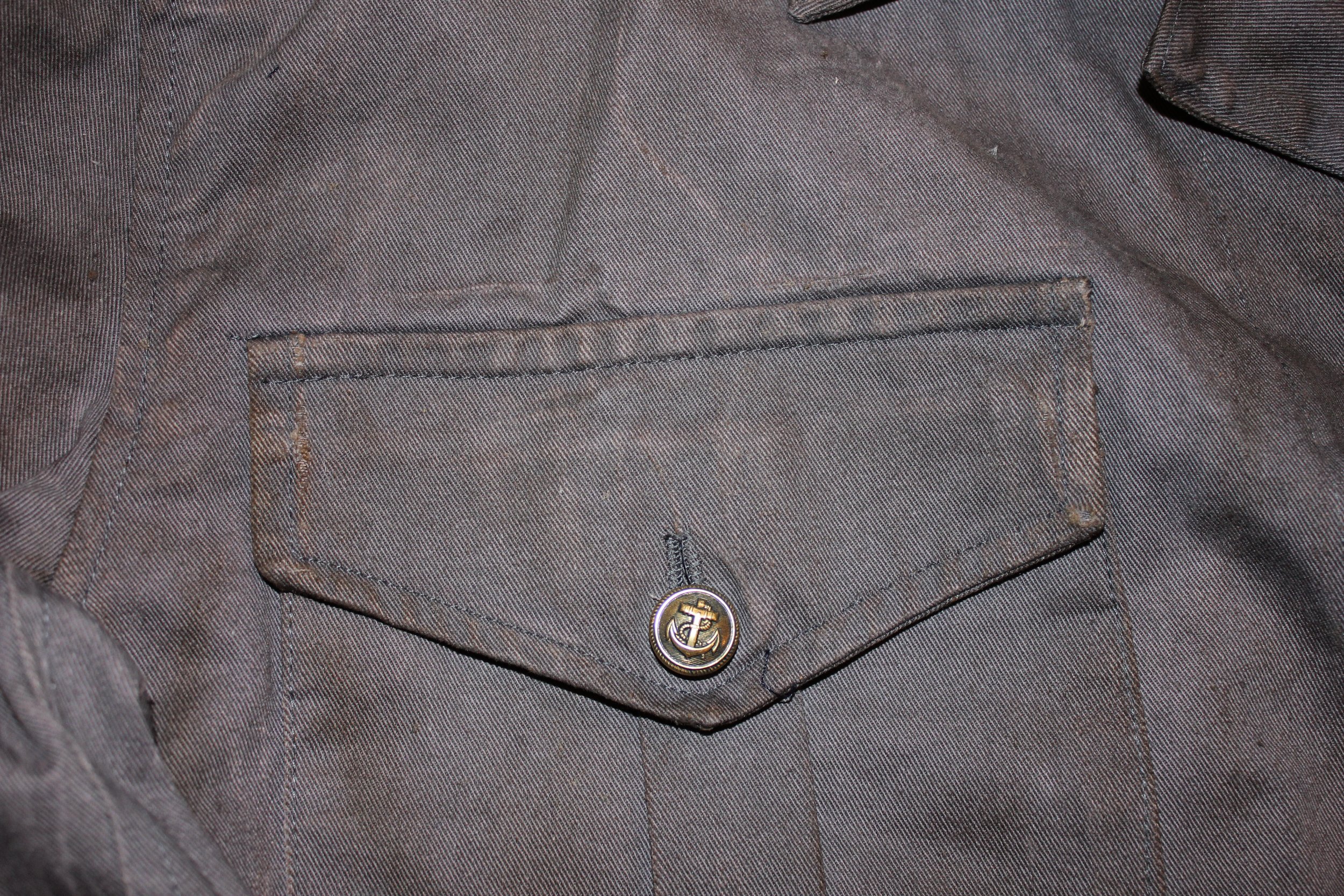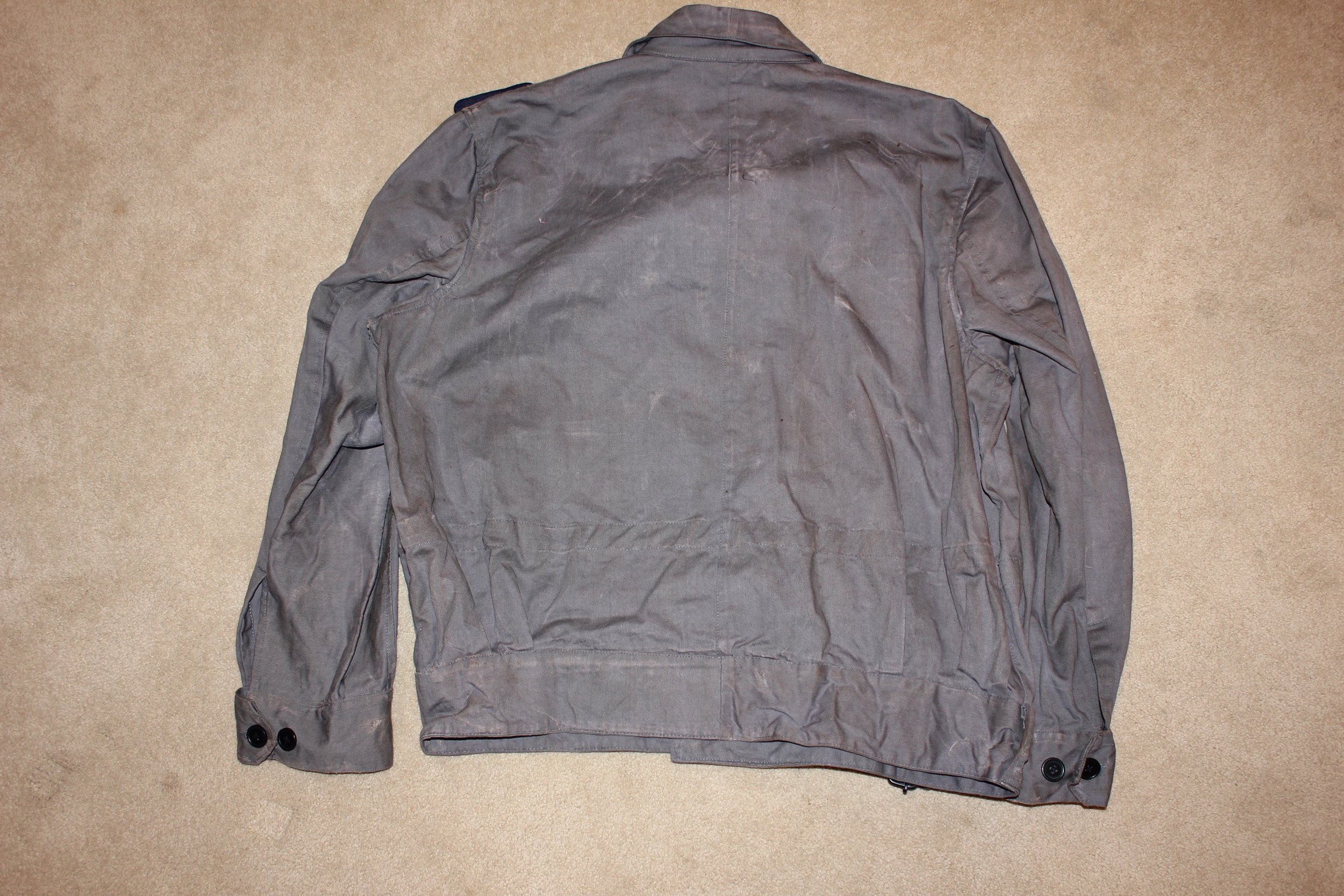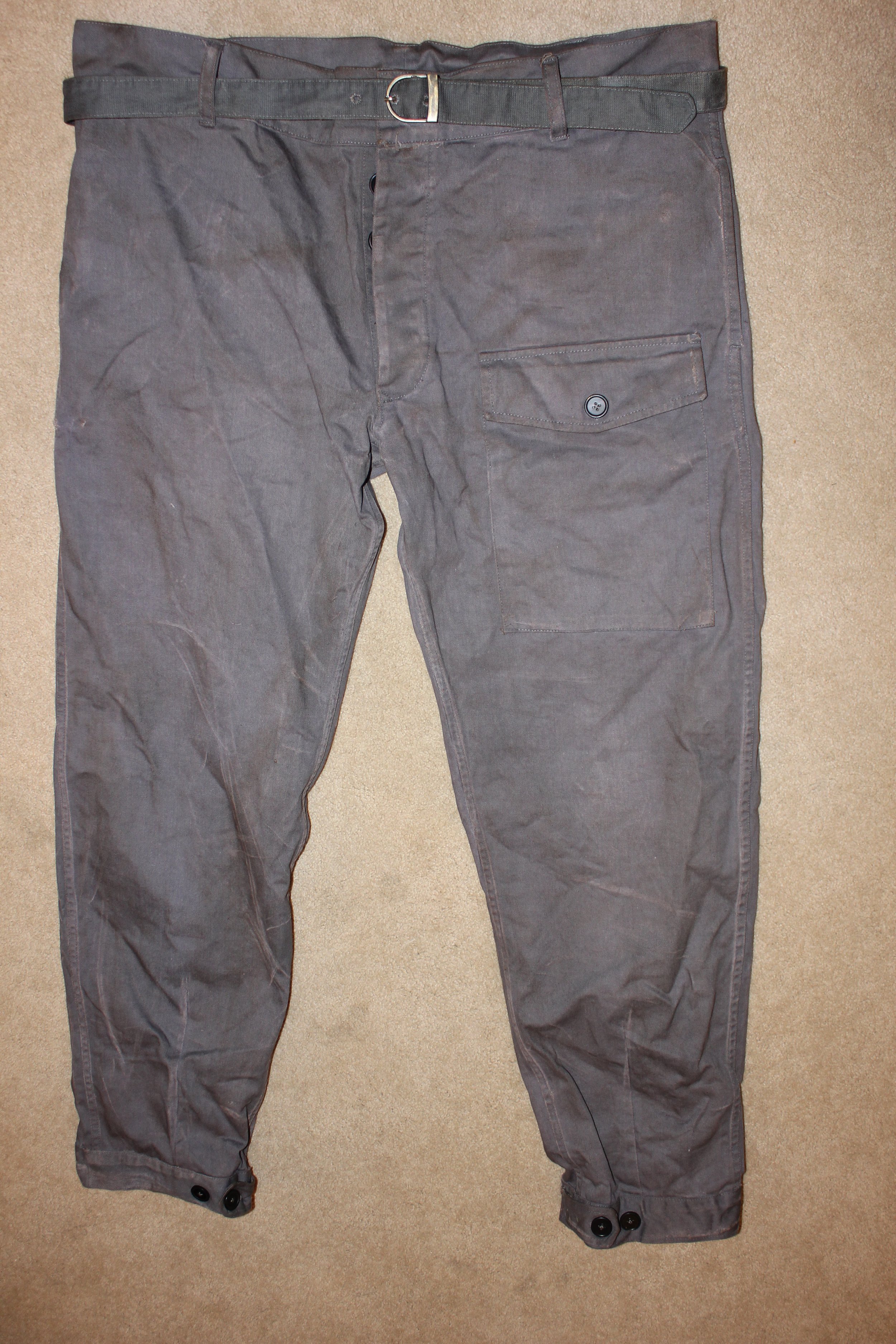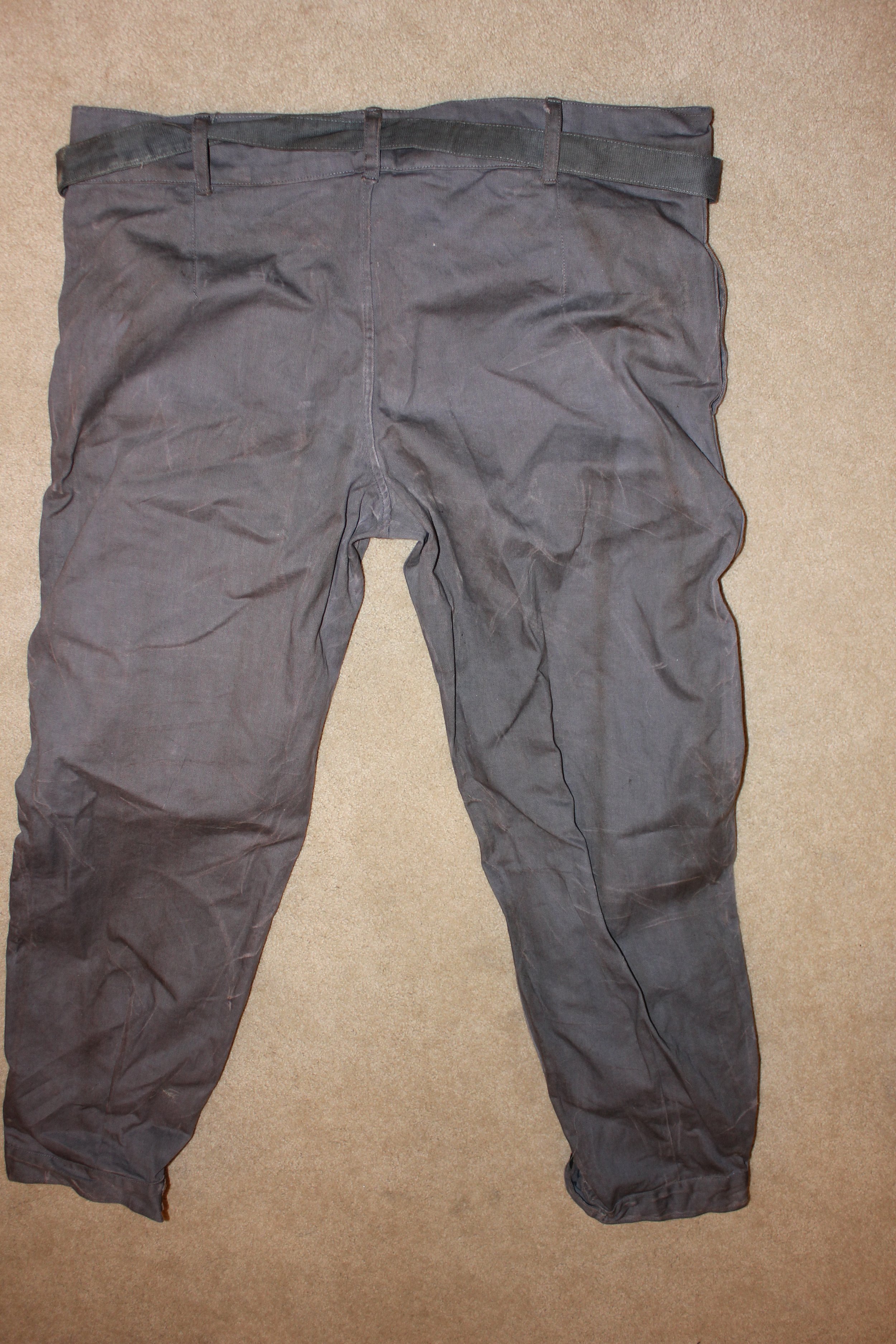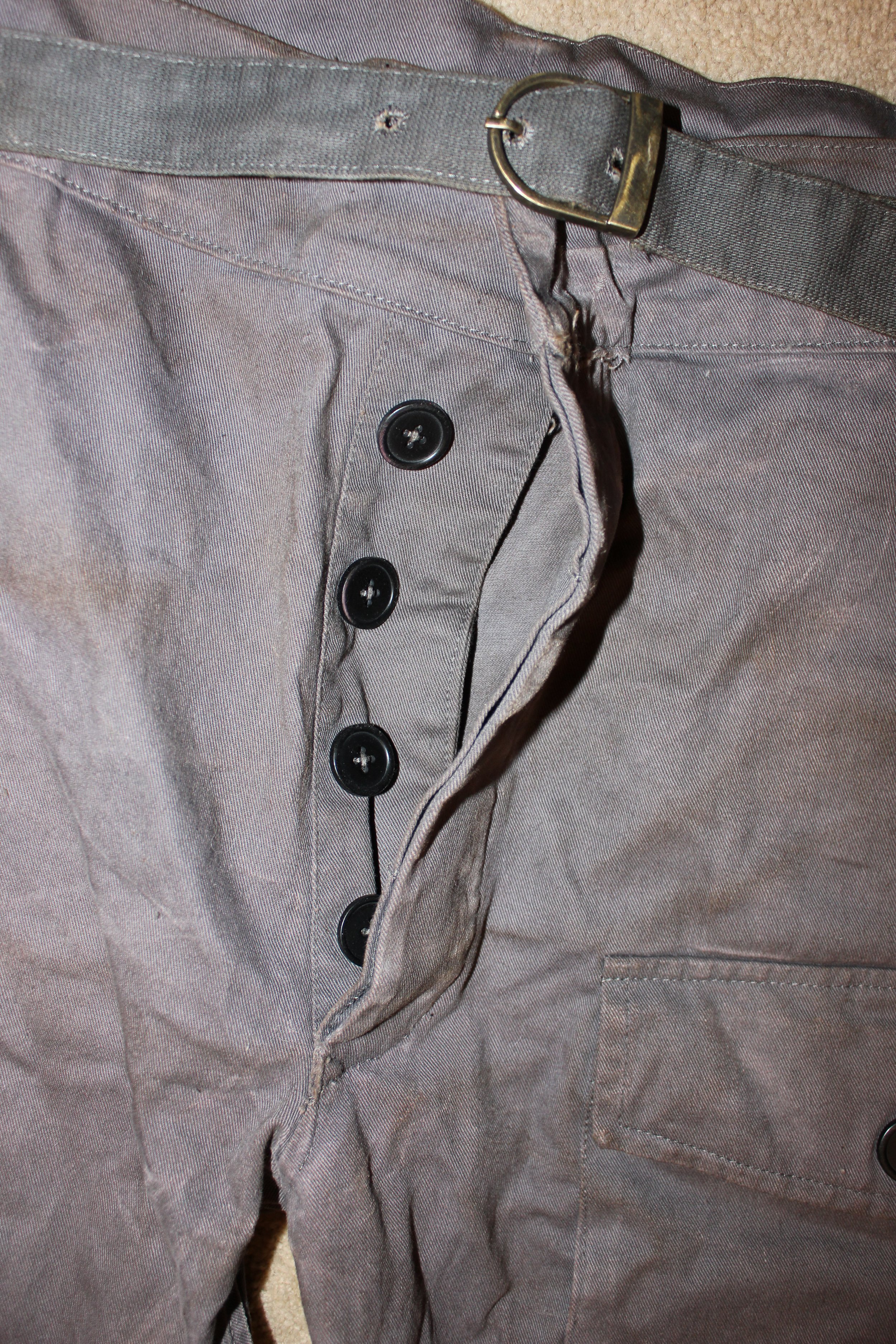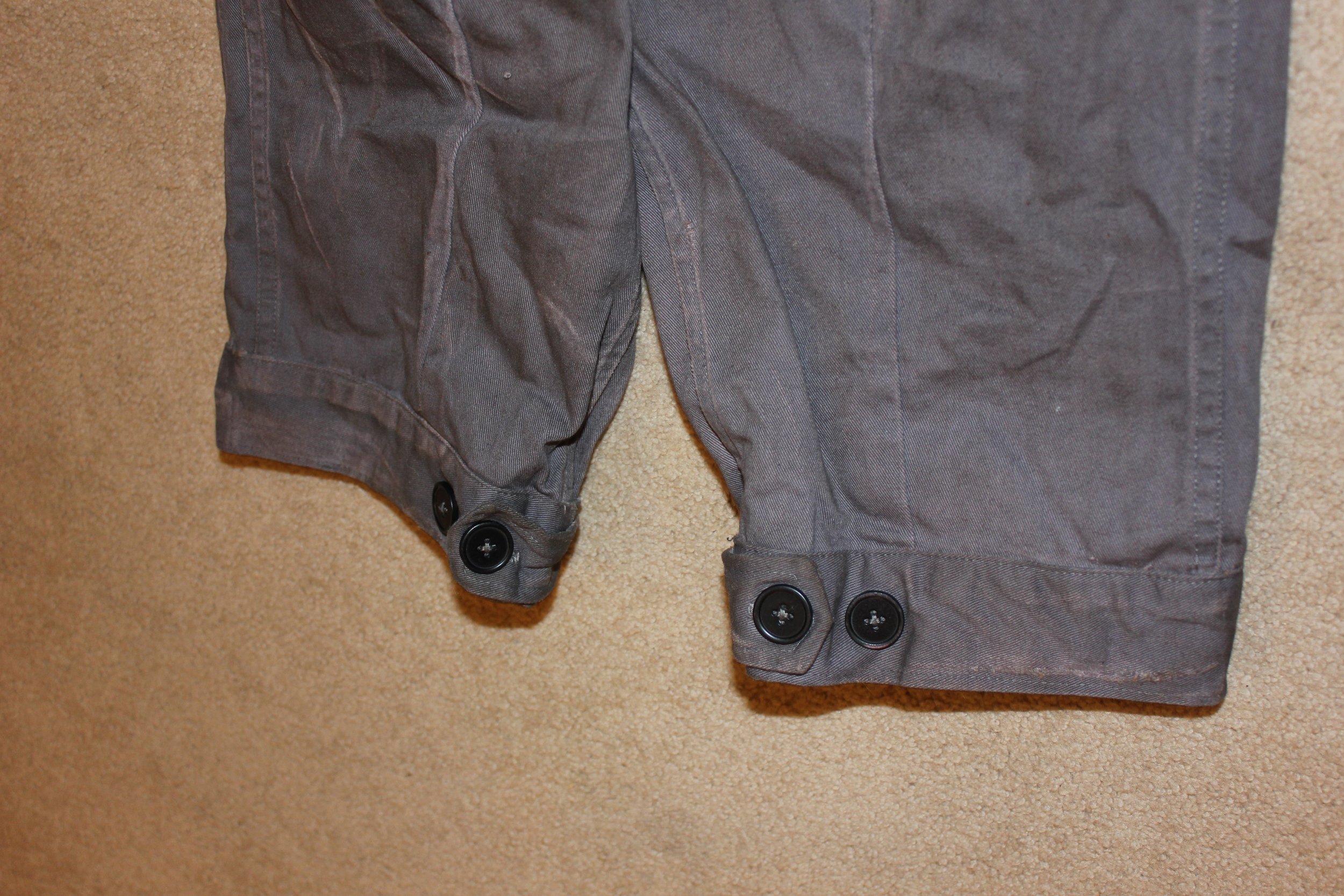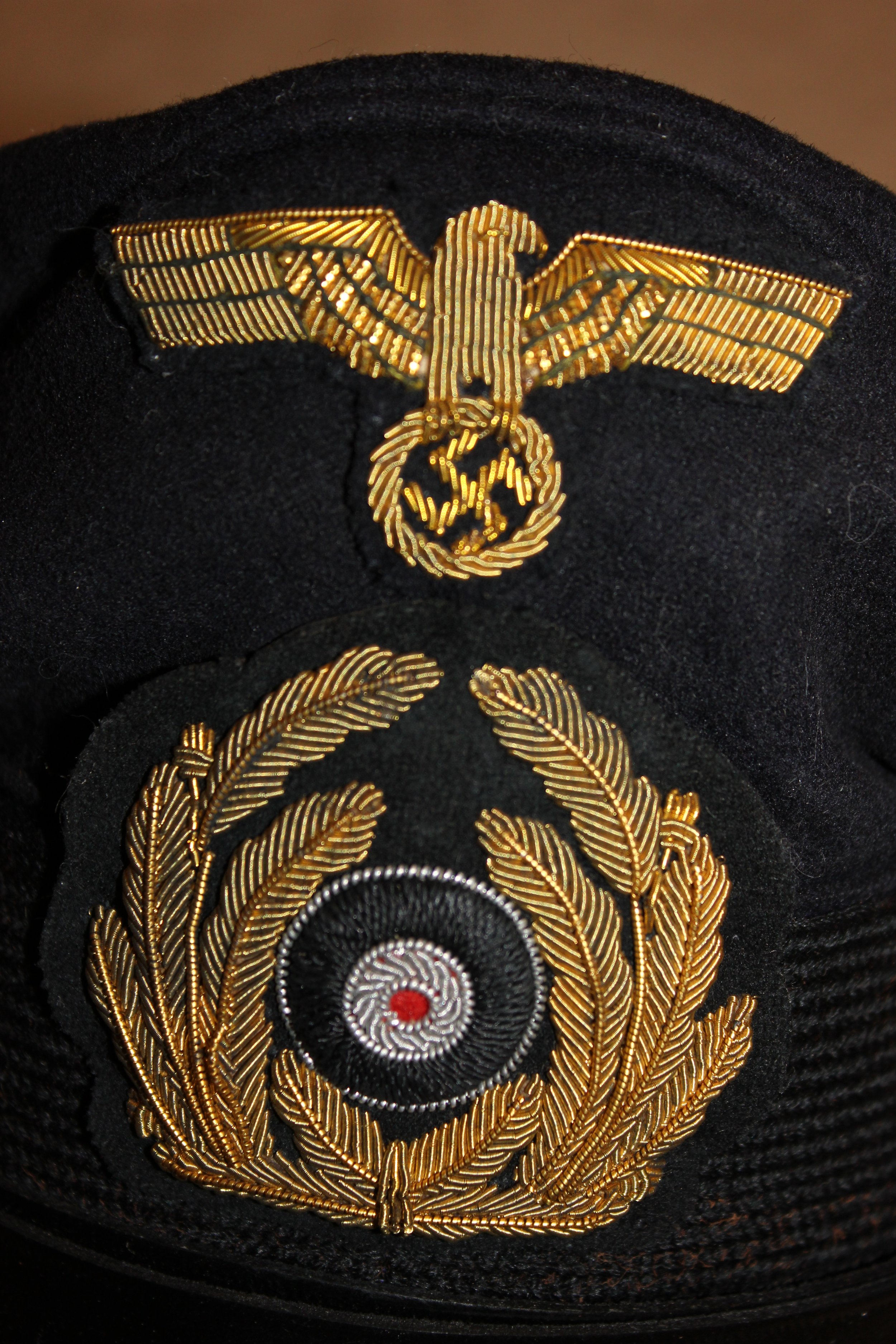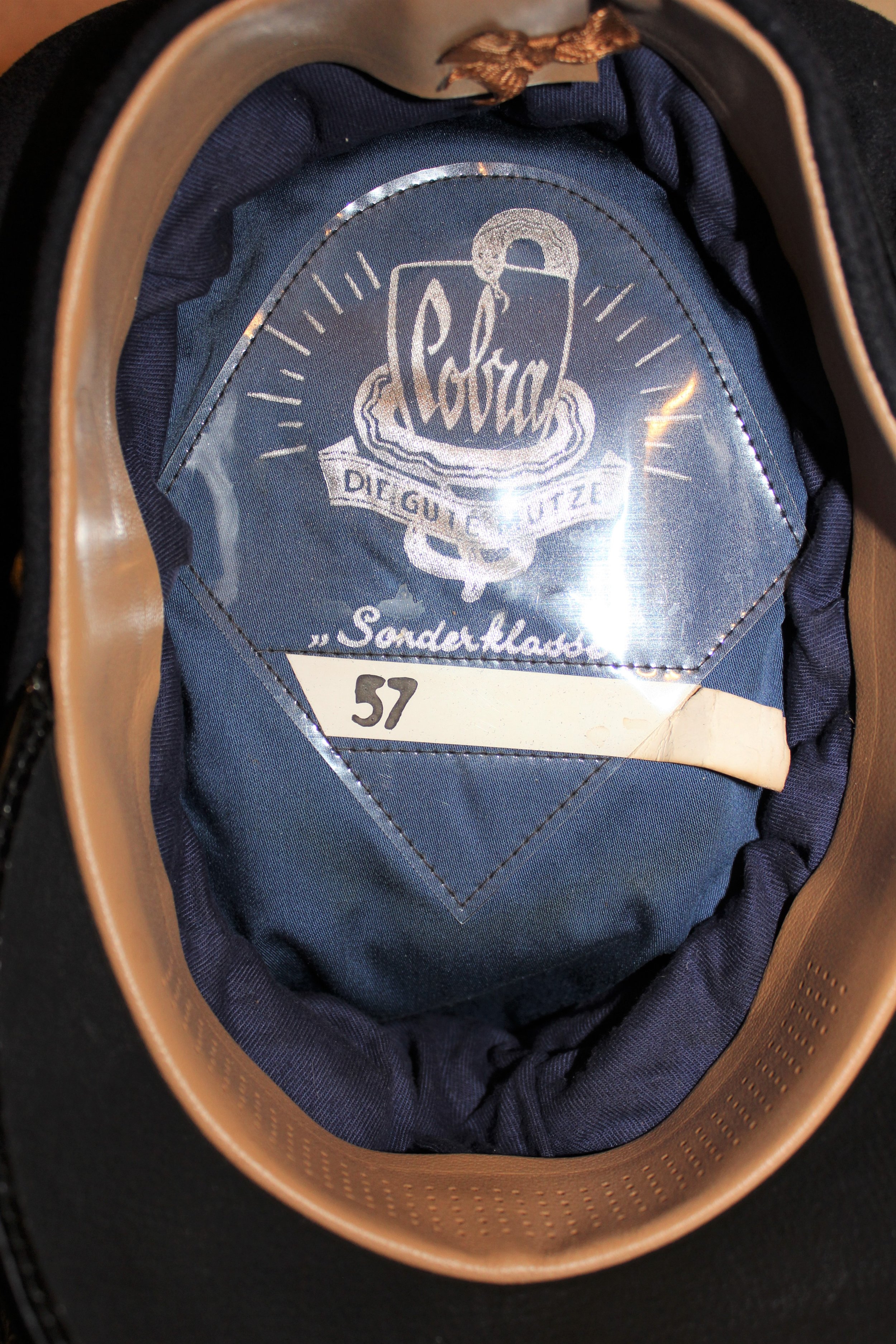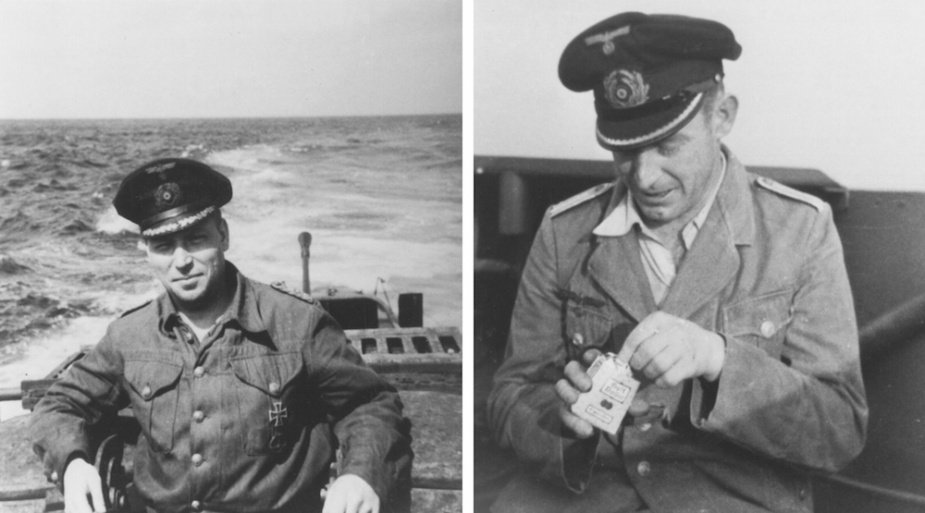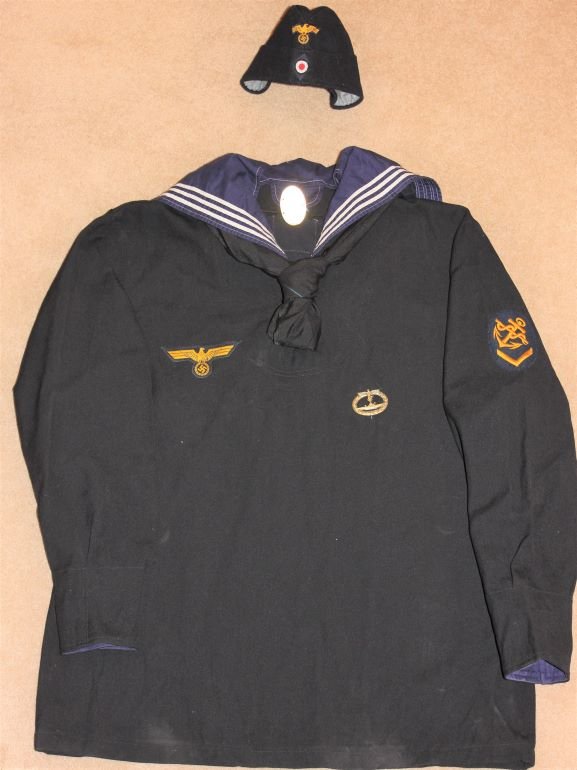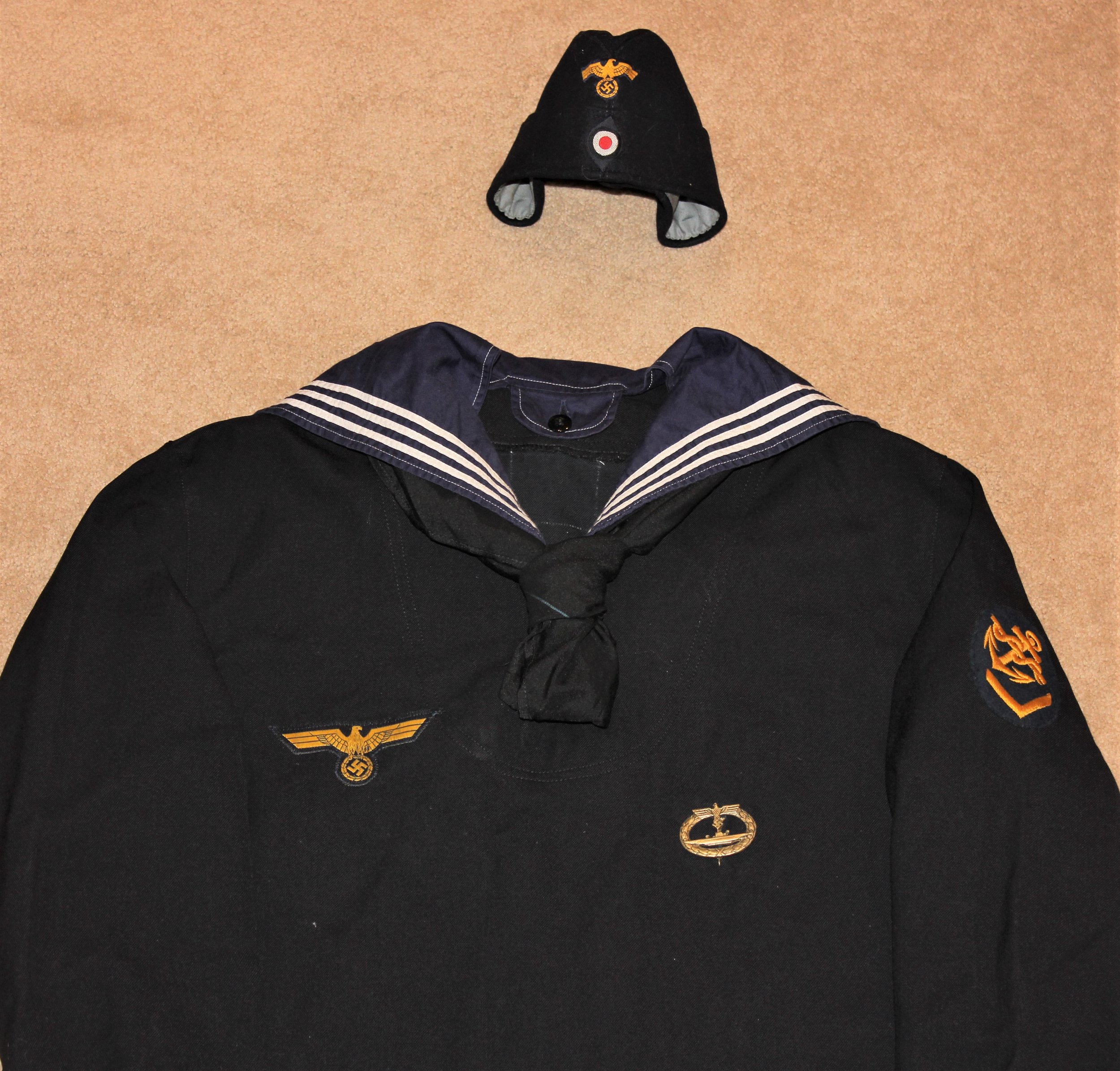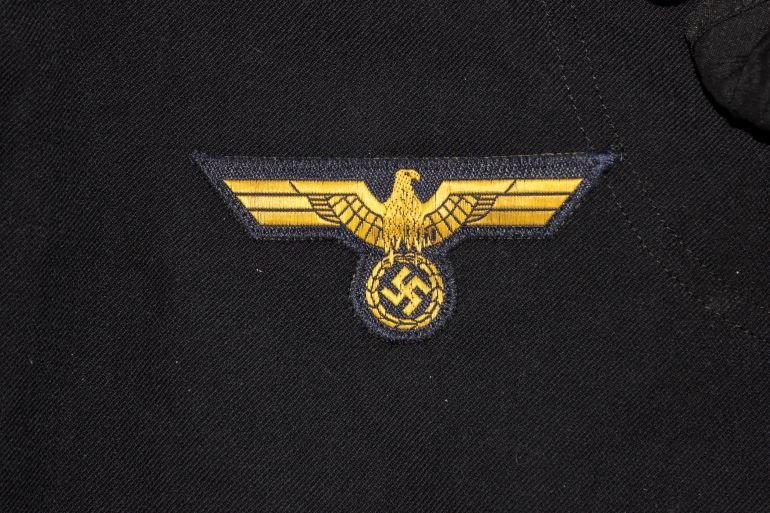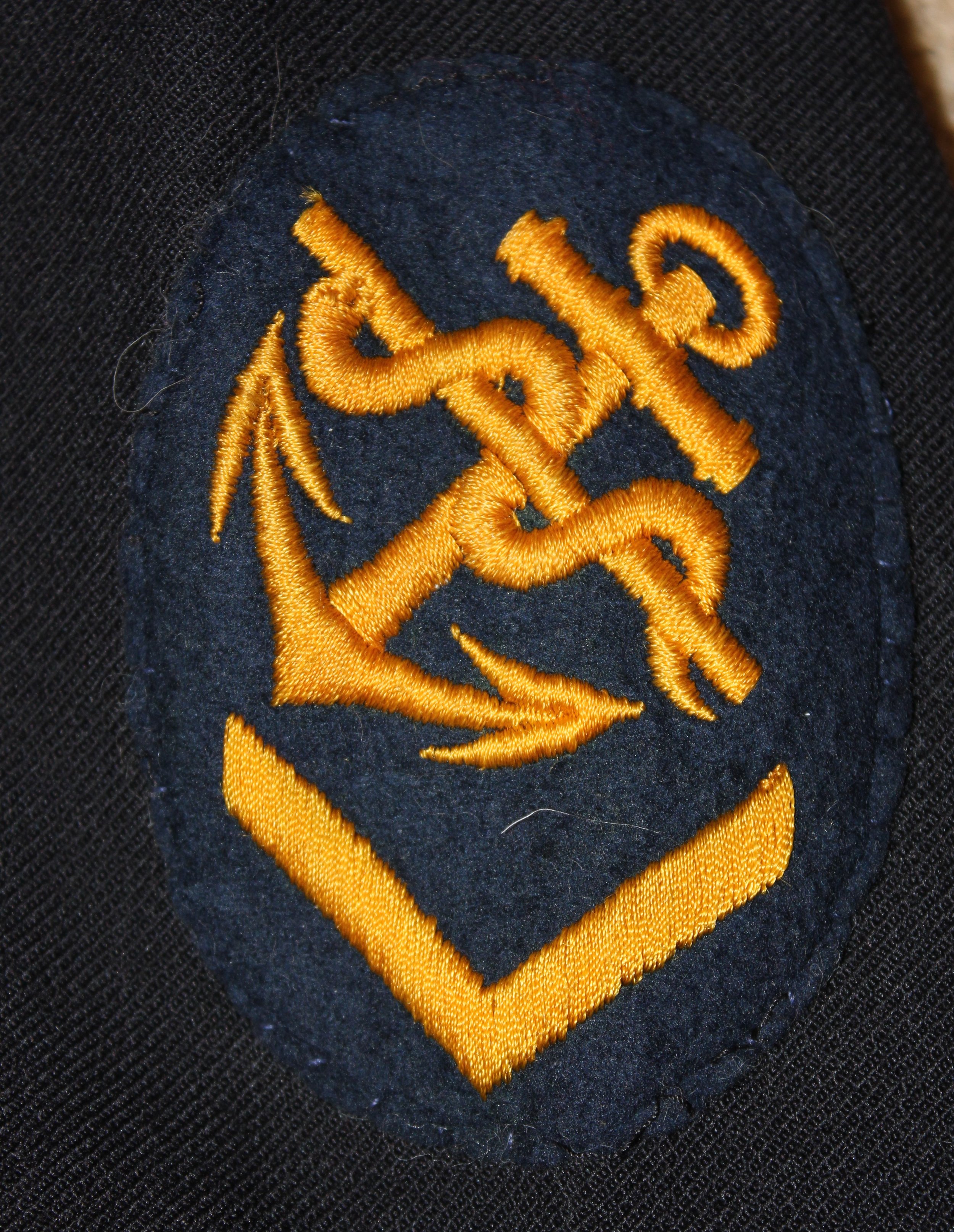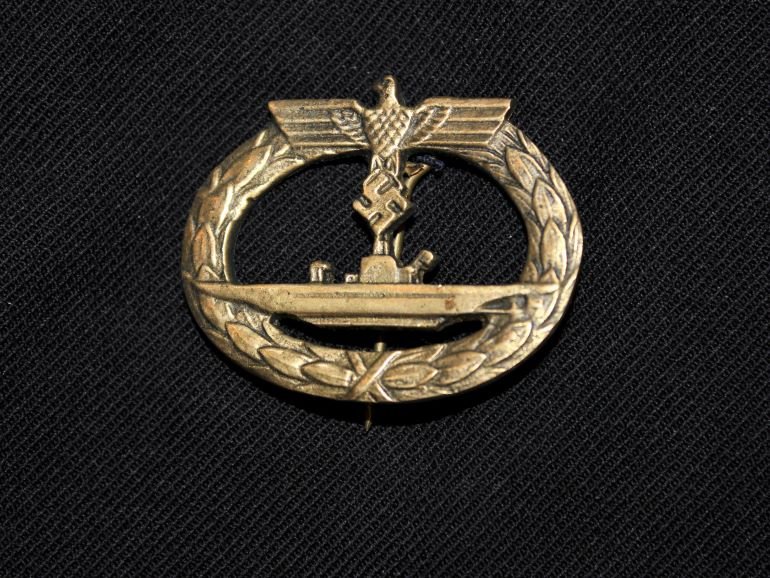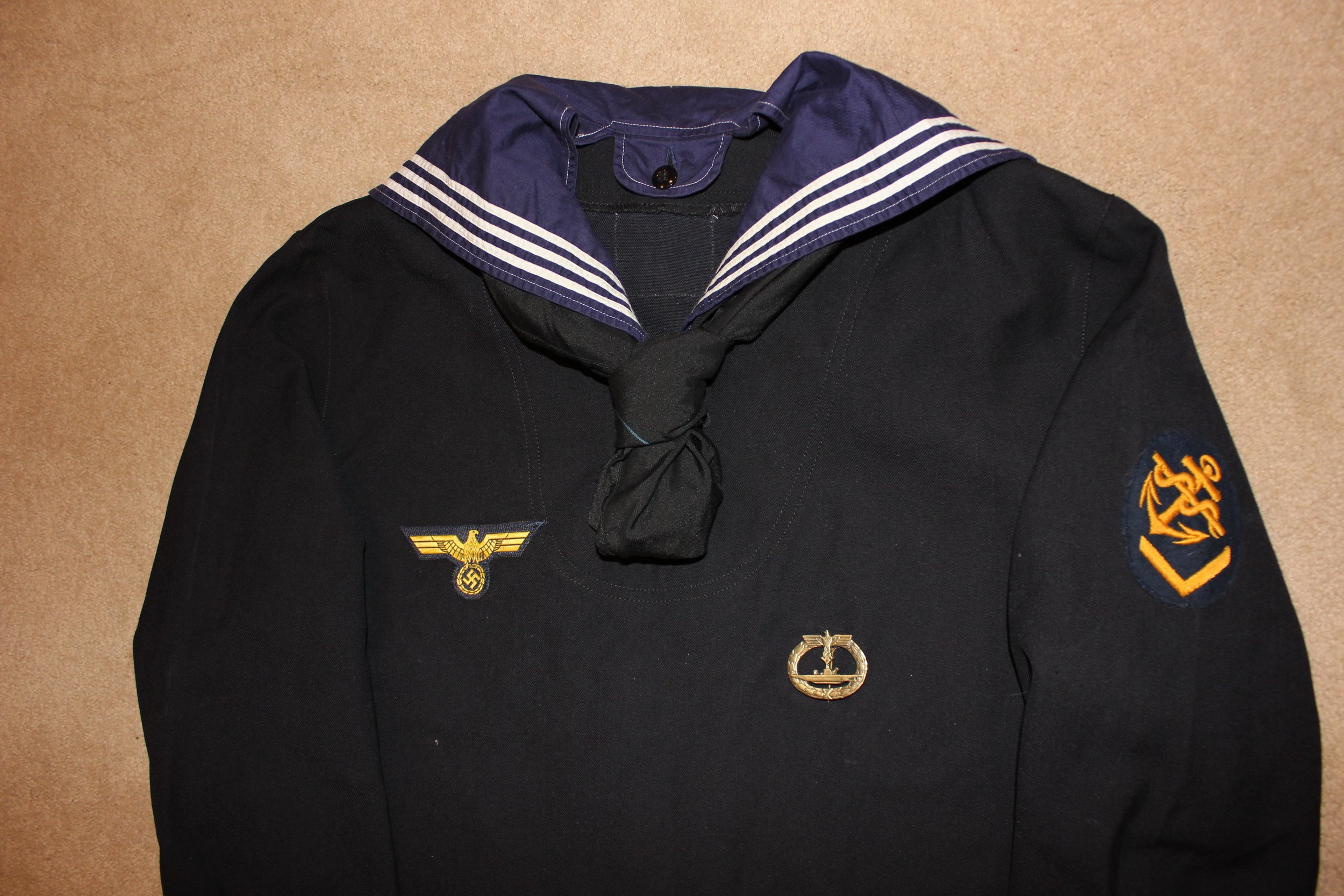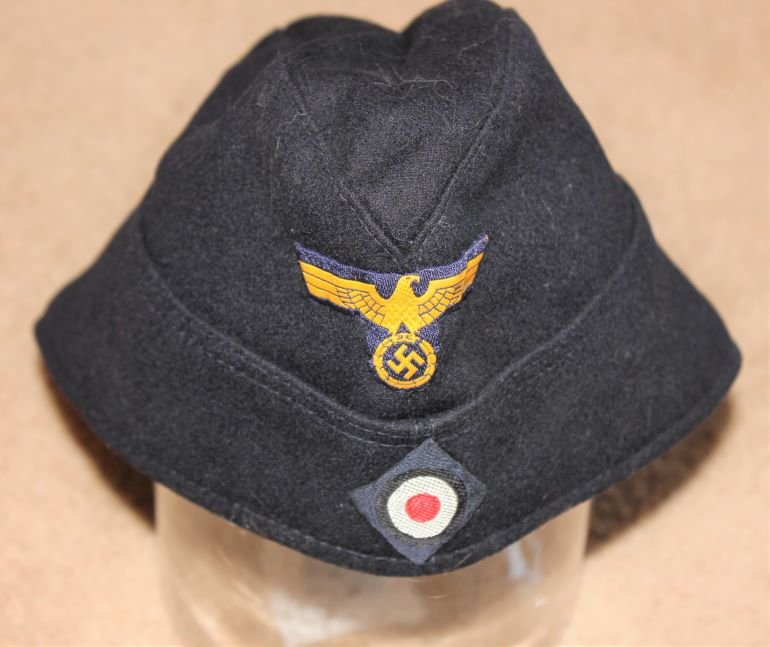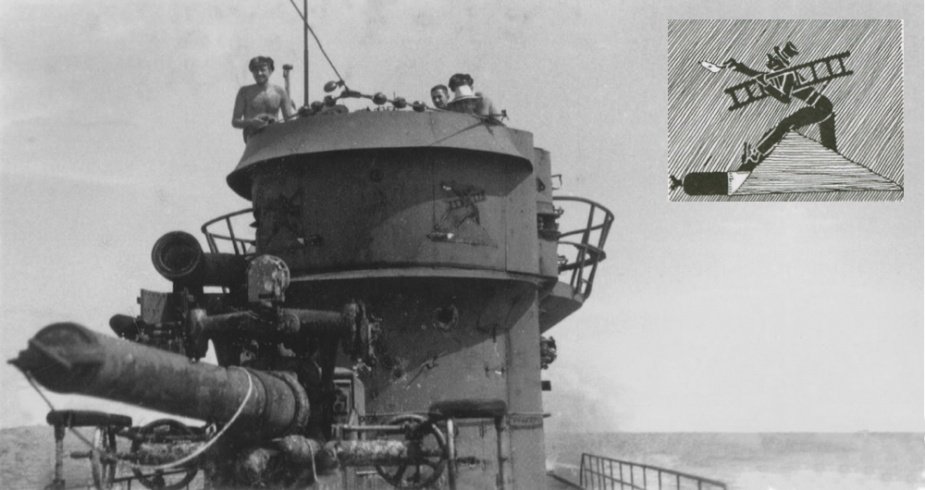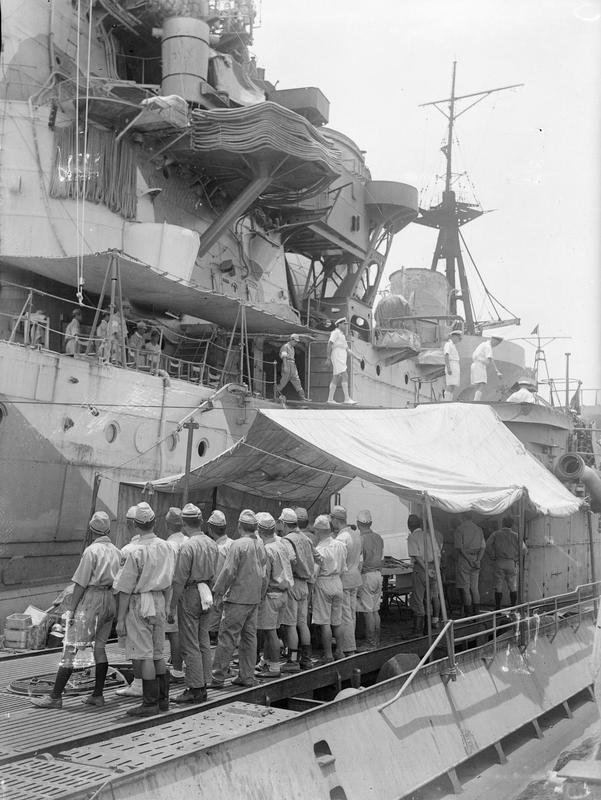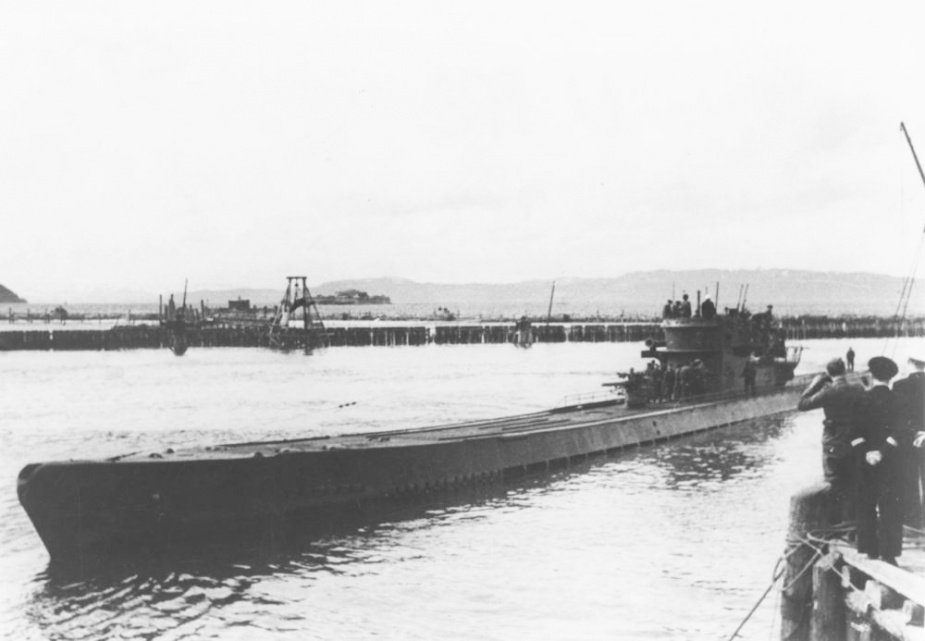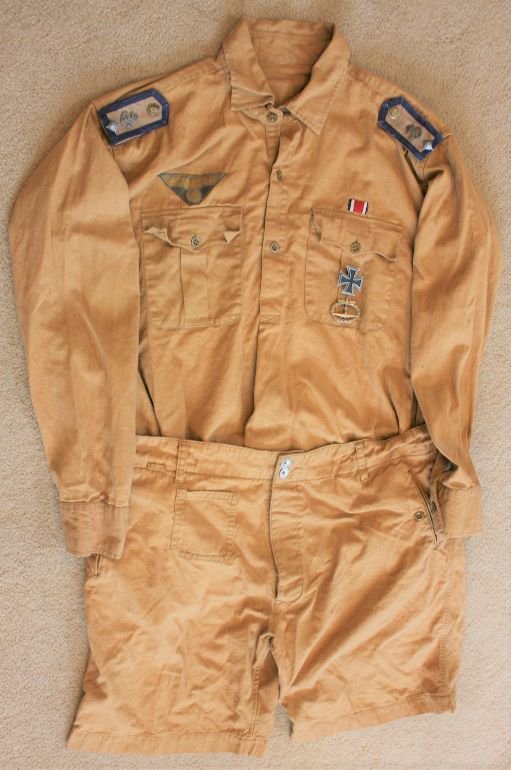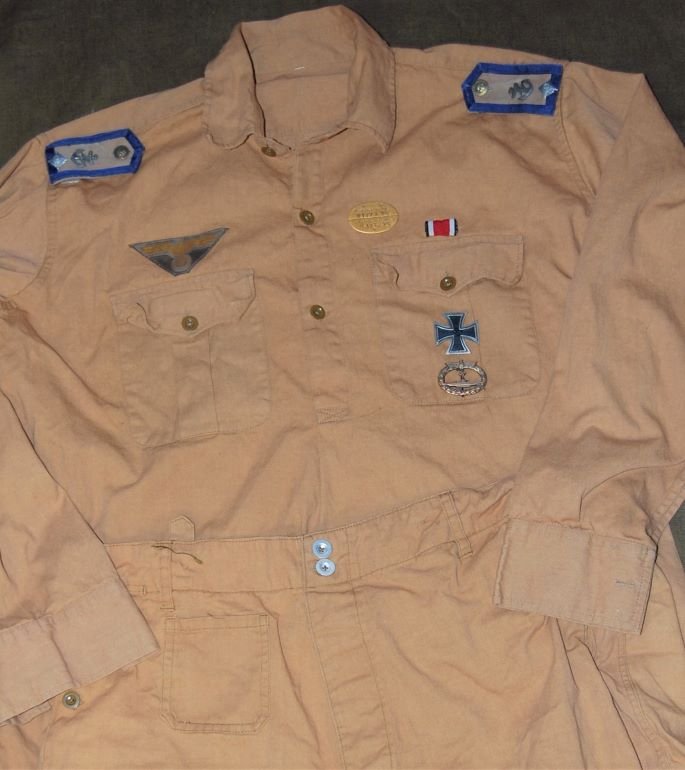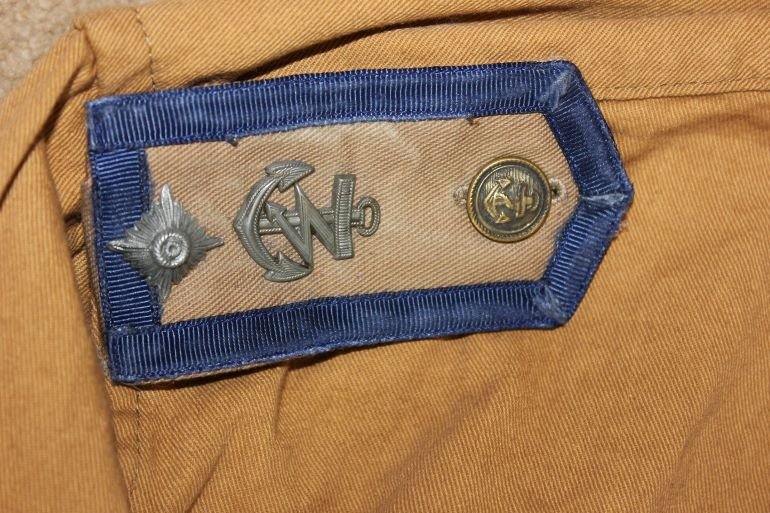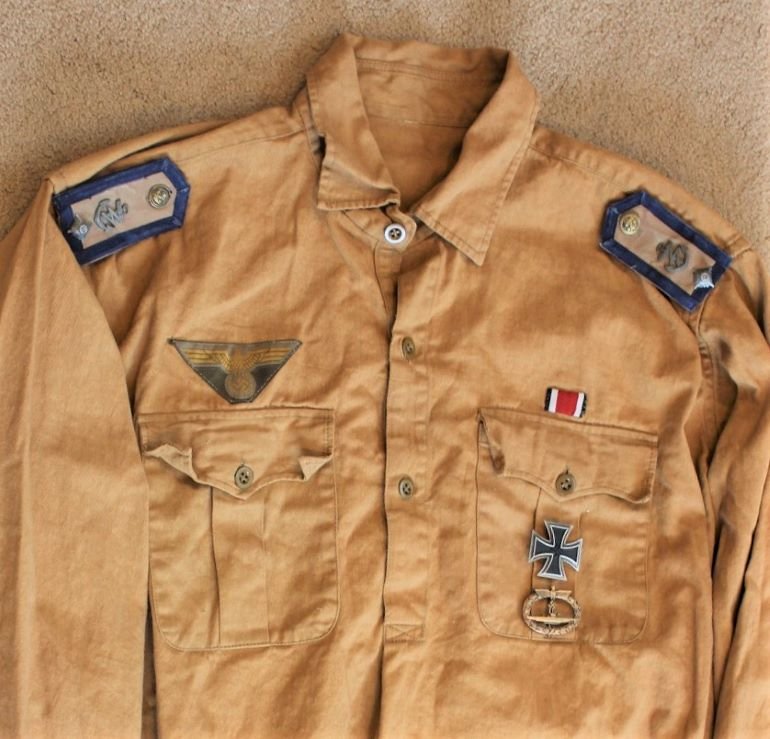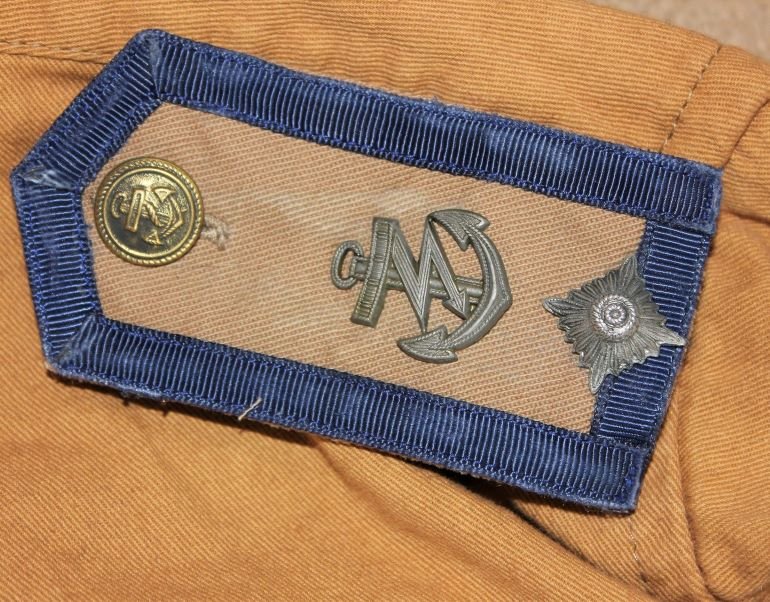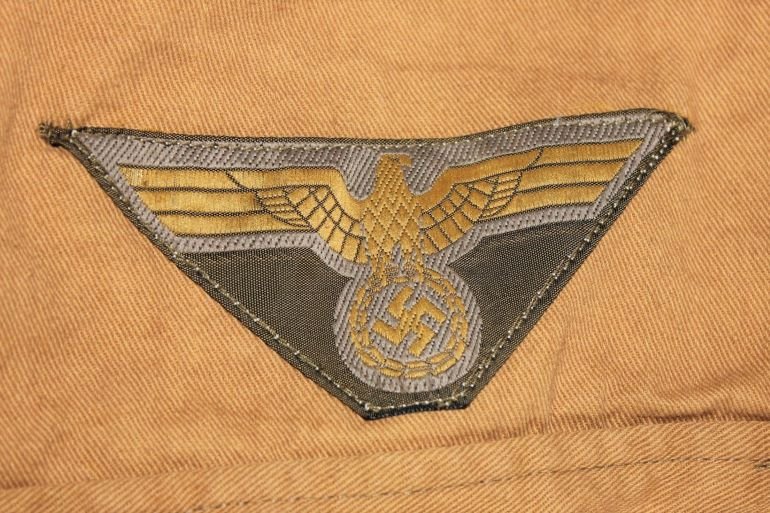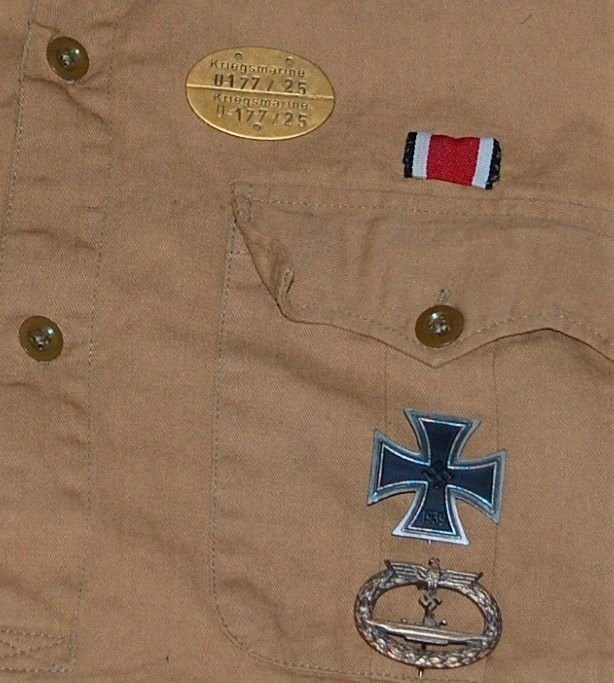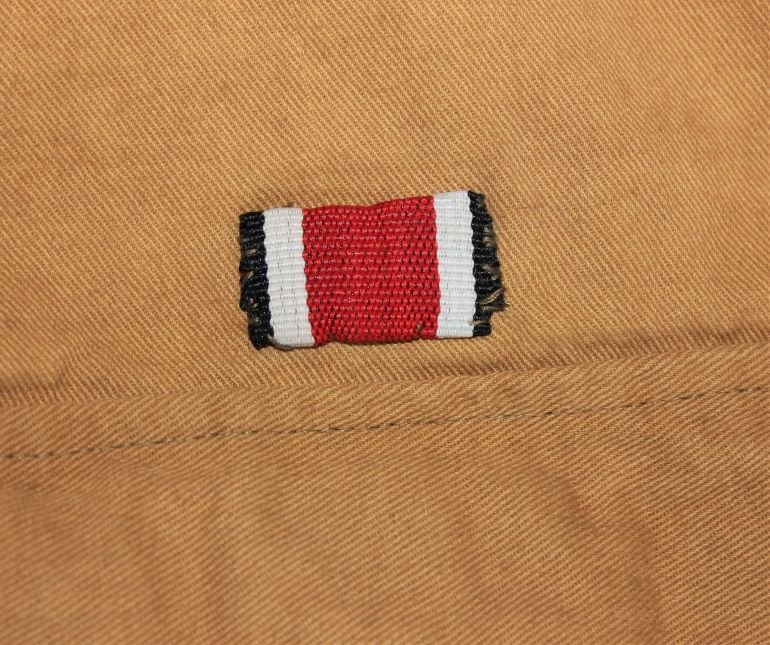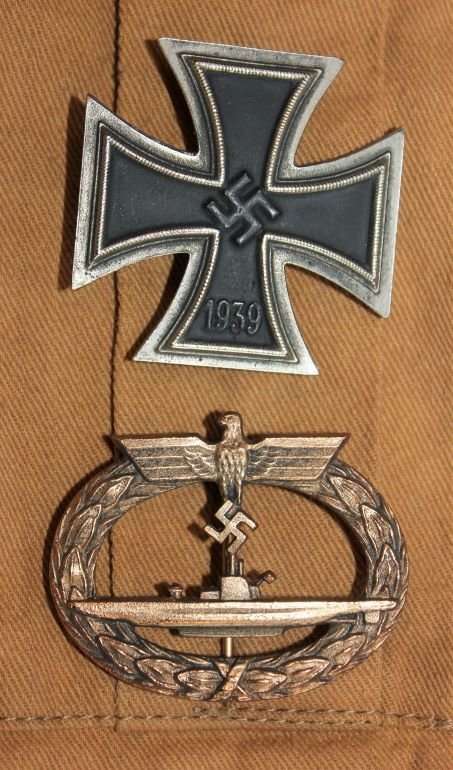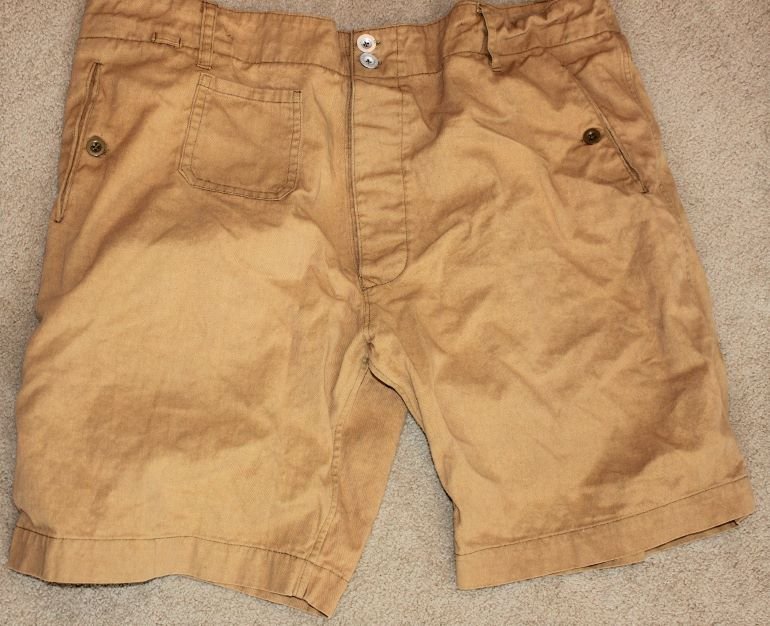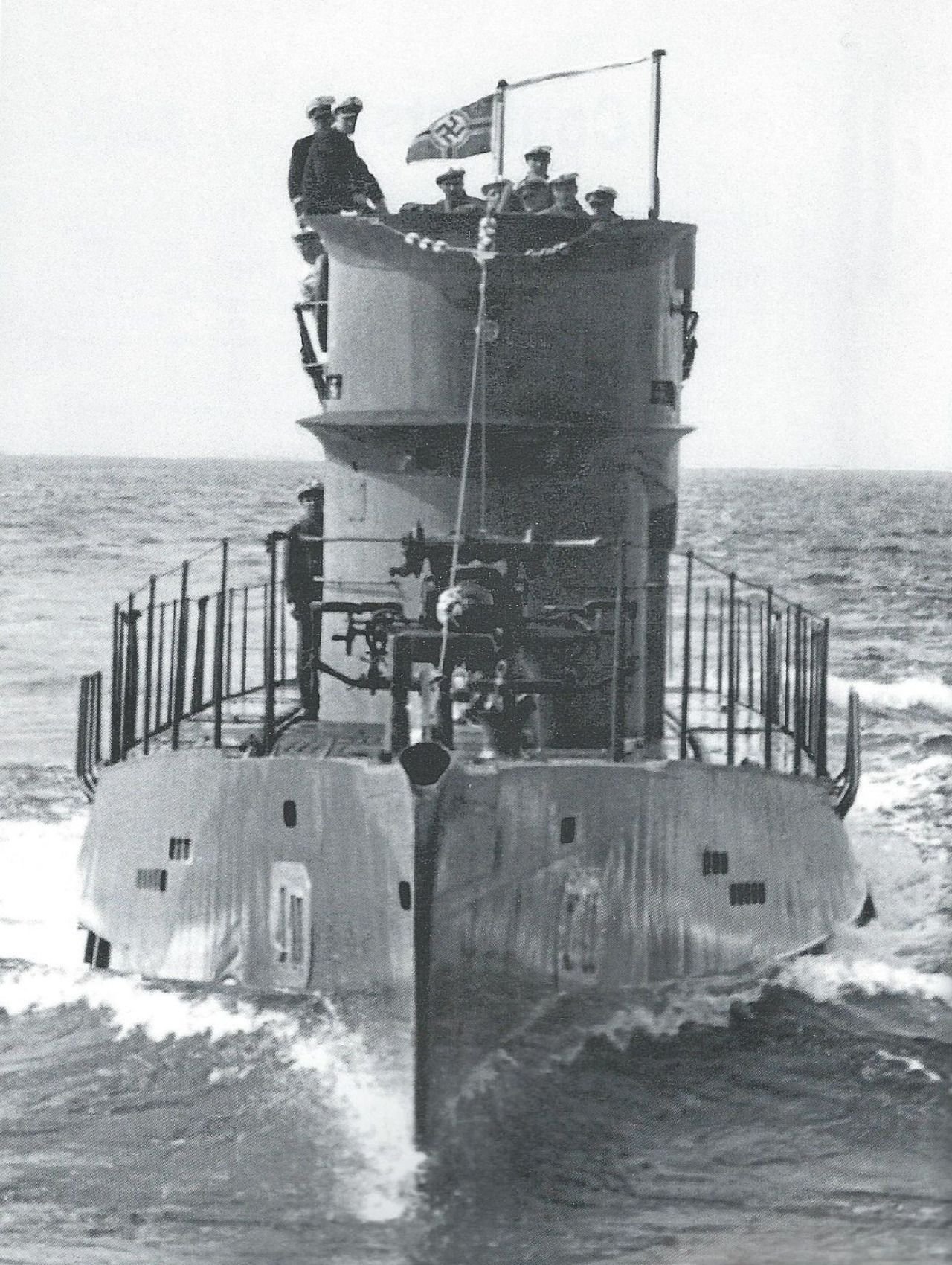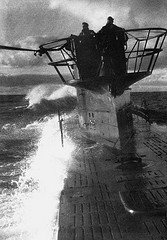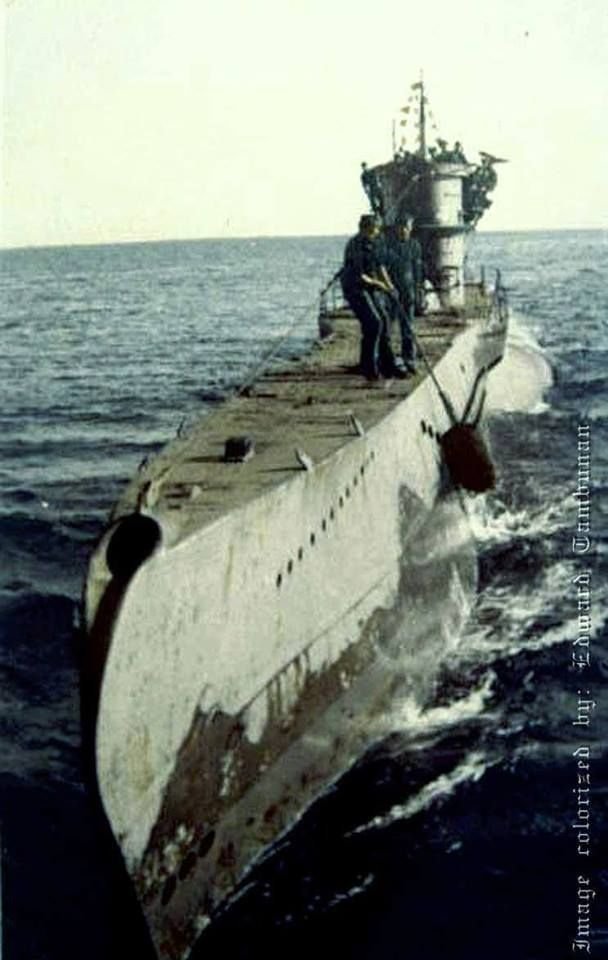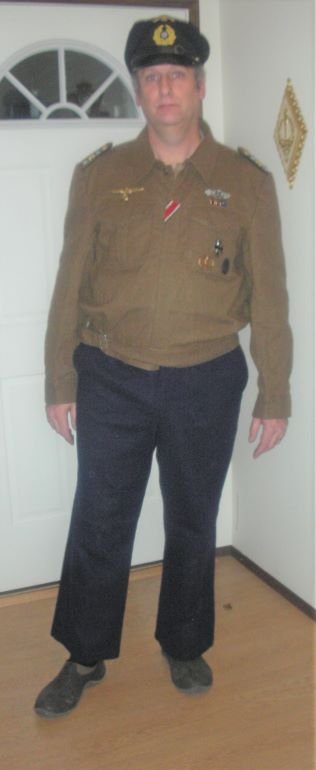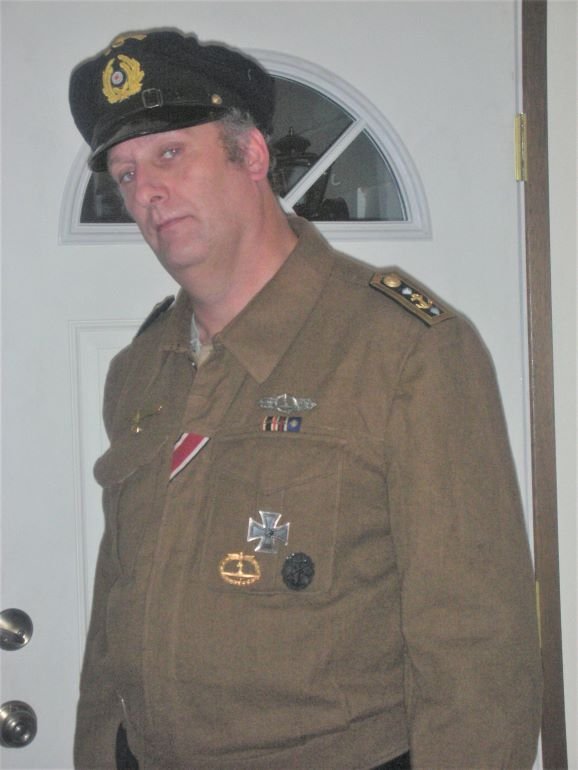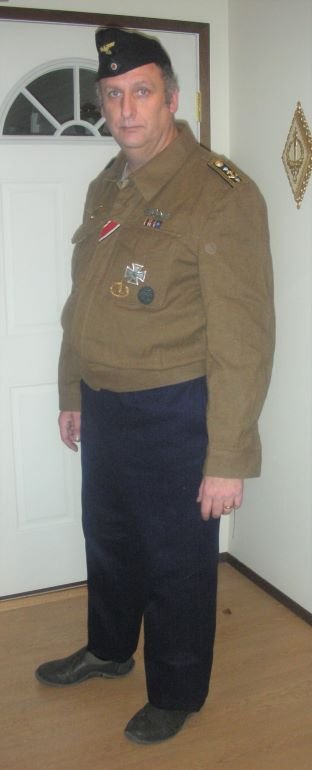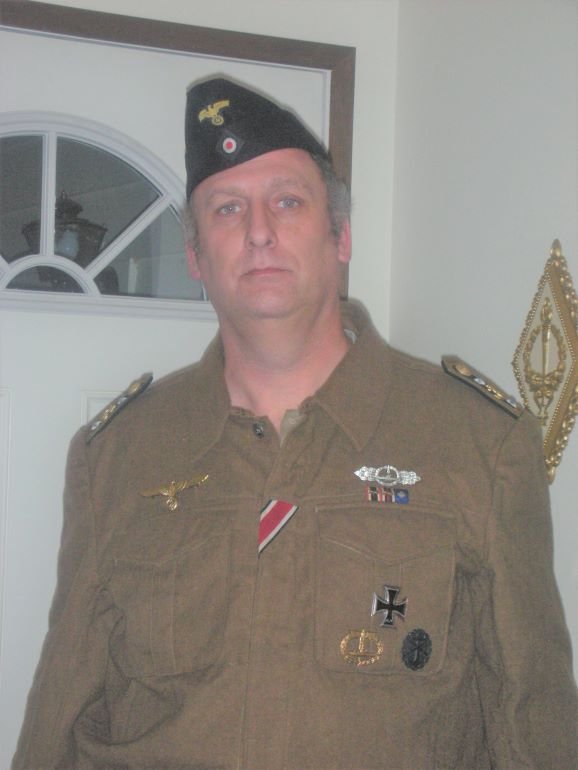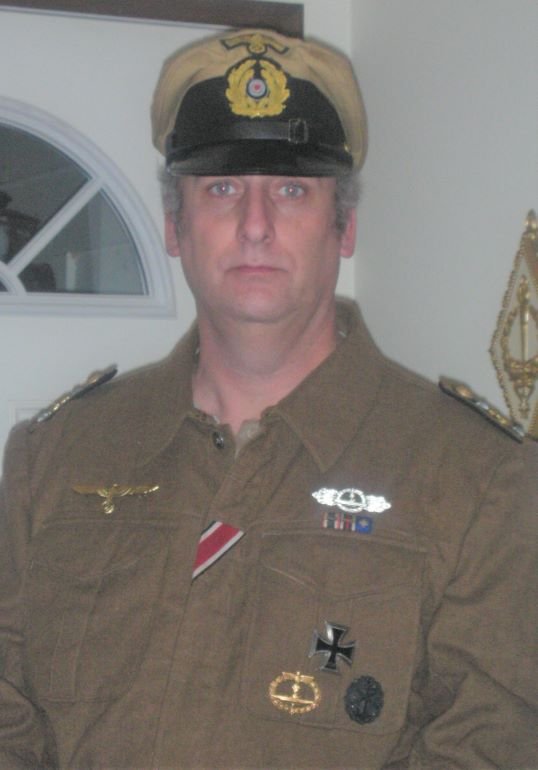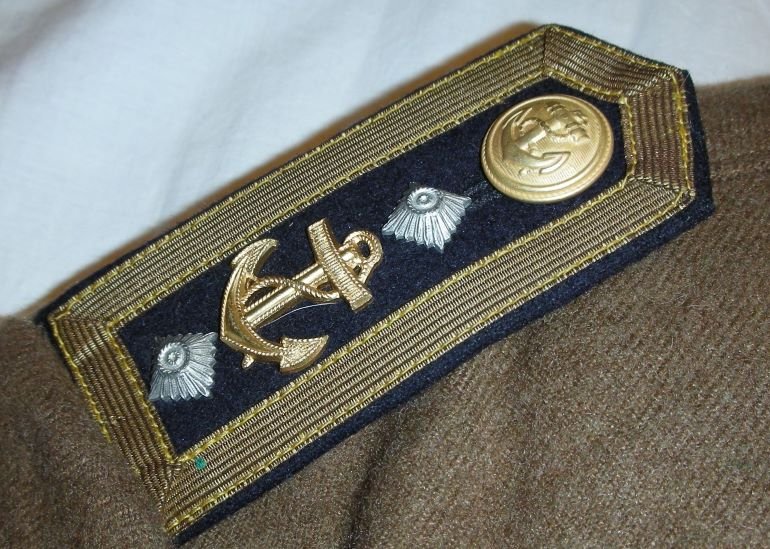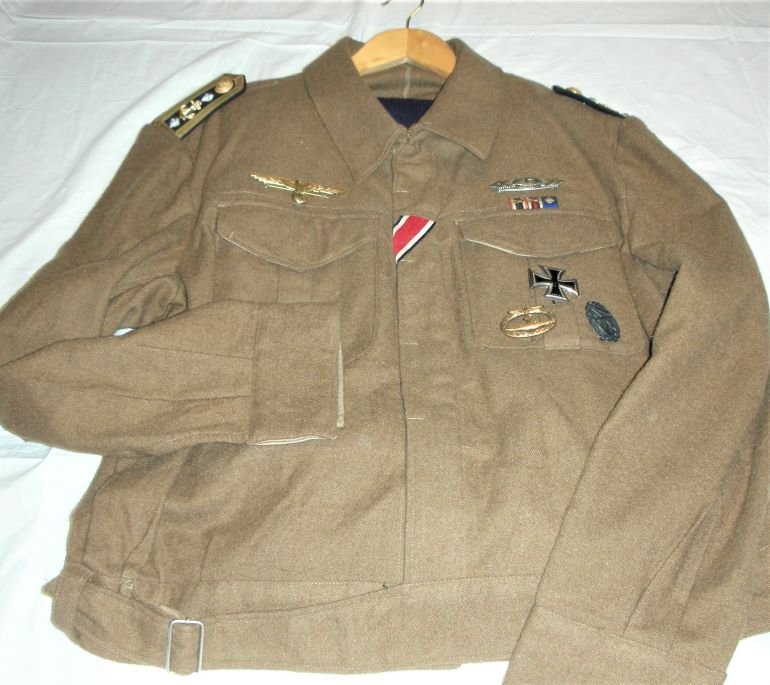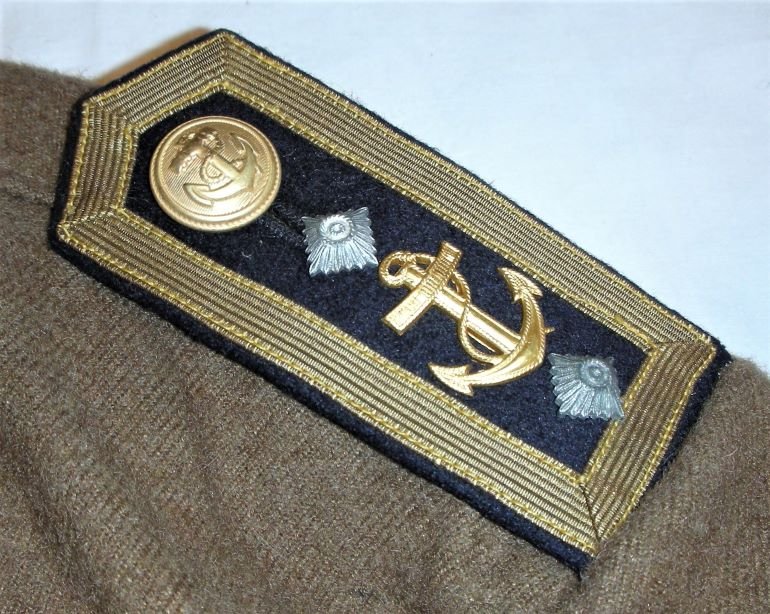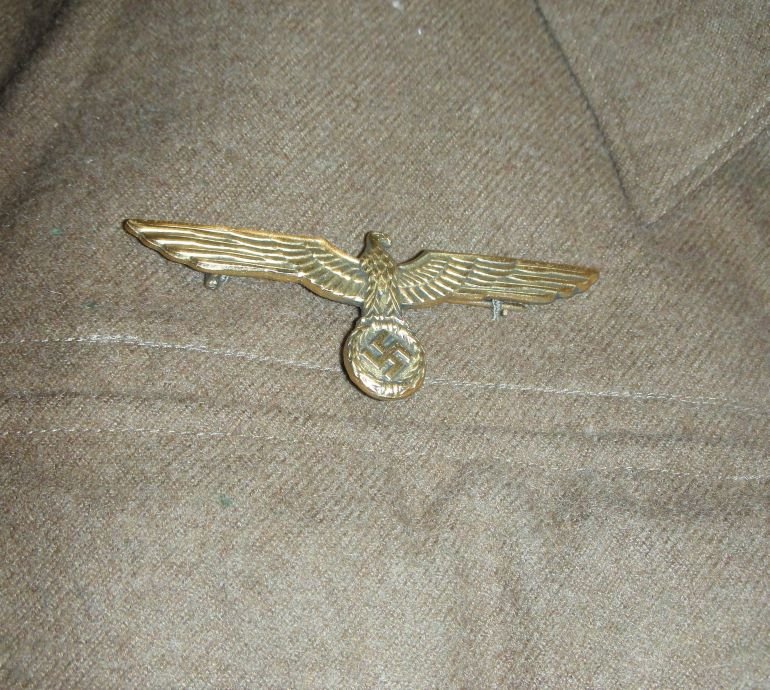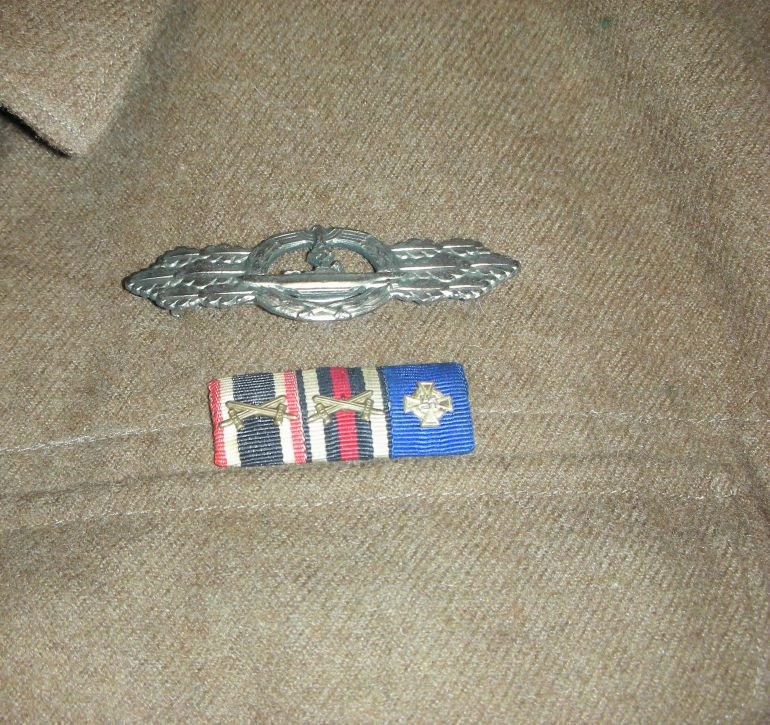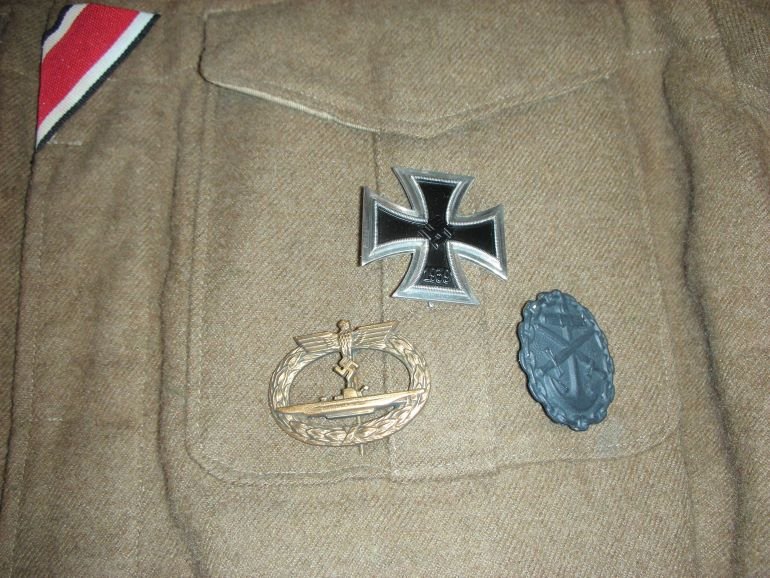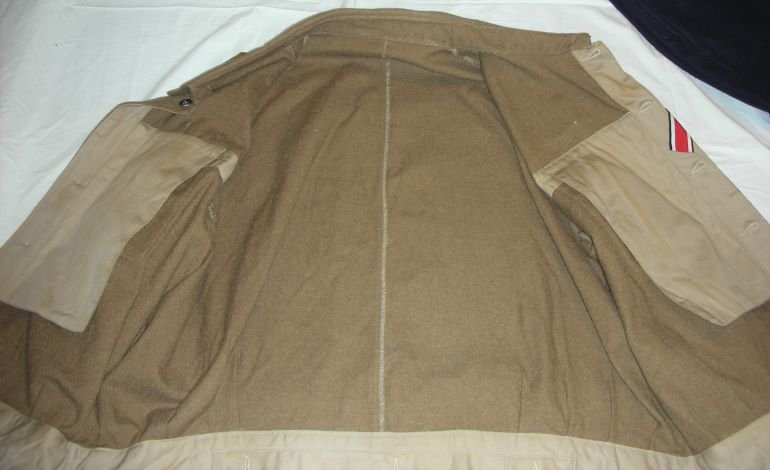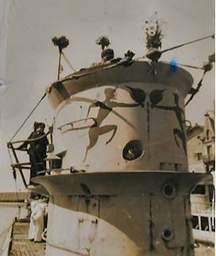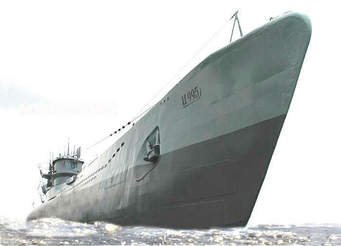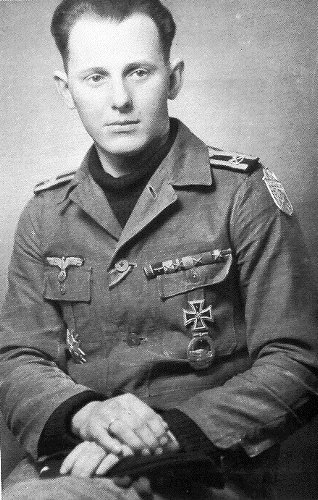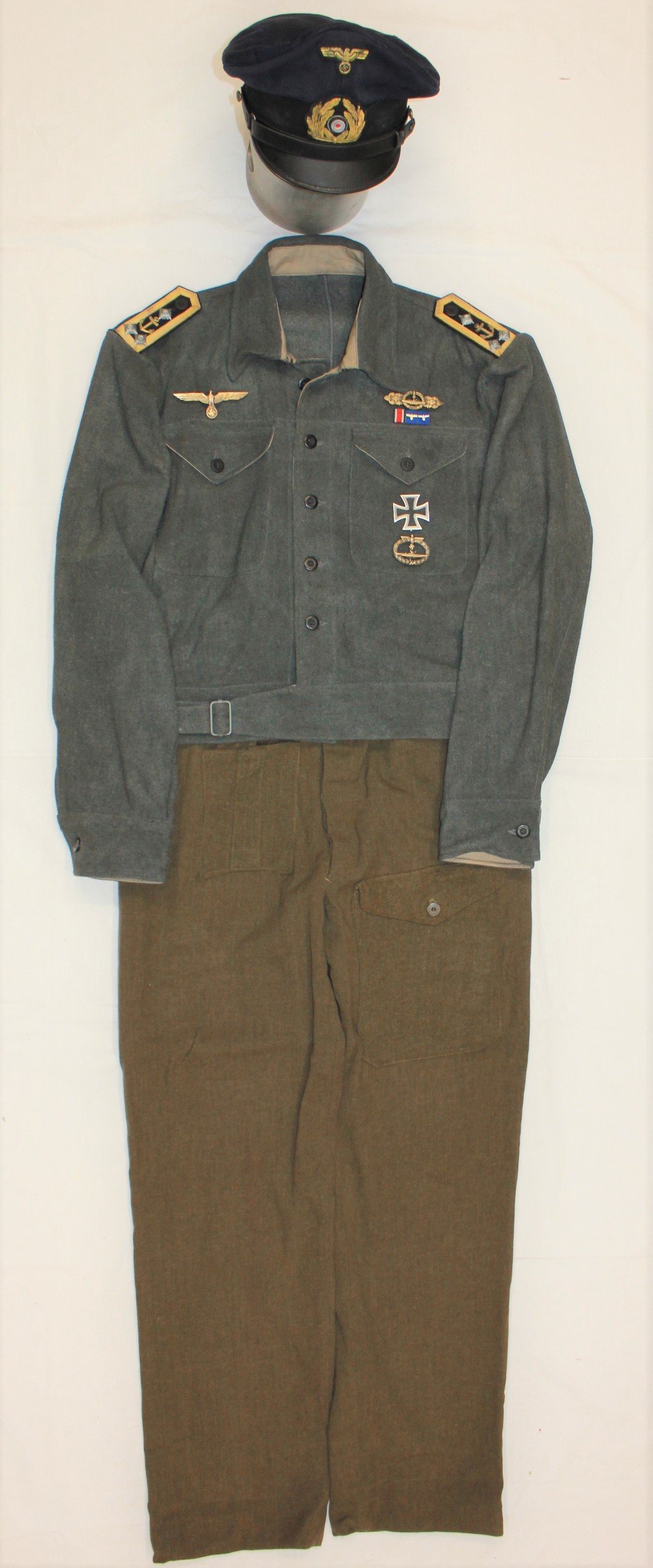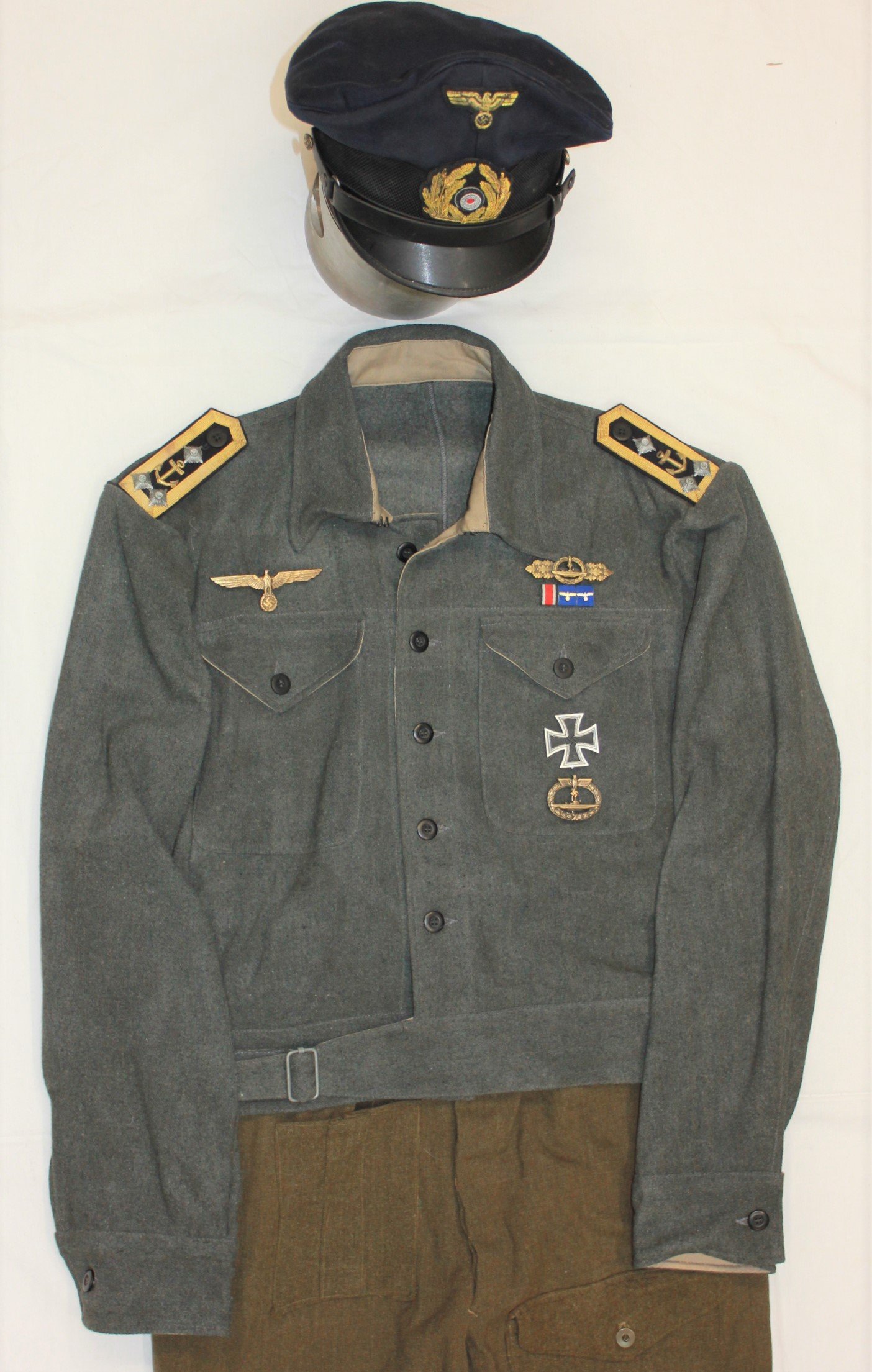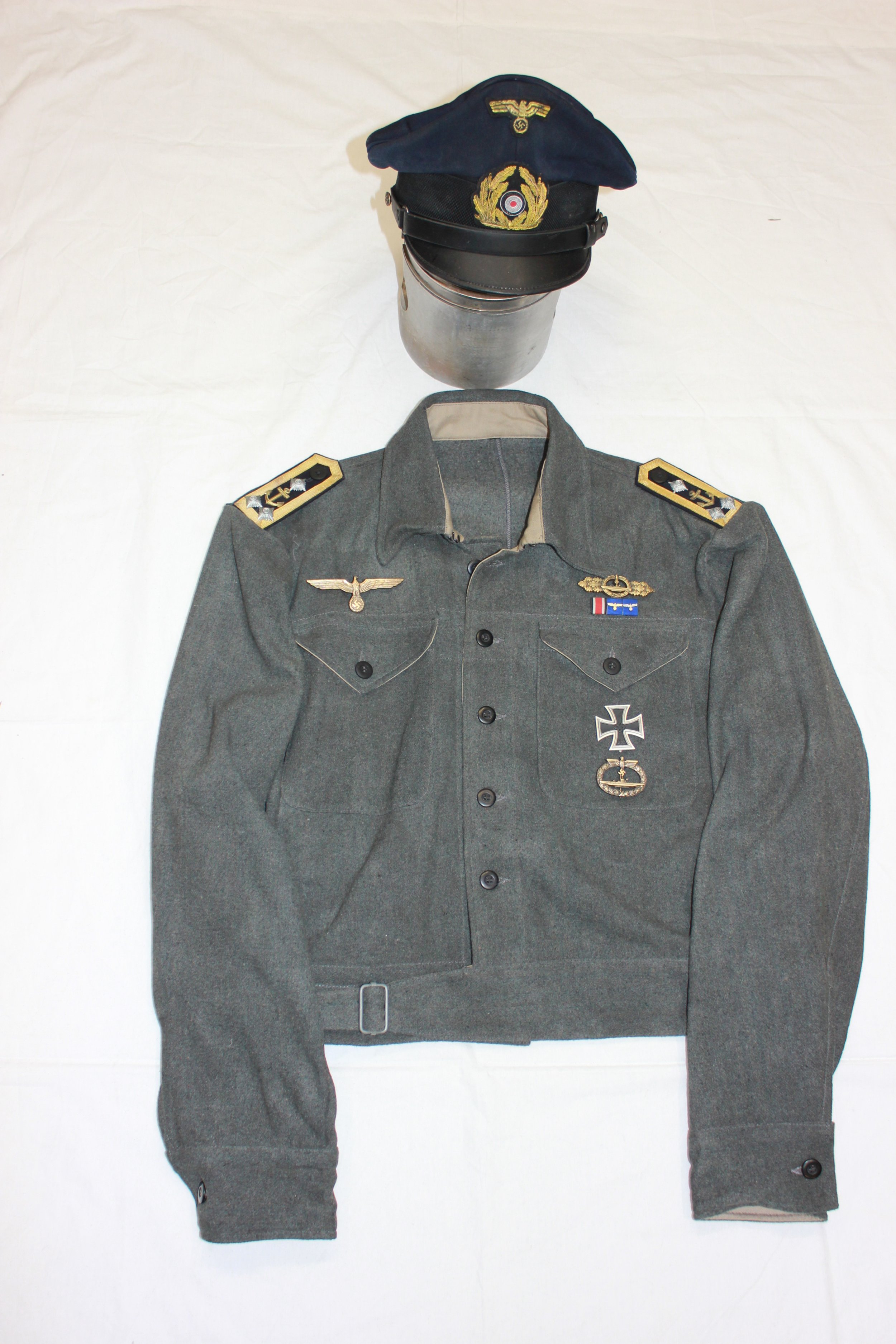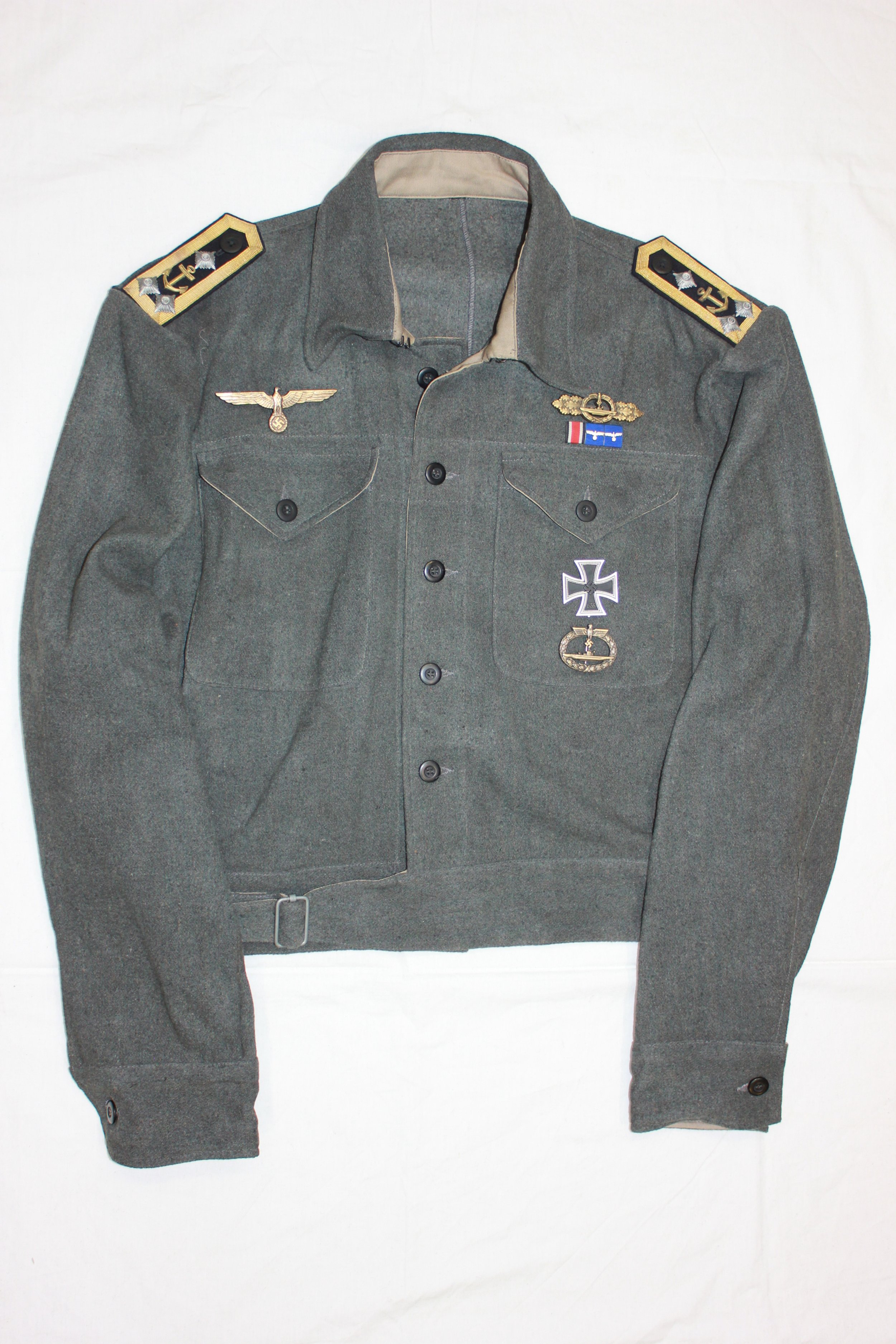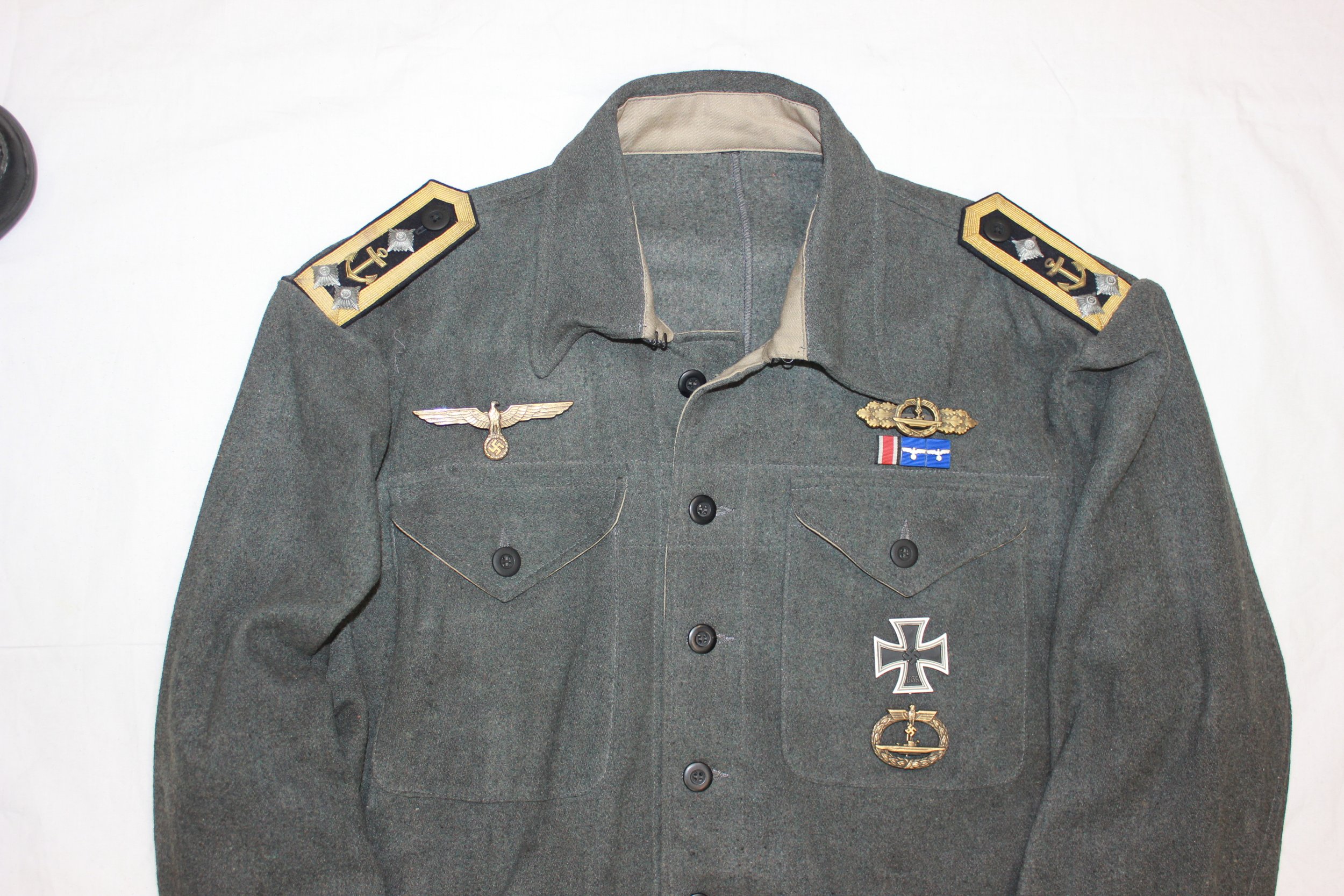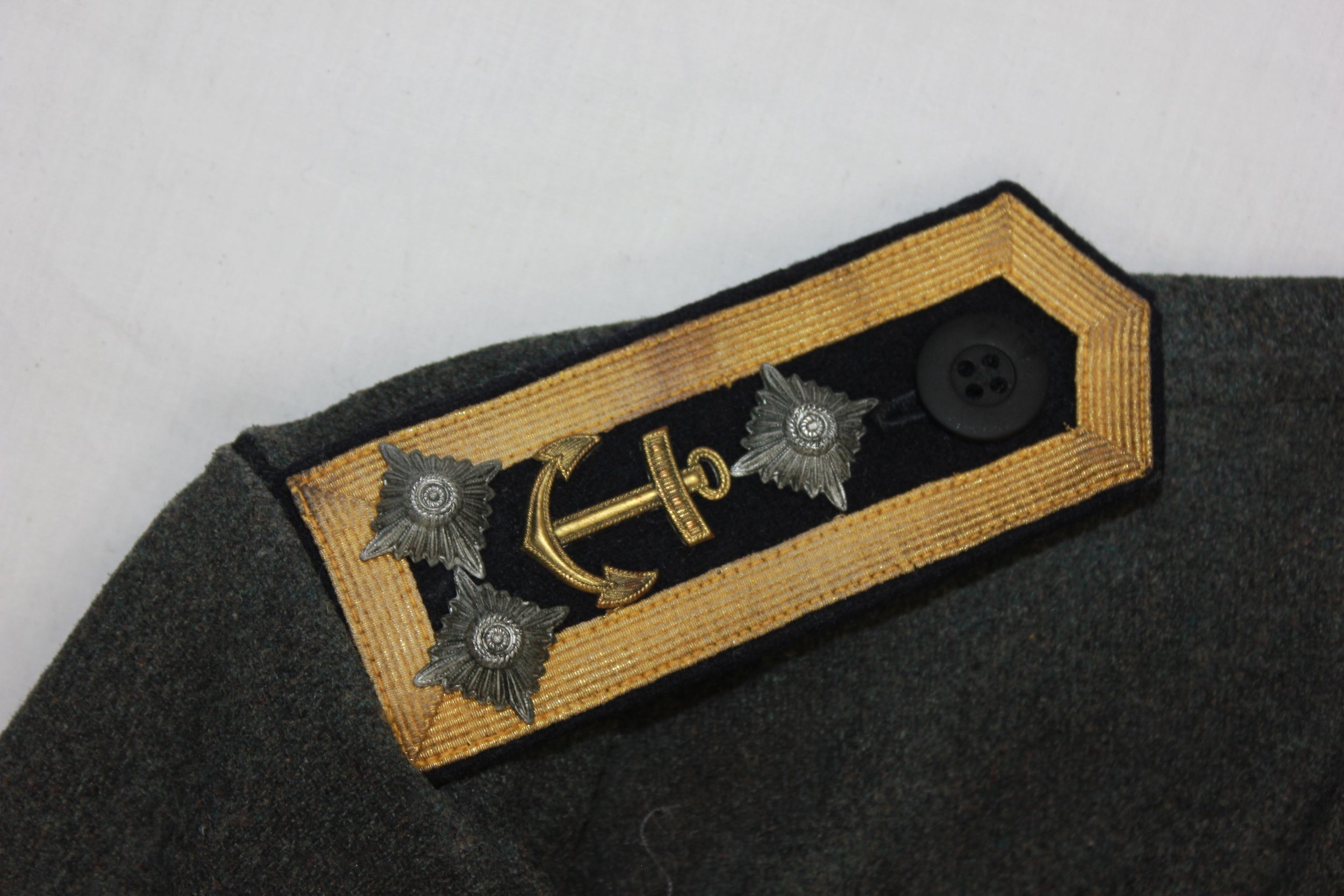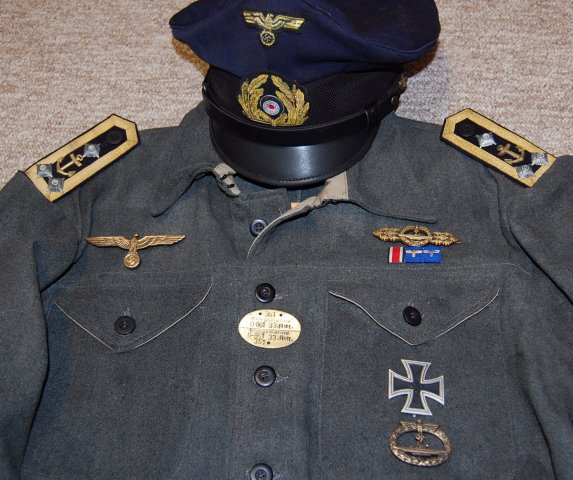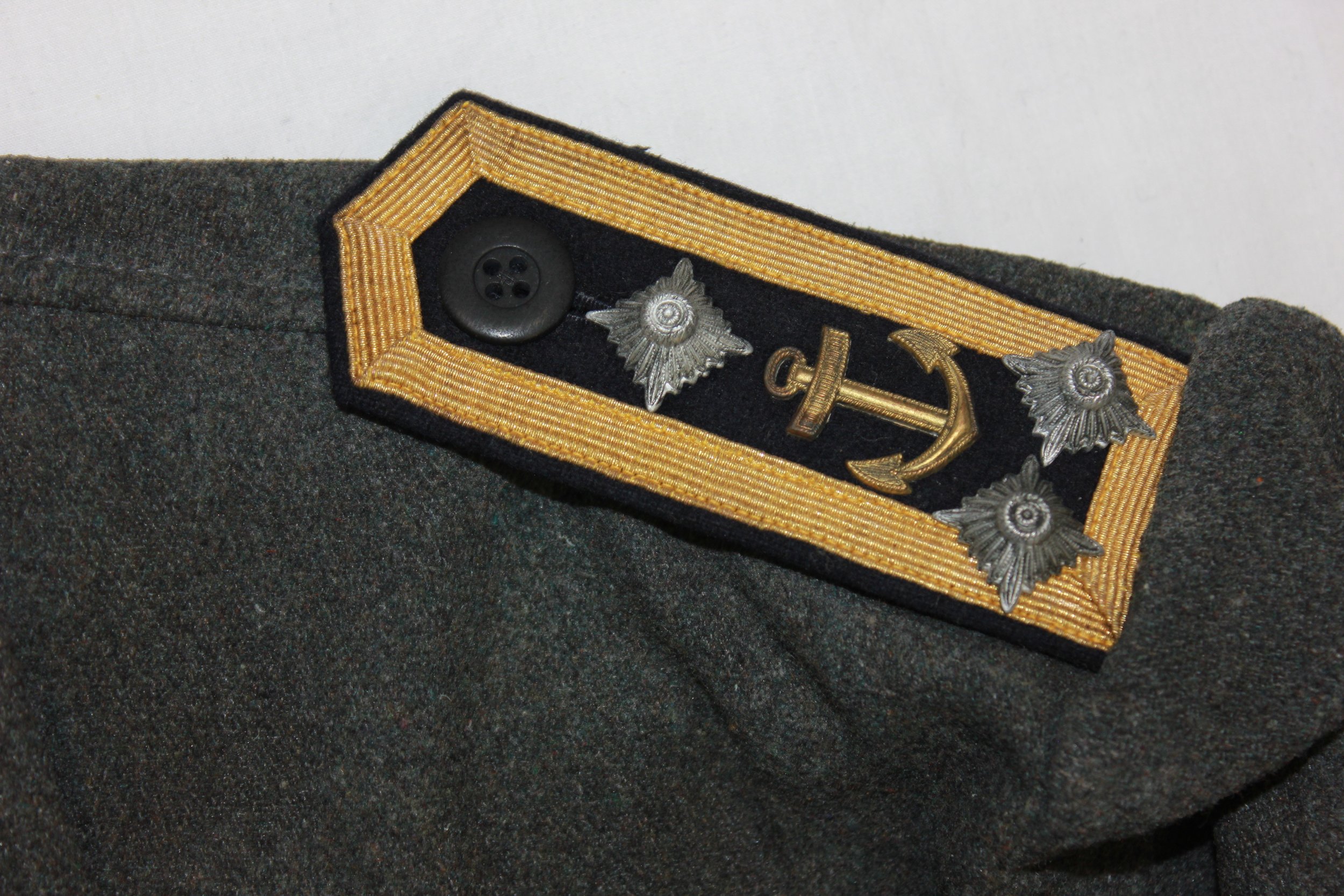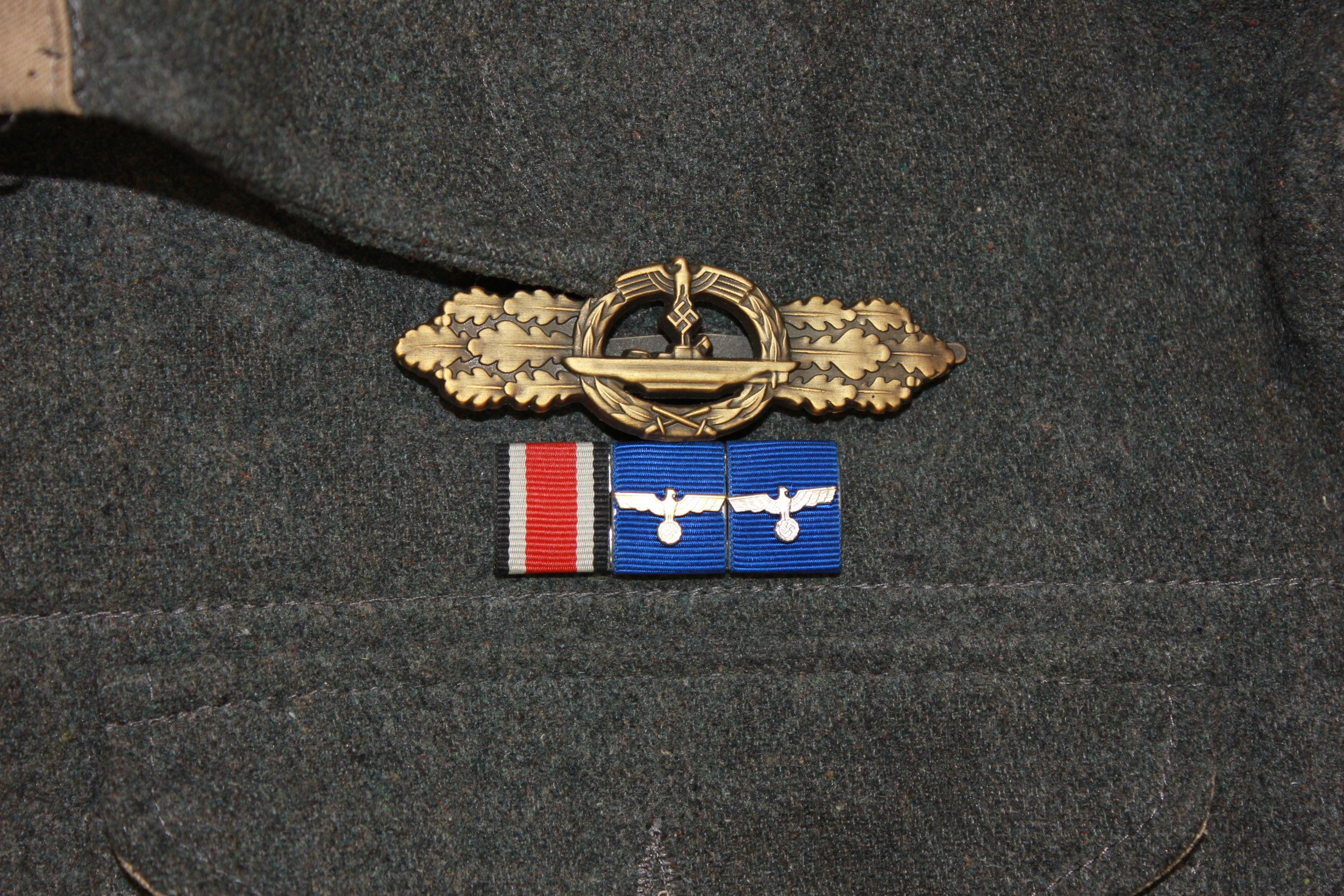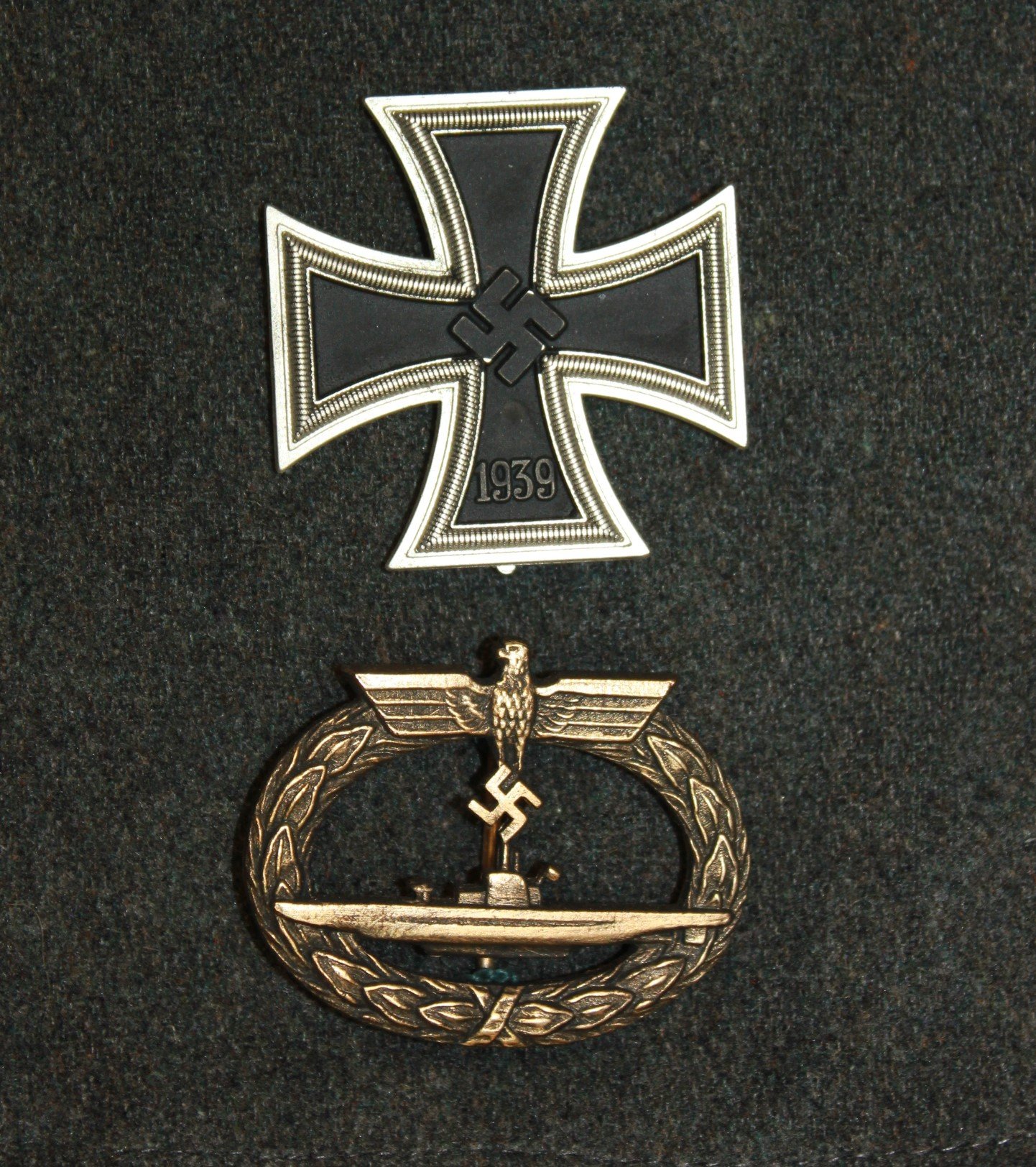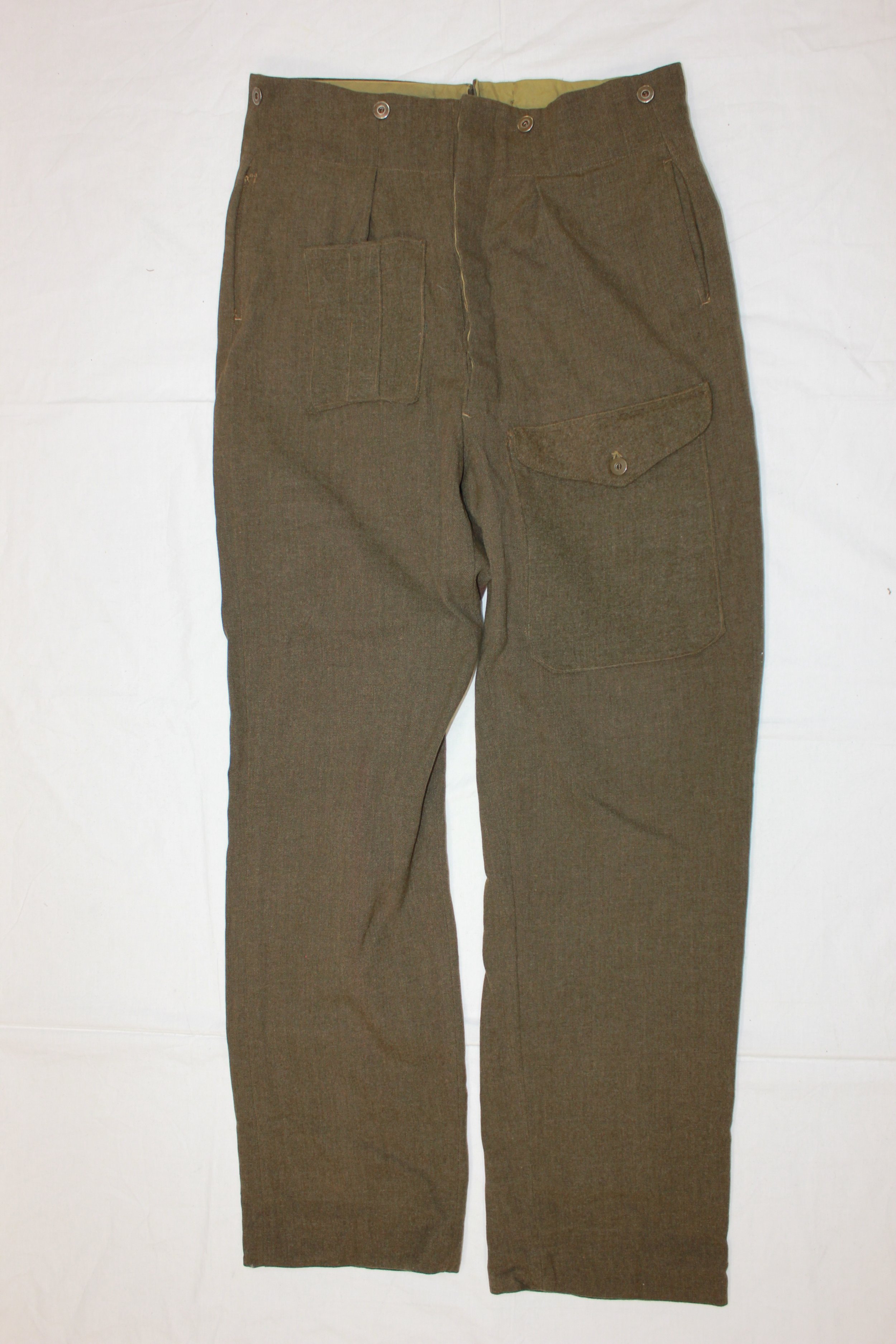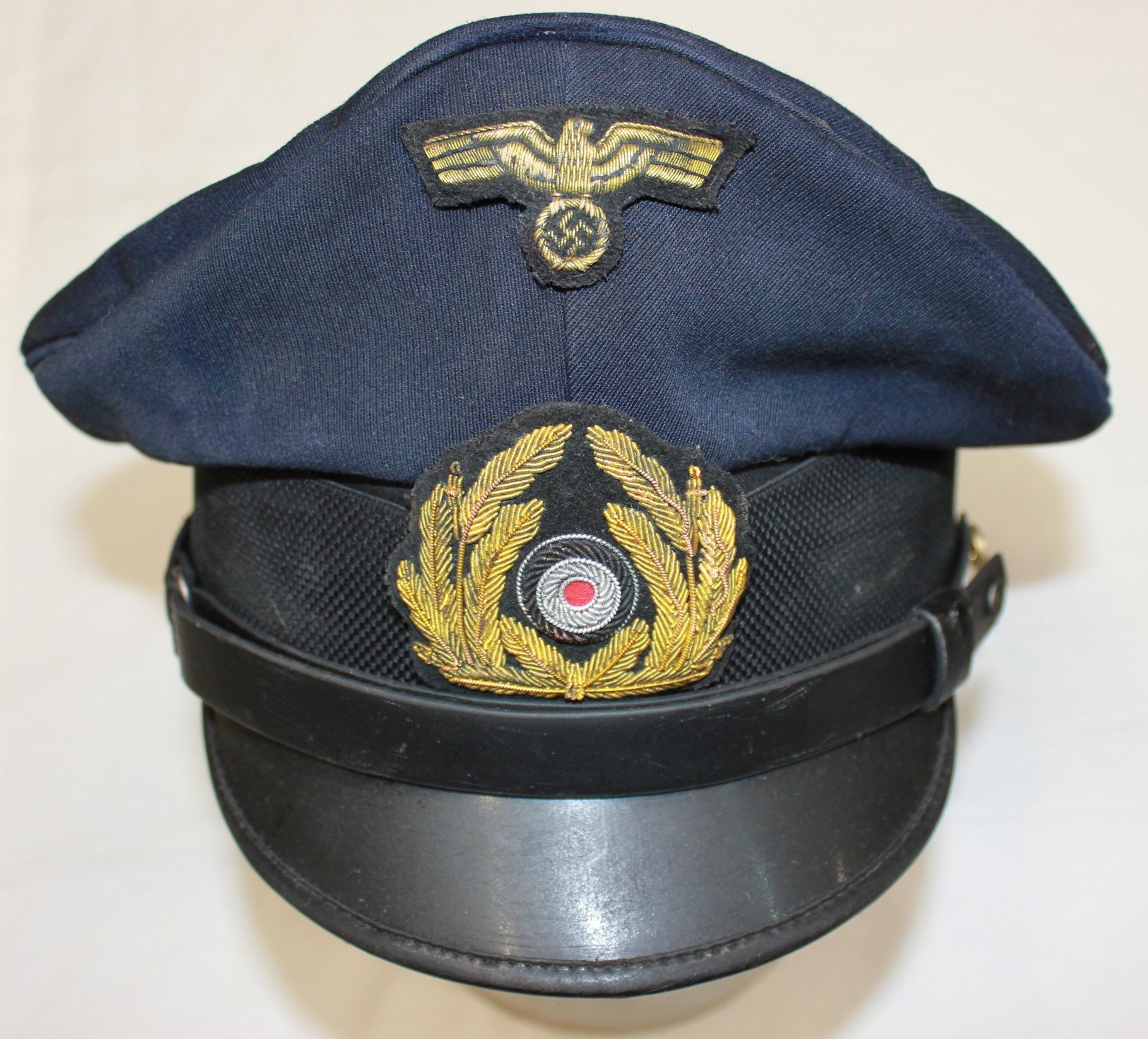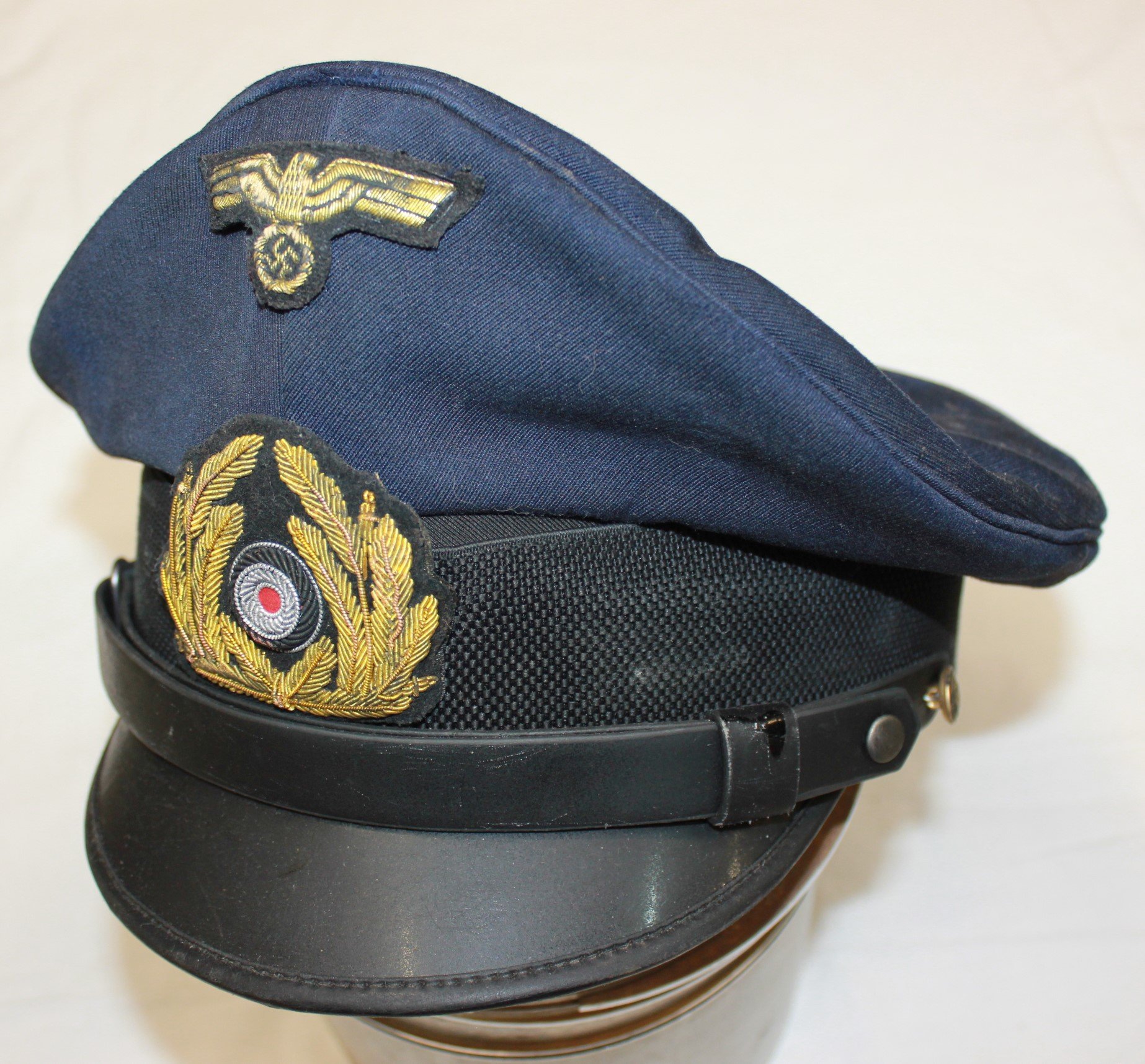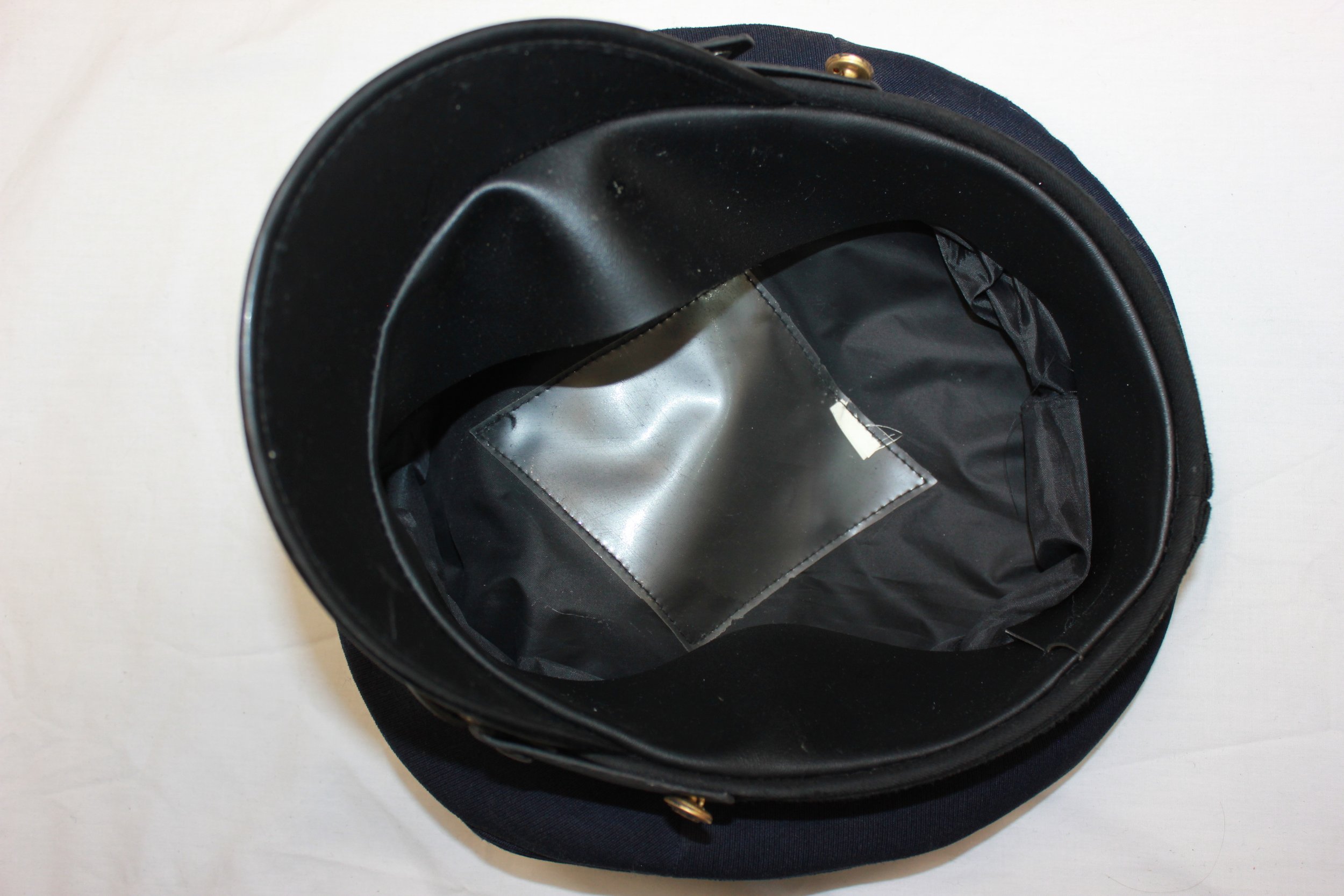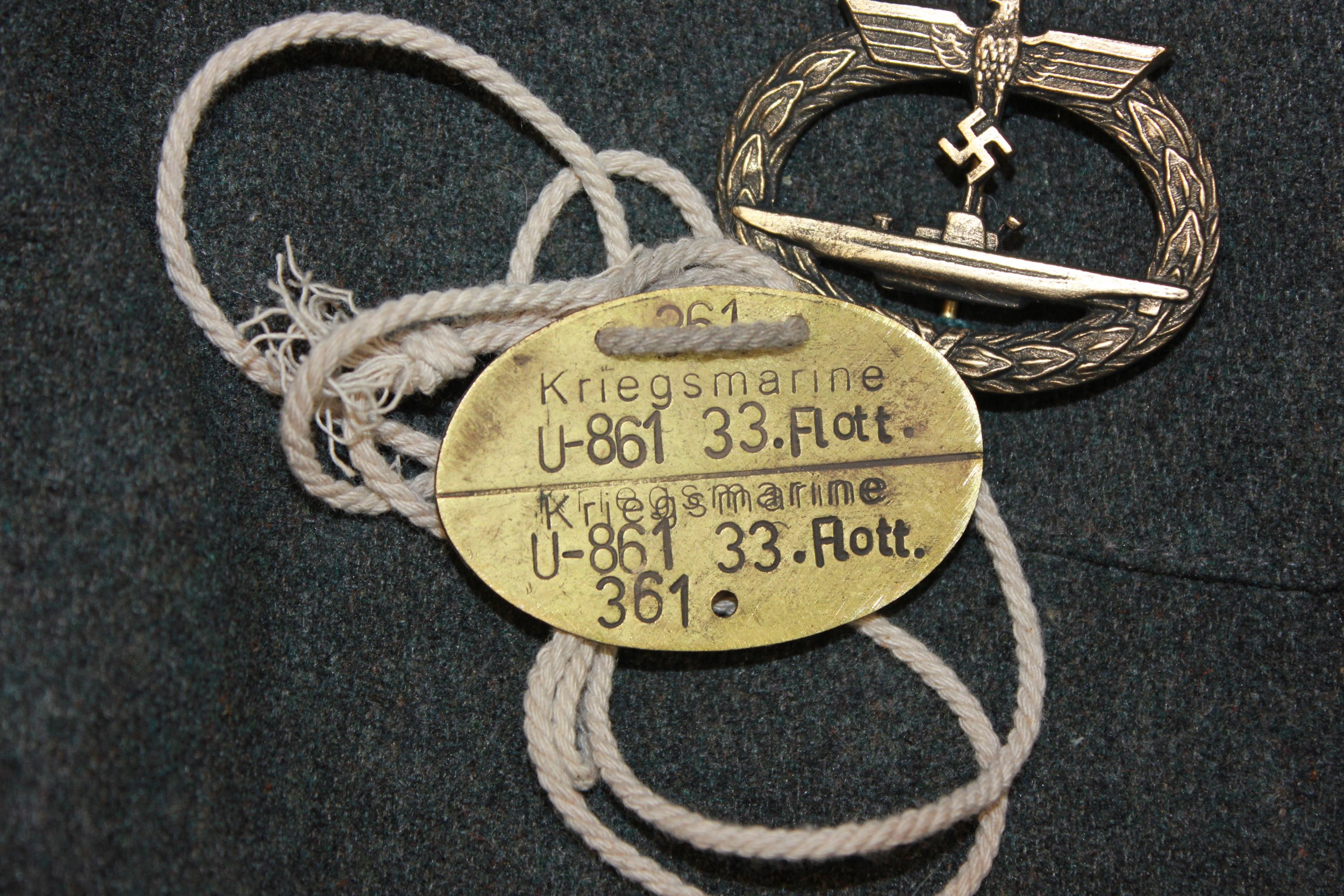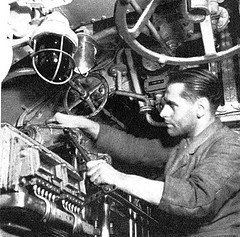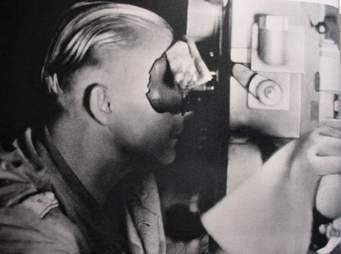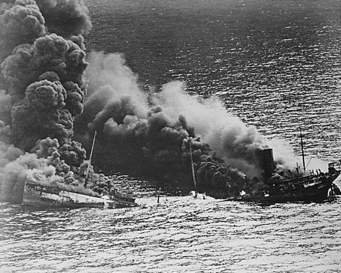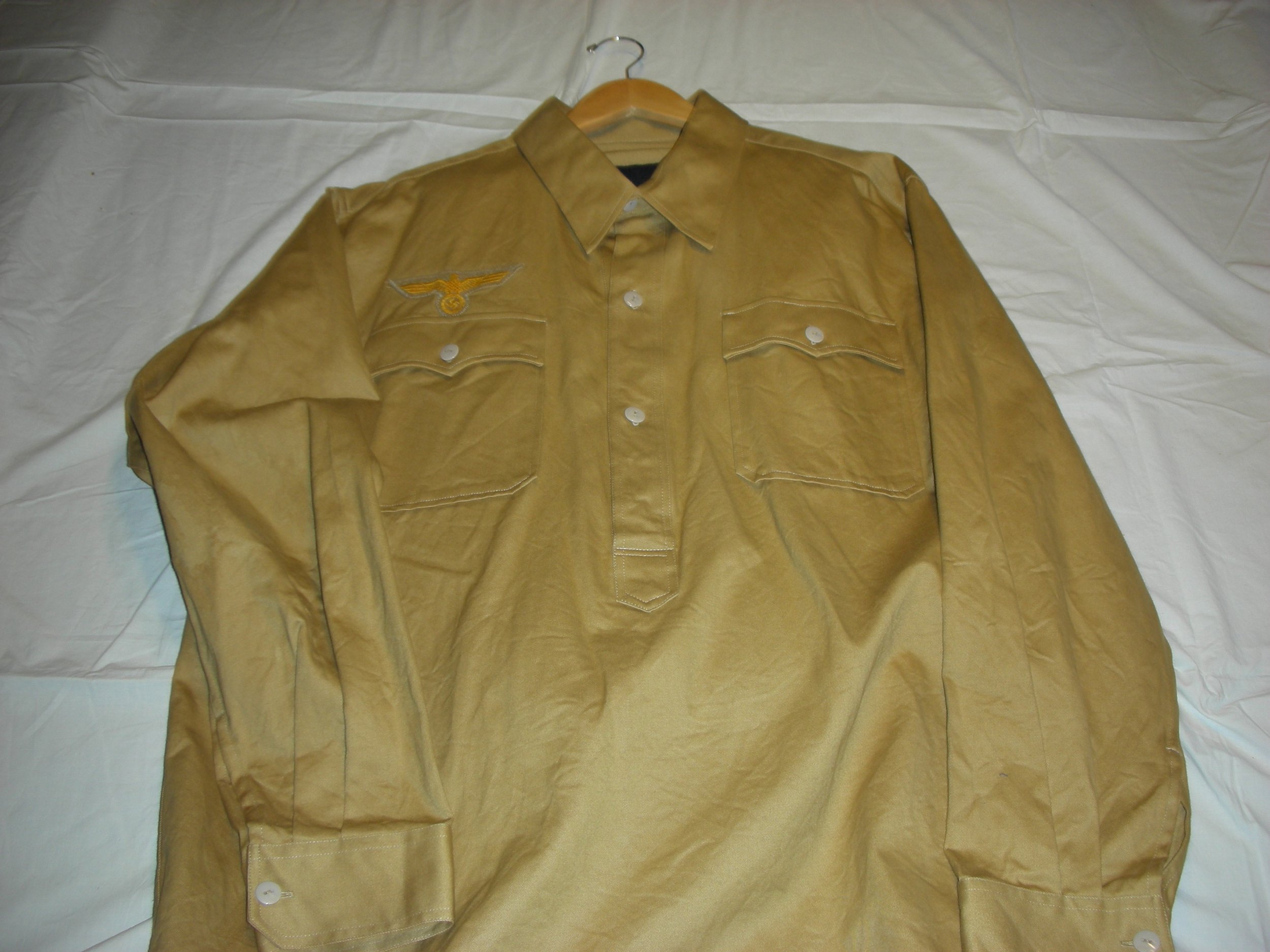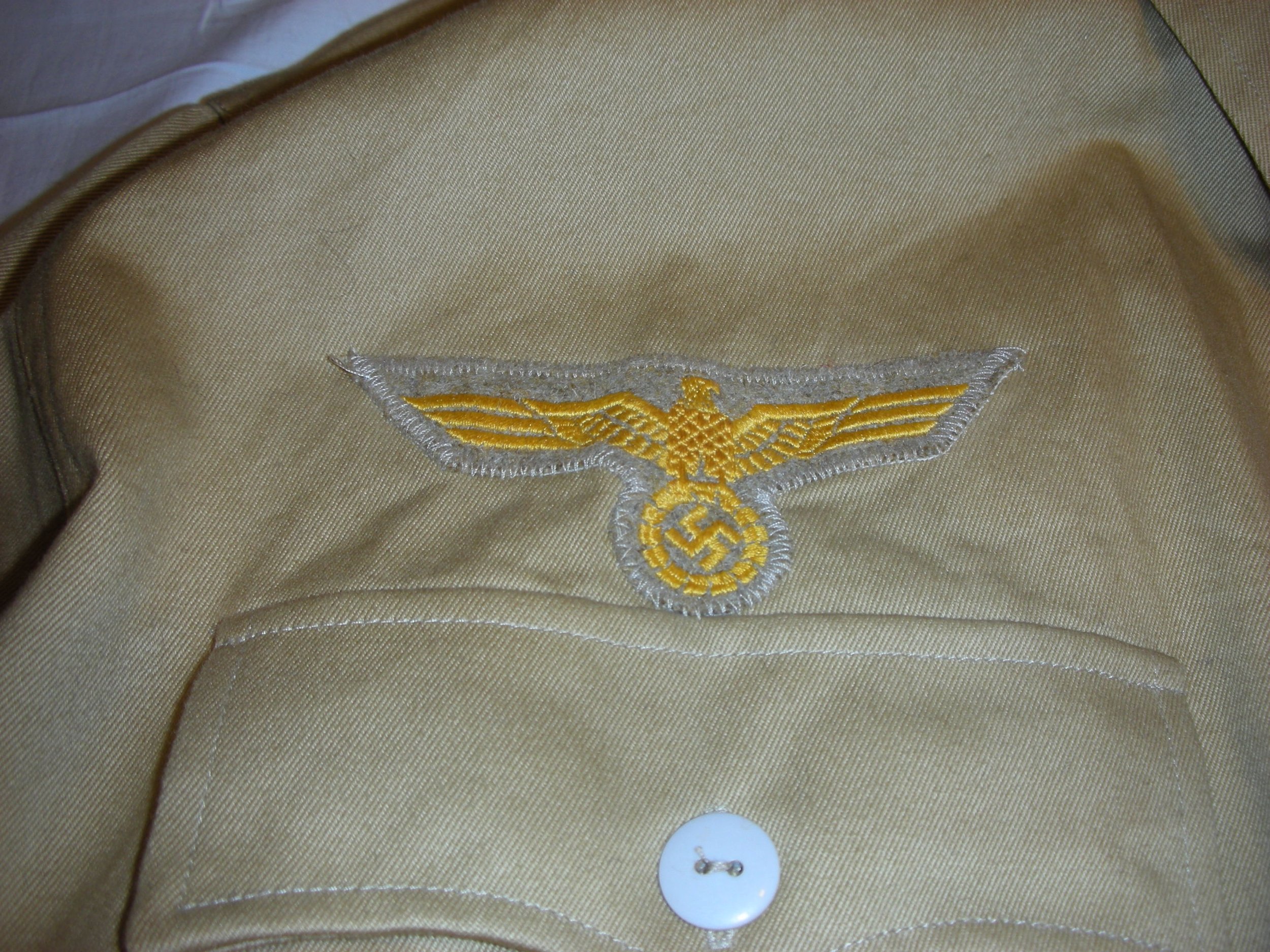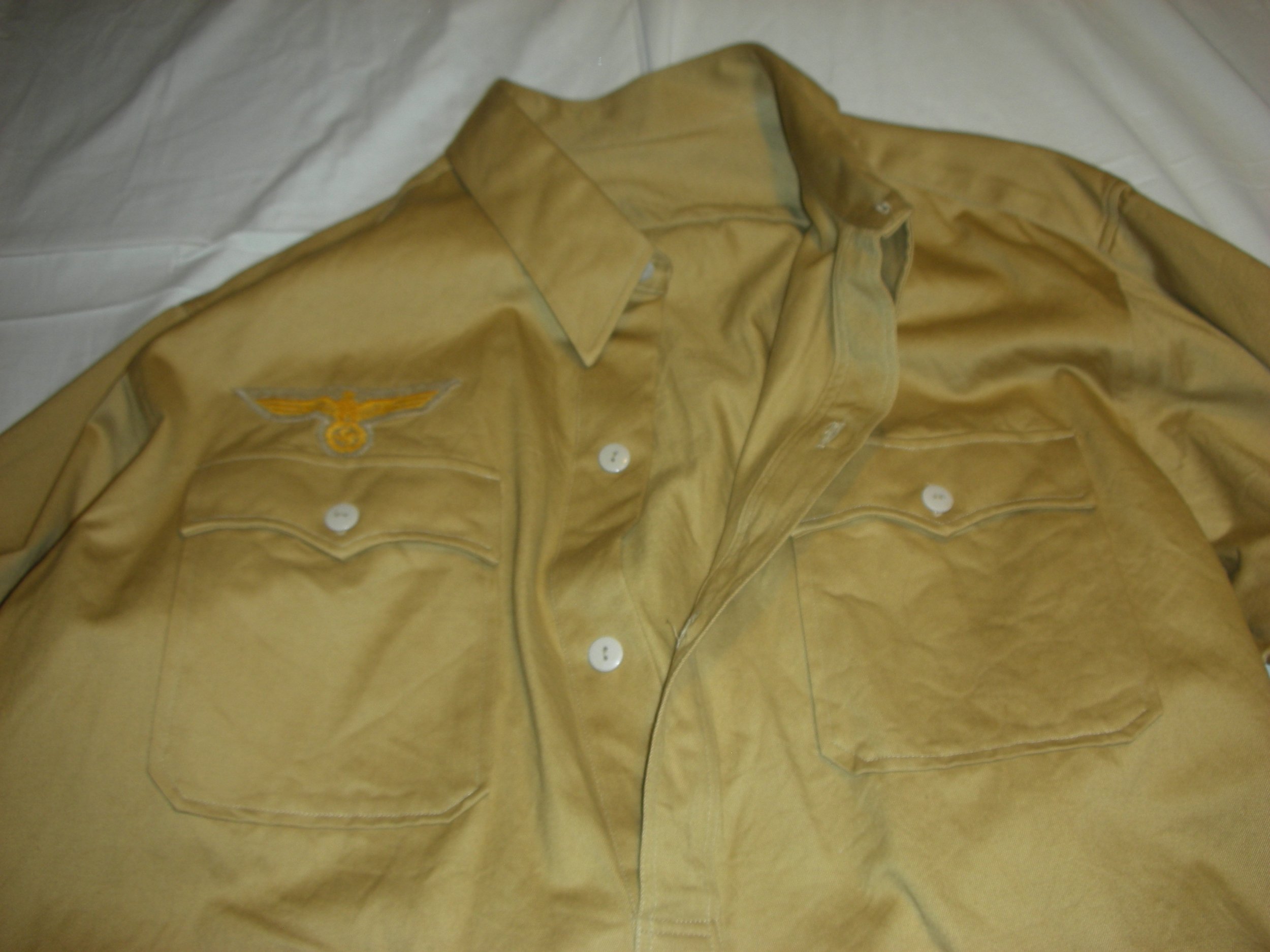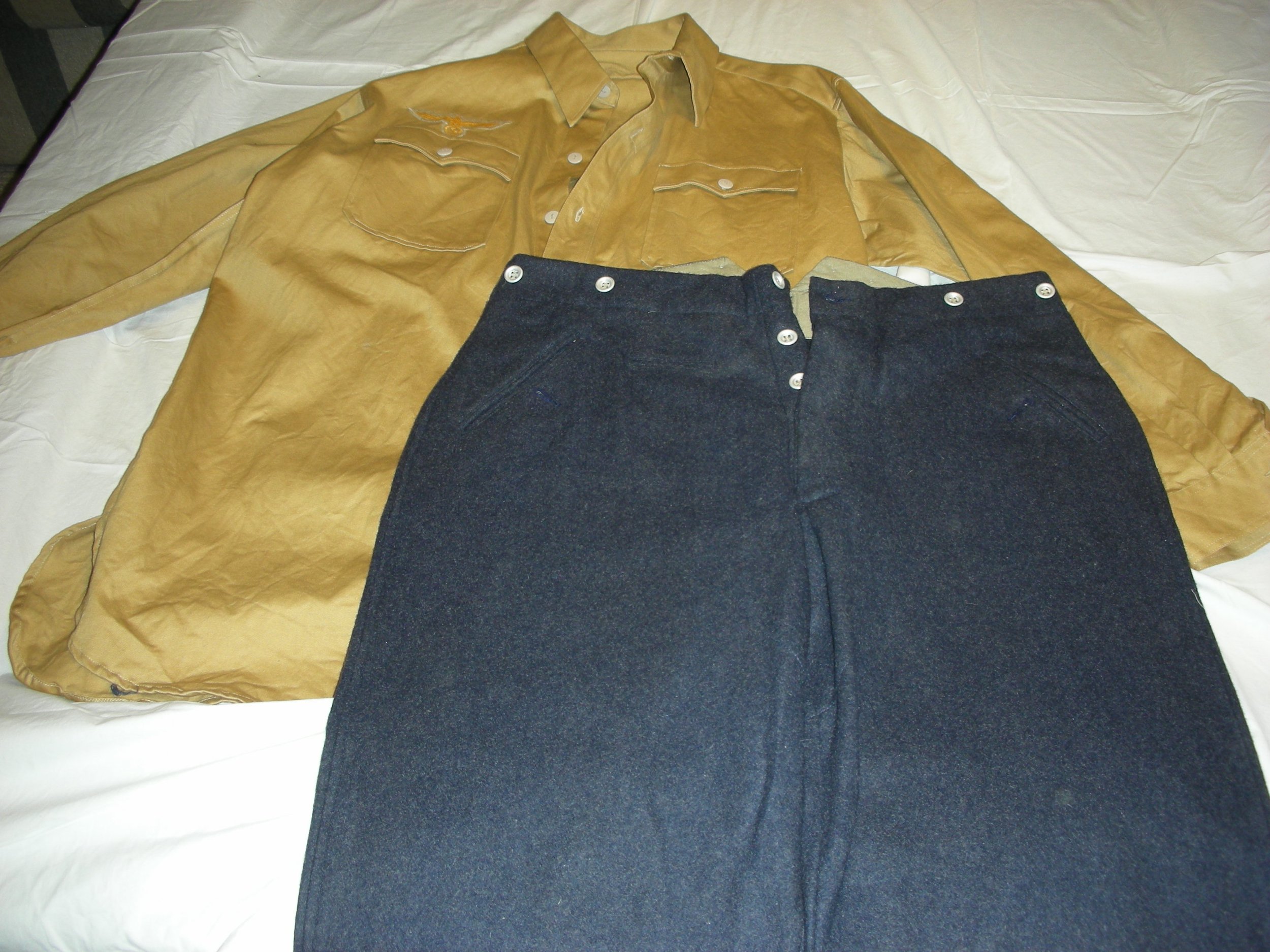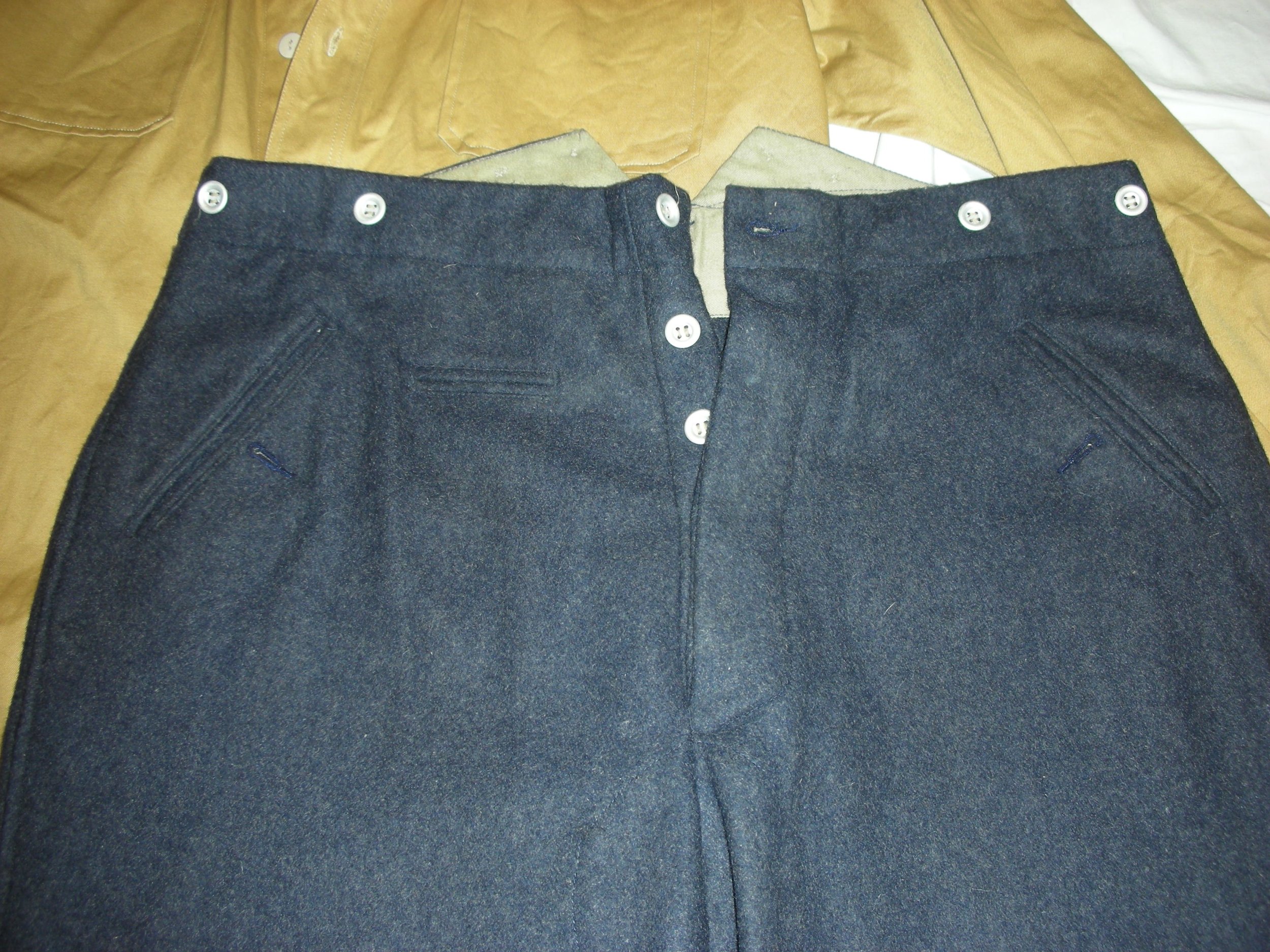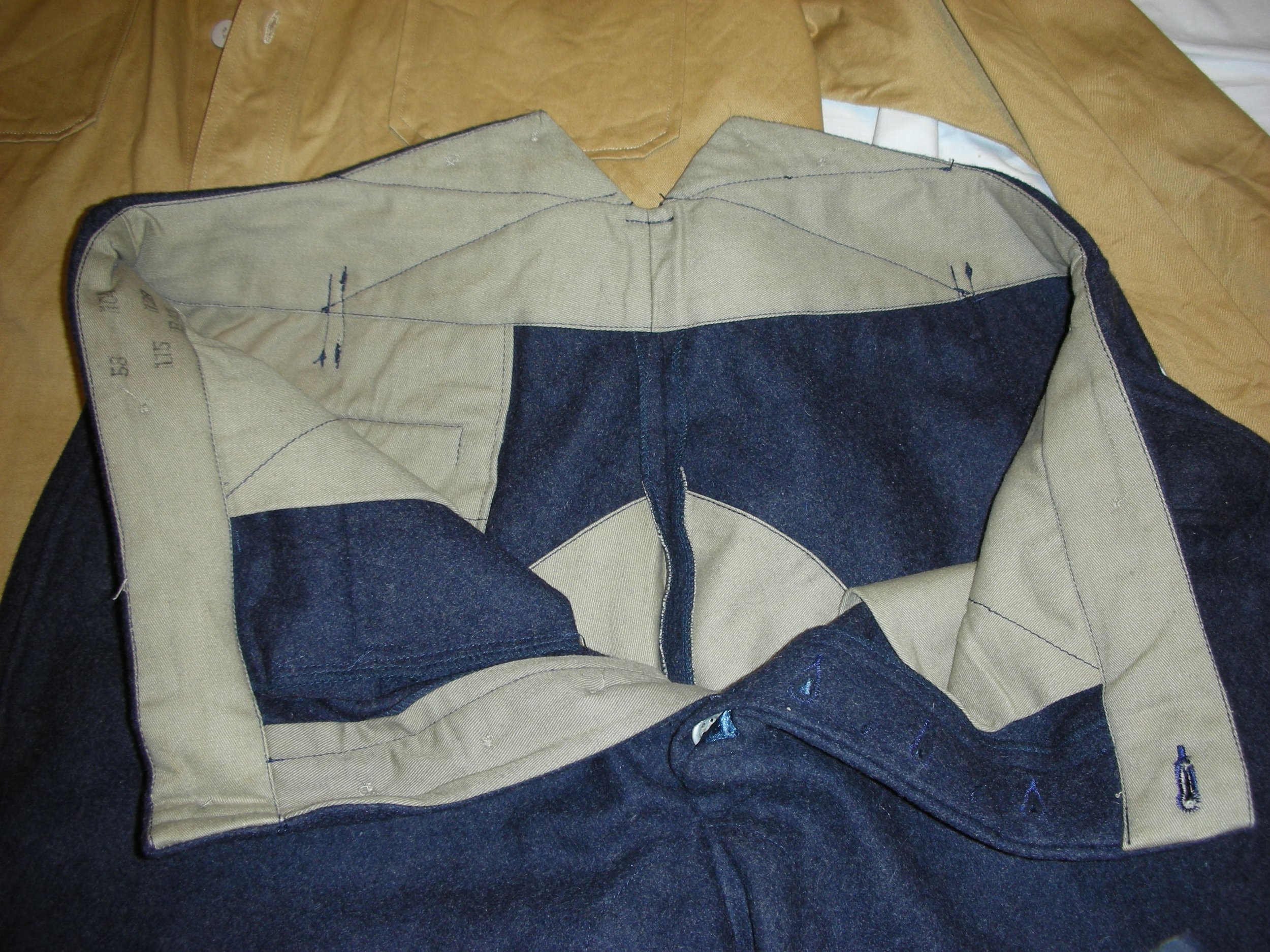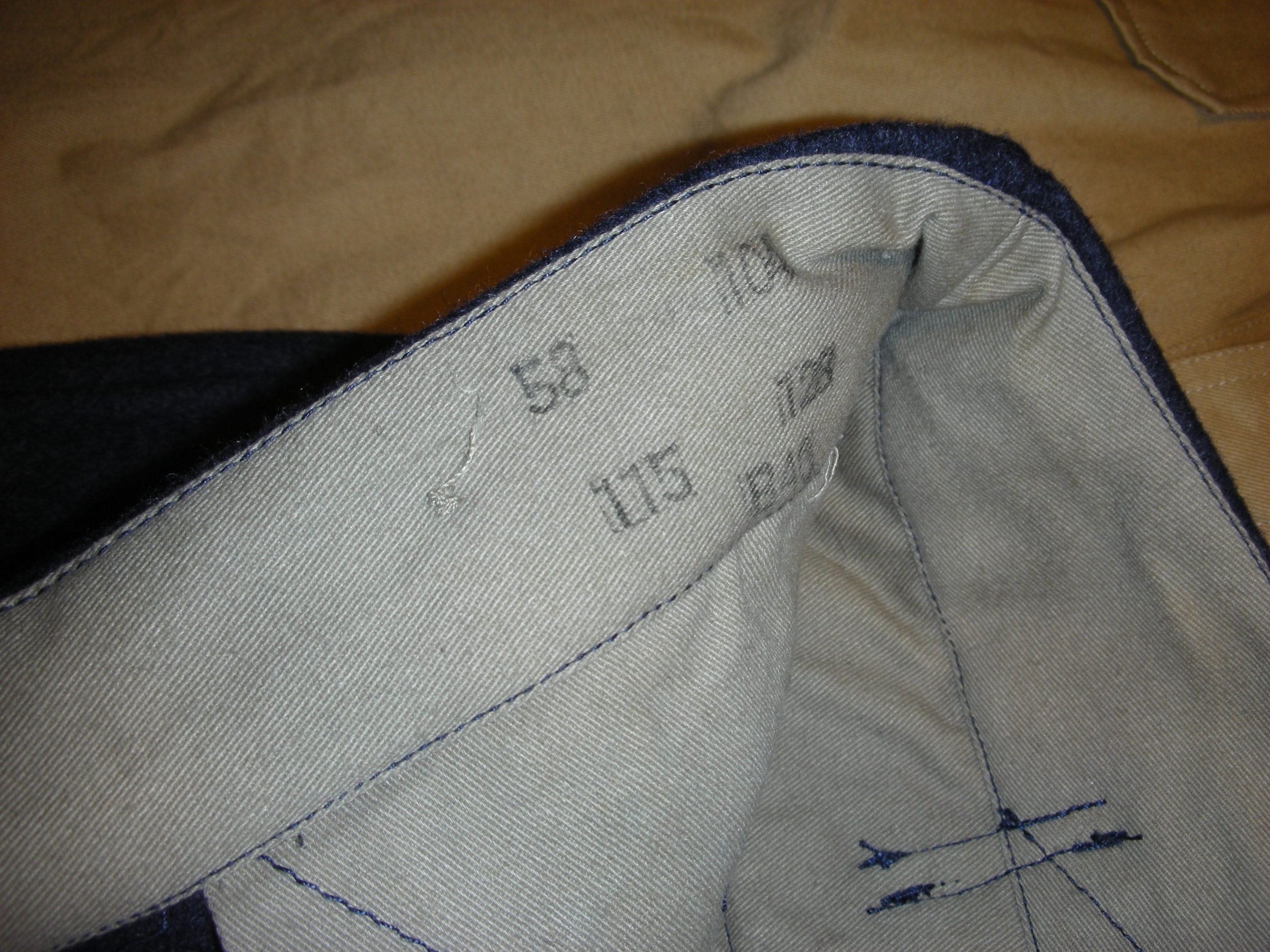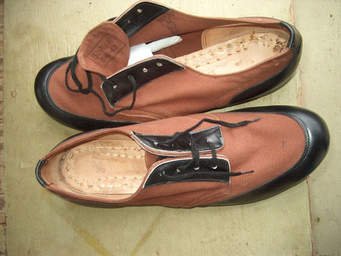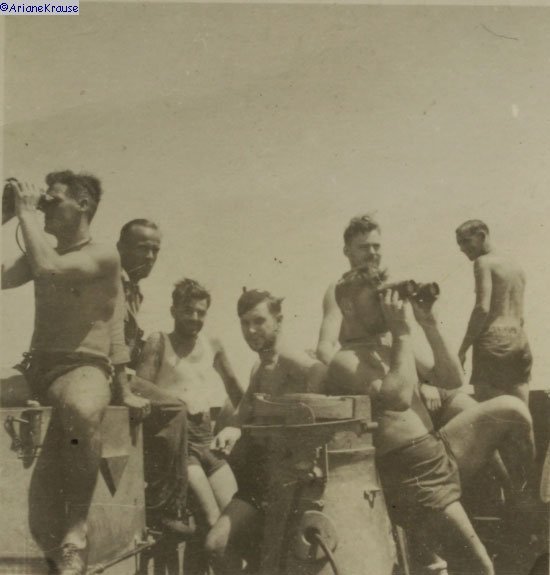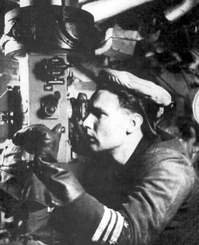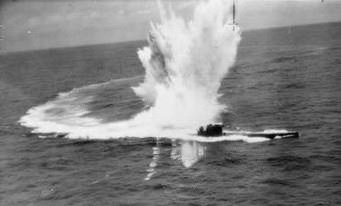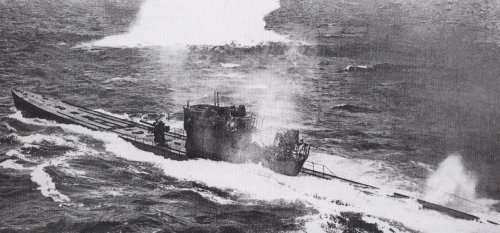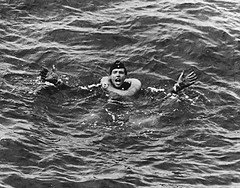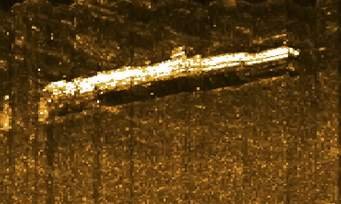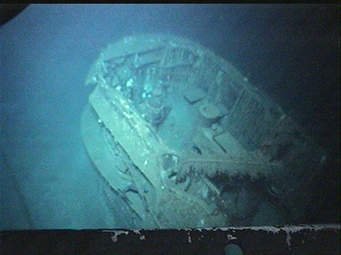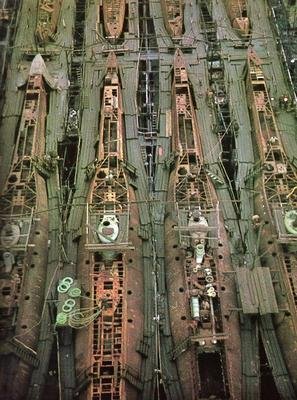Untersee-boot (U-Boat) Crewmen:
Korvettenkapitan, 11th U-Boot Flotilla:
The 11th U-Boat Flotilla (German 11. Unterseebootsflottille) was formed on 15th May 1942 in Bergen, Norway. The flotilla operated mainly in the North Sea and against the Russian-bound JW-, PQ-, and RA- convoys in the Arctic Ocean.
The Flotilla operated various marks of the Type VII U-Boat until September 1944, when it had an influx of some Type IX boats from France. It also was the only flotilla to field the Type XXI U-Boot for operational use, but the war ended before the U-2511 saw any action. The Flotilla was disbanded on 9 May 1945 with the German surrender.
Korvettenkapitän or Lieutenant Commander was obtained by many successful U-boat commanders and usually meant the end of the patrols at sea and a job overseeing something much larger than 1 U-boat.
Gone is the white-topped commander’s cap, replaced with the standard blue top while at sea. He displays the Flotilla’s insignia of the Eisbar on the side of his cap in traditional style. The single set of oak leaves on the visor indicates his authority, as do the shoulder boards on the overcoat.
The heavy overcoat helps to cut the cold as he watches the return of his boats. Interestingly, the buttons are cast in glass and painted gold, possibly to prevent tarnish from the salt air. Depending on circumstances, he can wear the standard Kriegsmarine officer dagger suspended from the inside of the jacket or refer jacket as well as the brocade belt. With the uniform, he wears the standard officer’s shirt, trousers, and shoes.
Steurmaat U-1231:
When surrendered in May 1945 at Loch Eriboll, Scotland, U-1231 presented captures with a load of wines; an interesting twist when it’s considered that the boat launched on its second and final war patrol on 27 April 1945, 18 days later surrendering at Loch Eriboll in Scotland.
While other boats were captured with interesting cargo, all of these were official, such as needed medical or commercial goods, or scientific goods going to Japan. When she sailed U-1231, it was for a war patrol in the Atlantic. The captain could have possibly guessed that the end of the war was very near, but was not certain. Fine, but not exotic wine could not have been that great of a merchant venture. Whatever the reason, it became the property of the Royal Navy.
The Steurmaat transferred onto U-1231 following at least one war patrol that had included some combat Success as his Uberzieher or Pea Coat displays the Eisneres Kreuz II. Klasse and the U-Boot Kriegsabzeichen, which was normally awarded after 2 war patrols, his Bordmutz displays the Boat’s Seepferdchen or Seahorse Emblem. A middle-ranking sailor, he was probably aware of the boat’s cargo, and an interesting conversation at reunions in later years.
Marineoberstabsarzt, Jobst Schäfer:
This is a great story, I need to find it, A Doctor, Submariner! If I recall-flew an observation / rotary aircraft looking for shipping.
Obermaat, U862 Sanitatsobermaat:
Funkerbootmann, U-177, South Atlantic 1943:
U-177 was a Type IXD2 Submarine, She was launched in October 1941 and commissioned in March 1942. The U177 is recognized for sinking 14 Ships, most during her Second Patrol under the Command of Korvettenkaptain Robert Gysae. U177 was sunk in February 1944, during her third patrol in the Atlantic west of Ascension Island by U.S. Navy Aircraft.
“Pollywog to Shellback” is an Ancient Mariner tradition every sailor the crosses the Equator for the first time has to take part in this ritual ceremony. The Traditional importance of this initiation rite is so strong it over-powers even the danger of attack, as crewmen of the “U-Boot” donned costumes of Seafaring Lore and hazard the Pollywogs who are crossing for the first time, by making the crossing they prove they can take the long hard voyage, and worthy of being a crewman onboard the vessel. Rank and Position hold no importance in the ritual, with the Old Hands, normally Chiefs, creating and planning the marshaling of the initiation rites.
The Troppenhemd u.Kurzhose. For voyages that would take the sailors into the searing heat of the South Atlantic and Indian Ocean, the Kriegsmarine issued khaki uniform items, including the Troppenhemd u. Kruzhose. More a field uniform than sailor-like, it was designed to be worn with only the Kriegsmarine National Eagle sewn on it above the Right Pocket. Often, the shirts had shoulder-boards and the decorations added to them as they were worn nearly all the time.
While he was on watch, sitting at the top of the conning tower, he would likely have worn the “Troppenhelm”, a pressed cork covered in cloth item often called a Sun-Helmet. They were frequently seen wearing khaki or white Schiffchen, or a khaki M41 Troppenmutz. U-Boot Crews of WWII were usually quite relaxed; the sailors were volunteers, and they needed them; it was more important that they were comfortable and alert while on a battle mission.
This Funkerbootsmann has sewn loops on his shirt to hold a Ribbon Bar to show his Eisernes Kreuz II. Klasse decoration and his 1st Klass award underneath it were awarded after the second patrol and their success.
Kriegsmarine Warrant Officer, Wearing British Uniform Stock:
When the British Expeditionary Forces were escaping from Dunkirk, in a mass Retreat back to England, they left tons of equipment and materials in France. One example of this was a large number of British Battle Dress uniform stocks stored near the beachhead. While not appropriate for the German Heer / Wehrmacht, they were warm and got to wear them in the dark, cold, and dirty confines of U-boats.
The modification was up to the wearer, this example has attached shoulder boards and pin-on national insignia. This warrant officer, the senior engineer on the vessel, has served for several years. He is a veteran of the 1st World War, shown by his War Service Cross on his ribbons bar, as well as his wound badge.
He has been highly decorated in this conflict, as well as winning the U-Boat Battle Badge as well as the U-Boat Combat Clasp in Silver. His leadership under fire has earned him the 1st and 2nd Class of Iron Cross, and his Meritorious Service Cross with Swords. He could have worn a number of different hats, we’ve shown a few here, I thought he would have had matching trousers, but surely could have worn blue trousers as well.
Stabsoberbootsmann, Max Schley, U-boat 861 :
U-boat 861 ‘Schwarzer Panther’ was a Type IXD2 class U-boat. U-861 was launched in Bremen on 29 April 1943. She was equipped with two stern torpedo tubes and 24 mines. Named the Schwarzer Panther by the Captain U-861 joined 4. Unterseebootsflottille for training on 2 September 1943, where she remained until 31 March 1944, joining 12.
Unterseebootsflottille for active service until 30 September 1944. Assigned to 33. Unterseebootsflottille as part of Monsoon Group U-861 operated out of Penang, in the Indian Ocean, from 1 October 1944 until the end of the war. On her final long trip back to Norway, the boat hauled 100 tons of zinc from Japan. South of Greenland, she hit an iceberg but reached Trondheim safely on 19 April 1945.
U-861 was commanded throughout the war by Ritterkreuzträger Kapitänleutnant Jürgen Oesten. Turned over to allies following the surrender U-861 was sunk by the British. Stabsoverbootsmann Max Schley was the senior enlisted sailor onboard U-861.
Typical KM. Shirt & Trousers:
Now, after looking at all my fancy U-Boot uniforms, this one would likely have been the most typical. The shirt and trousers in the submarine could be hot in the Mediterranean or sometimes very cold in the North Sea.
